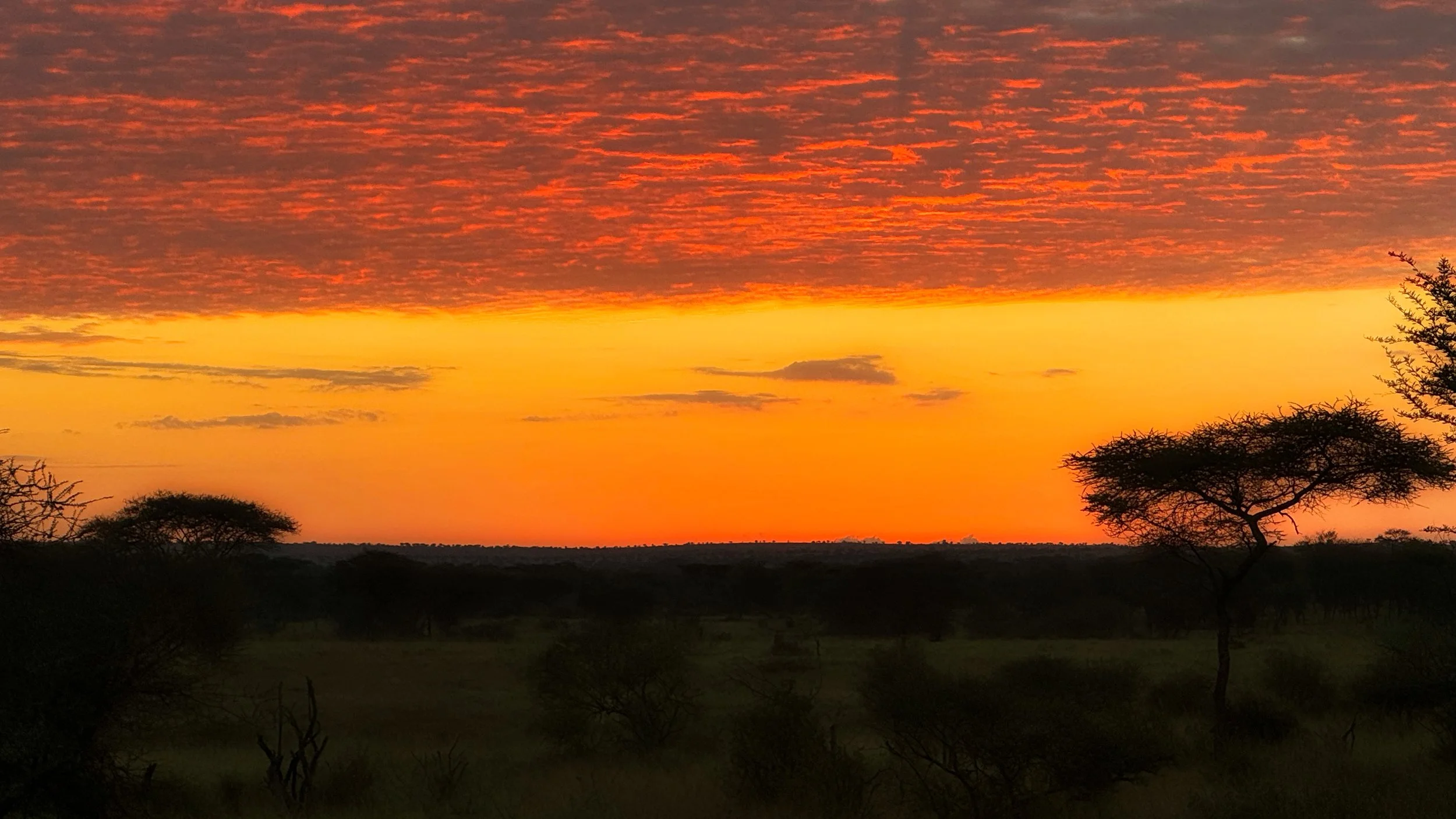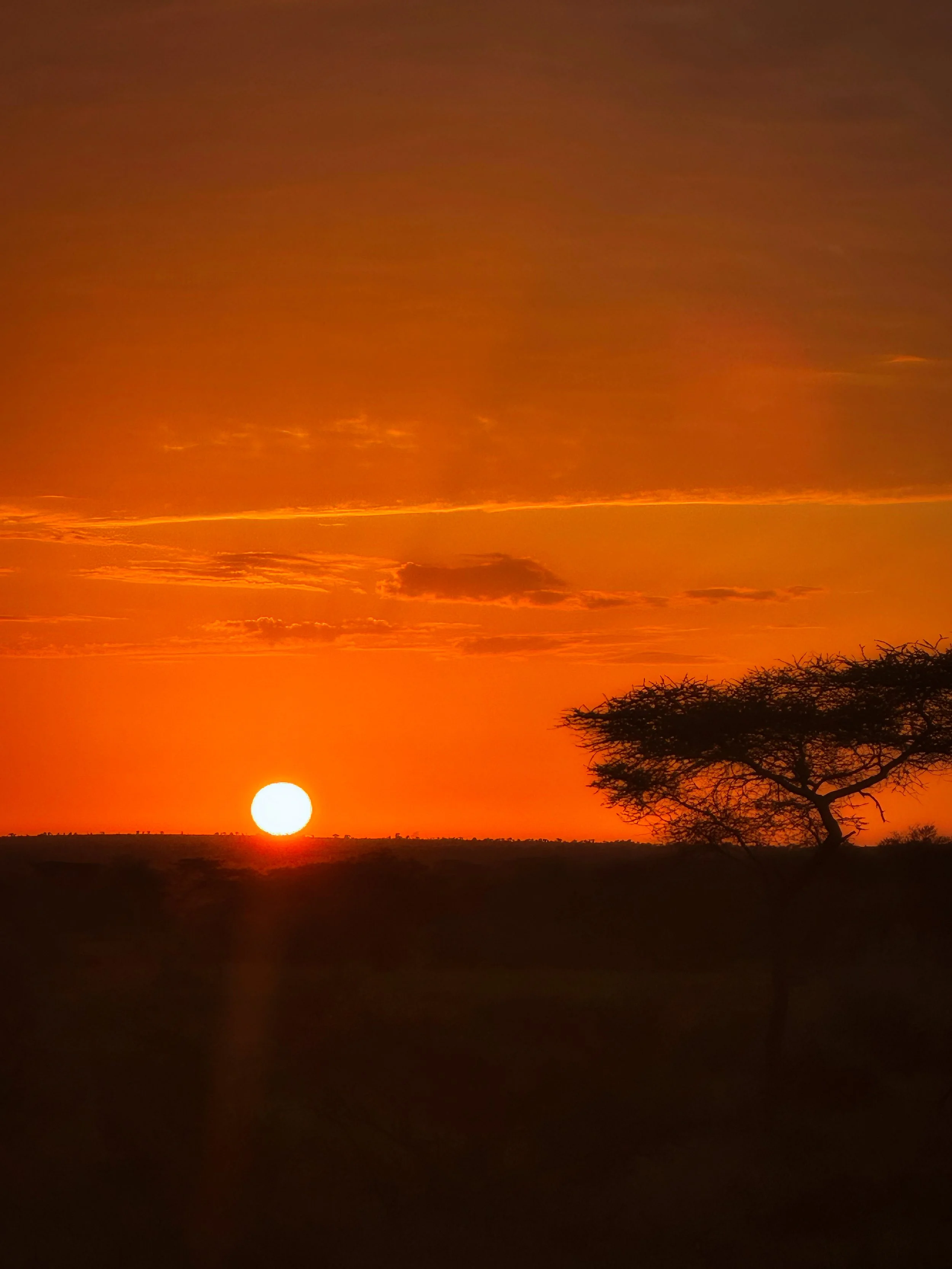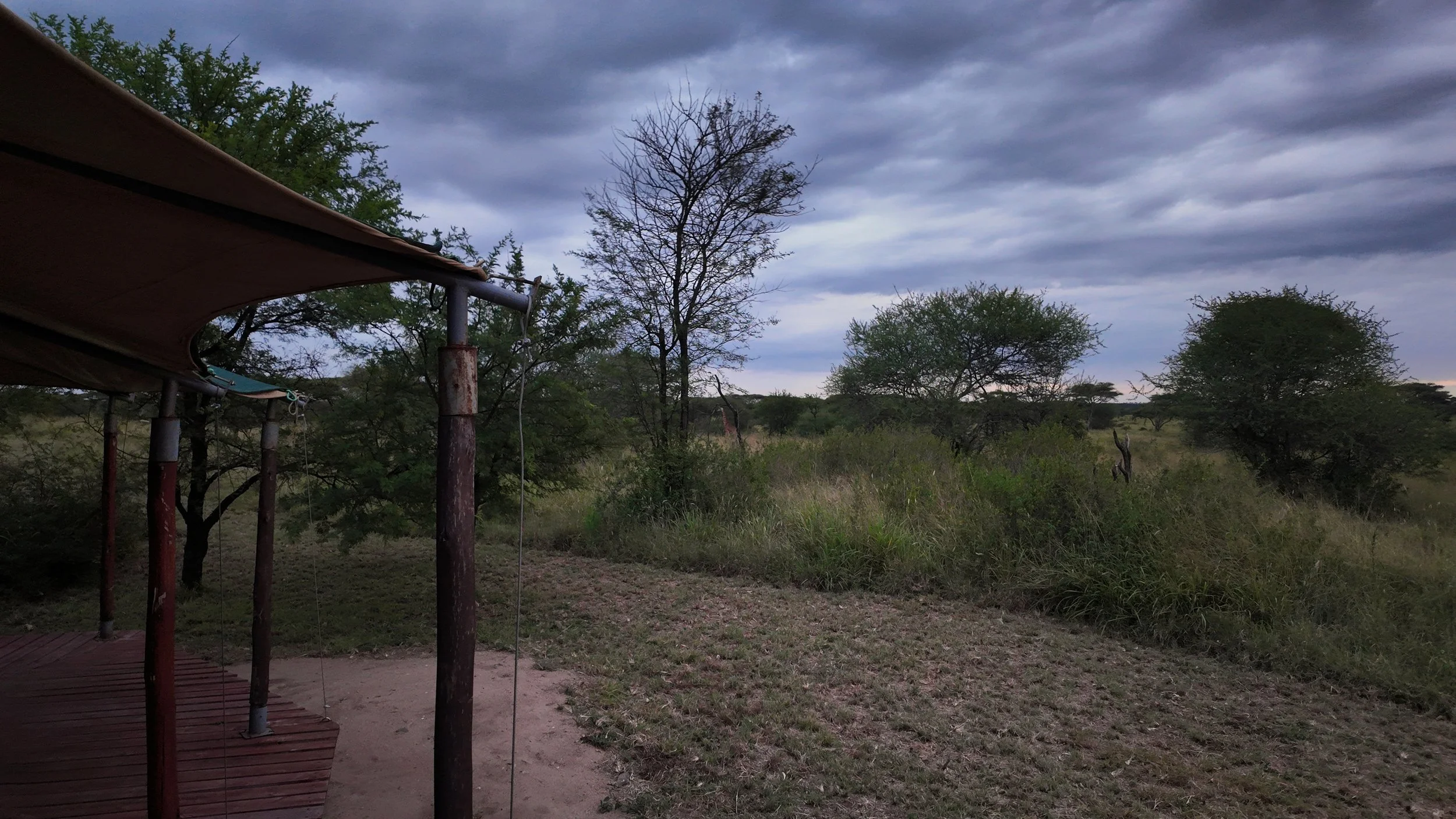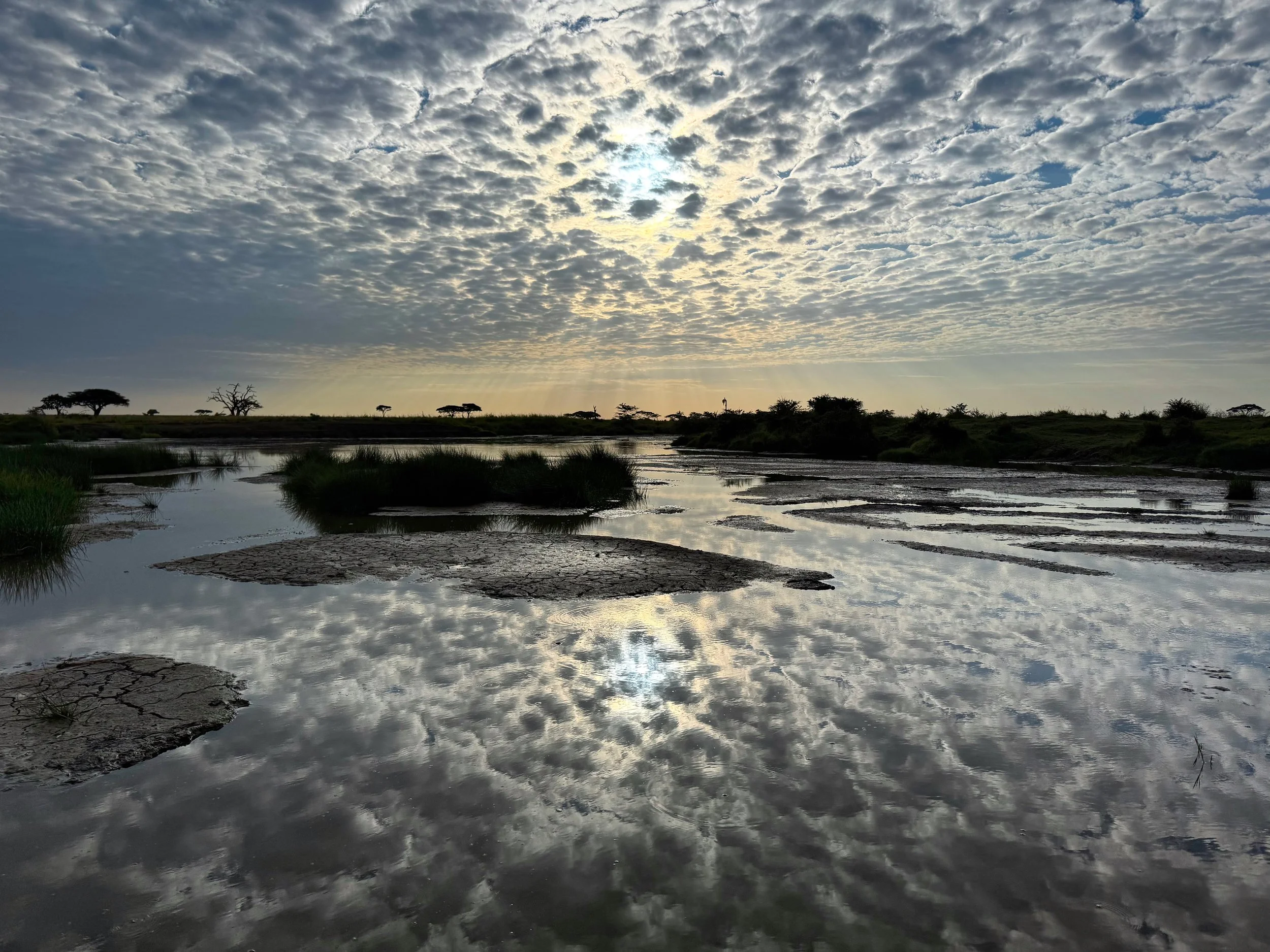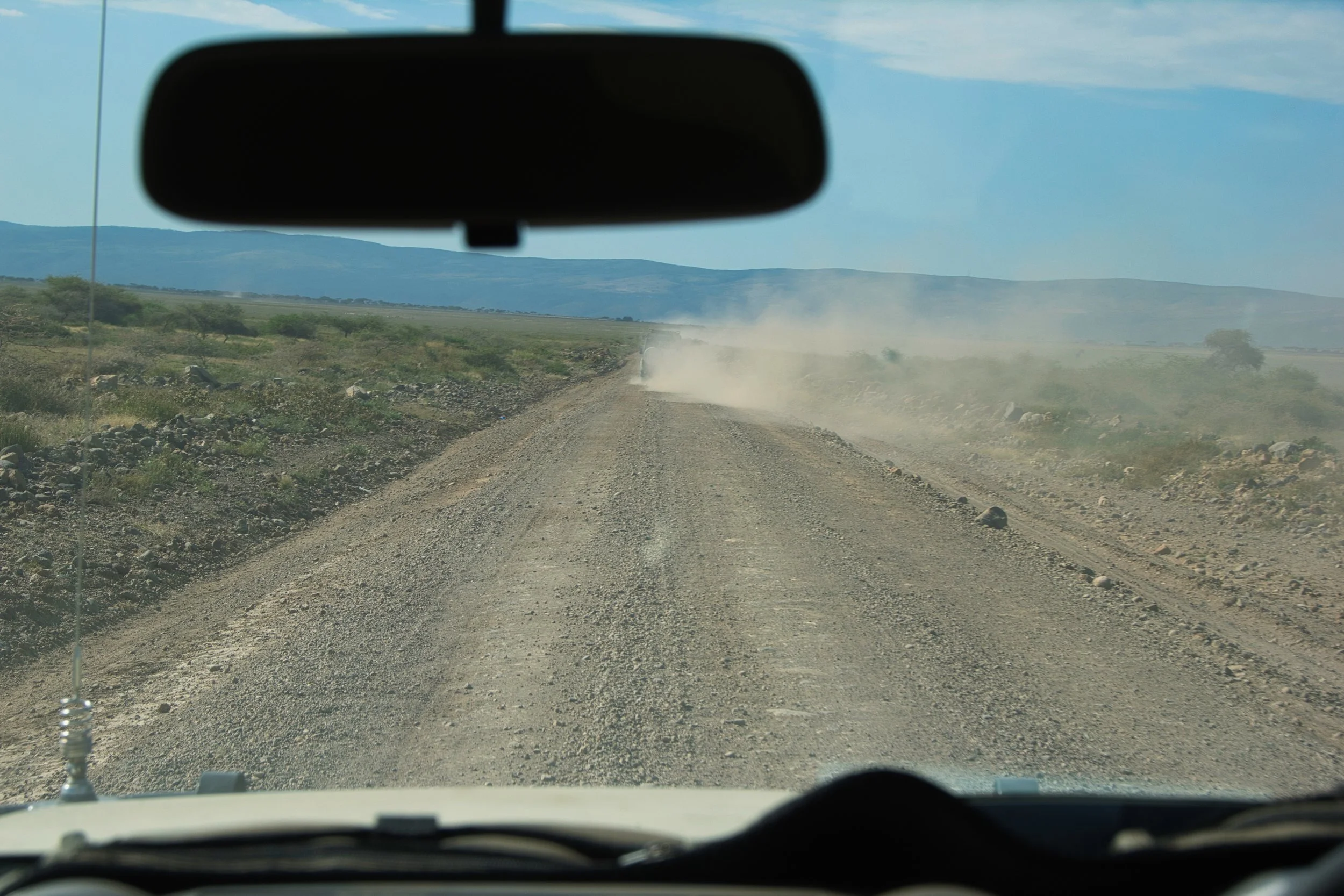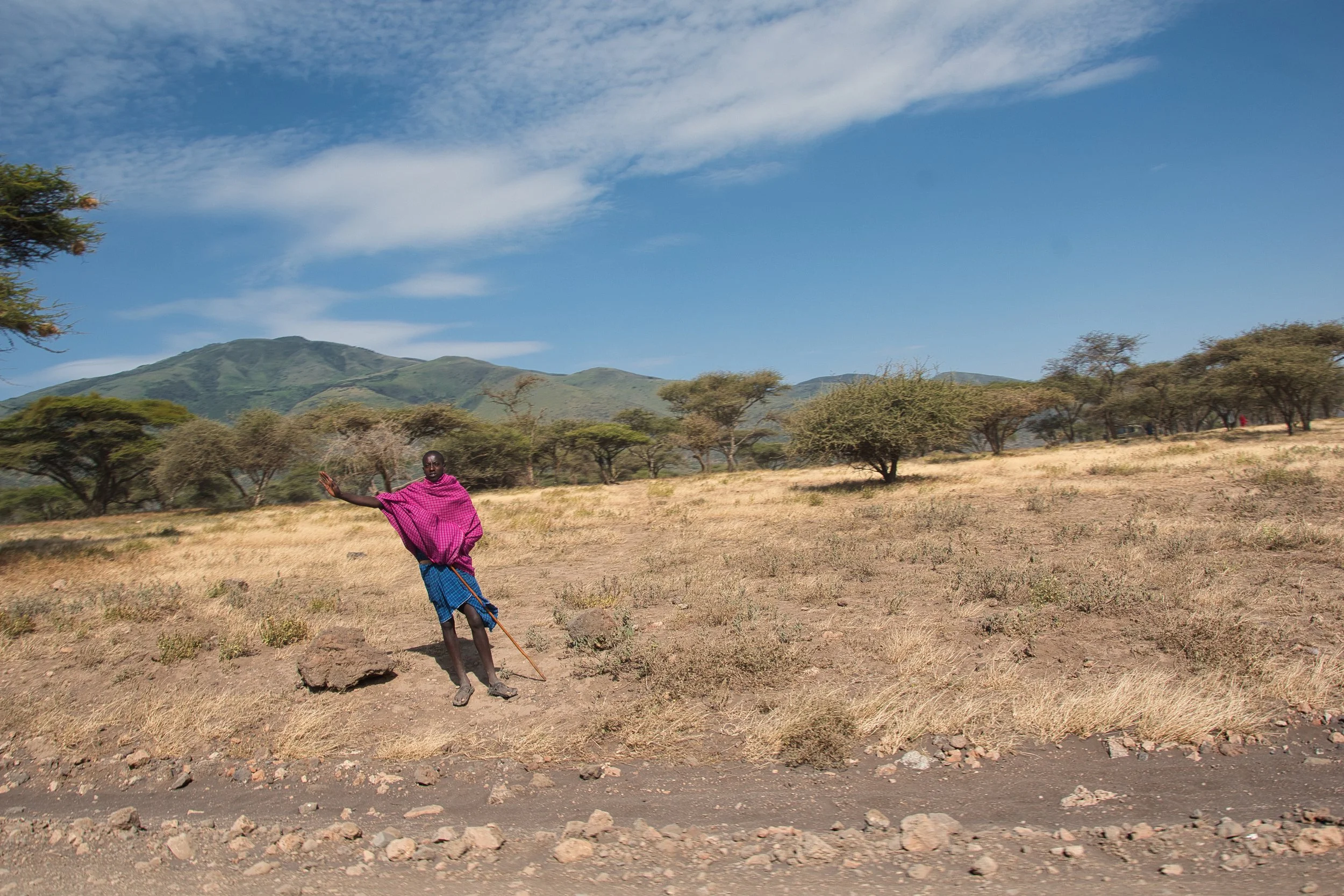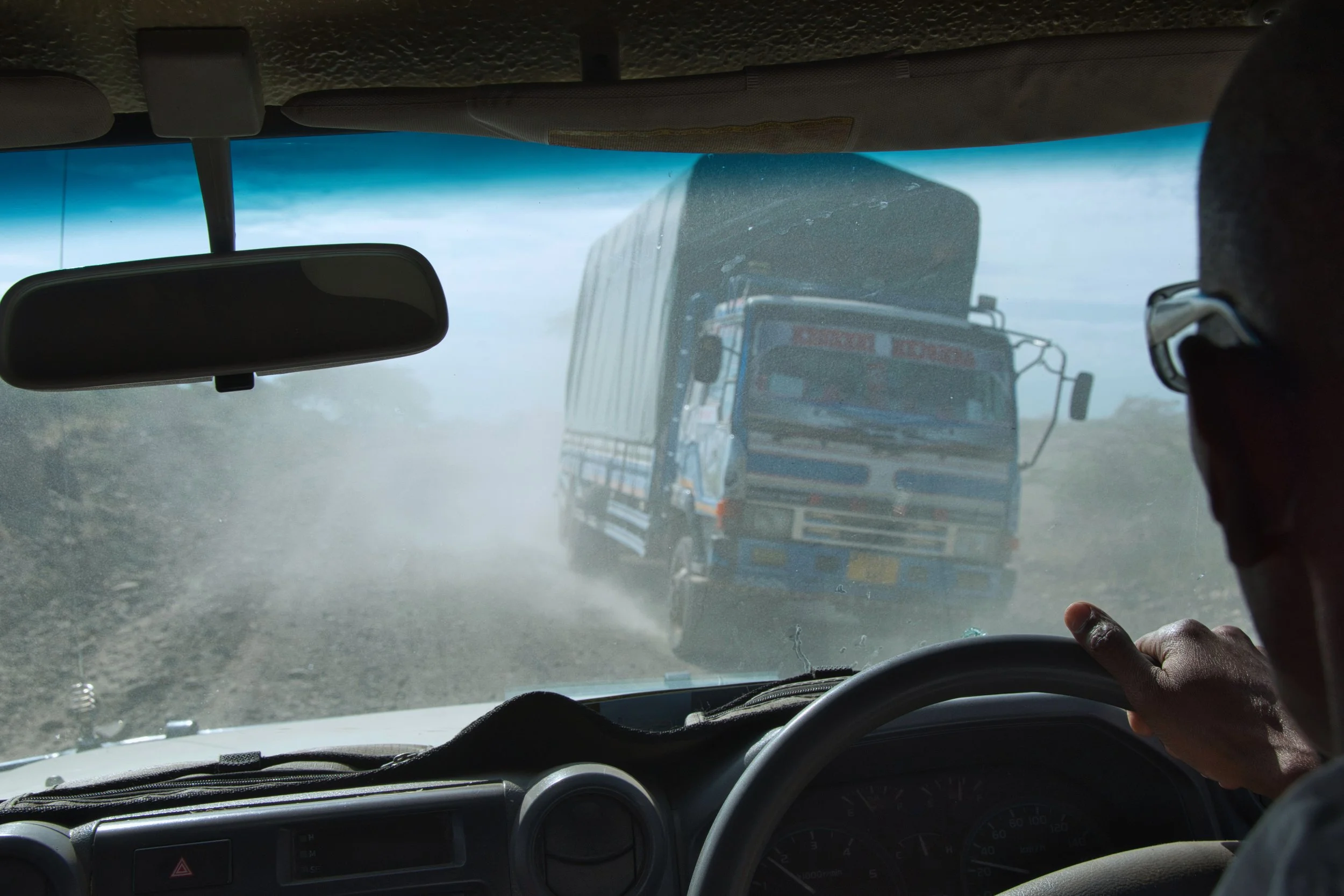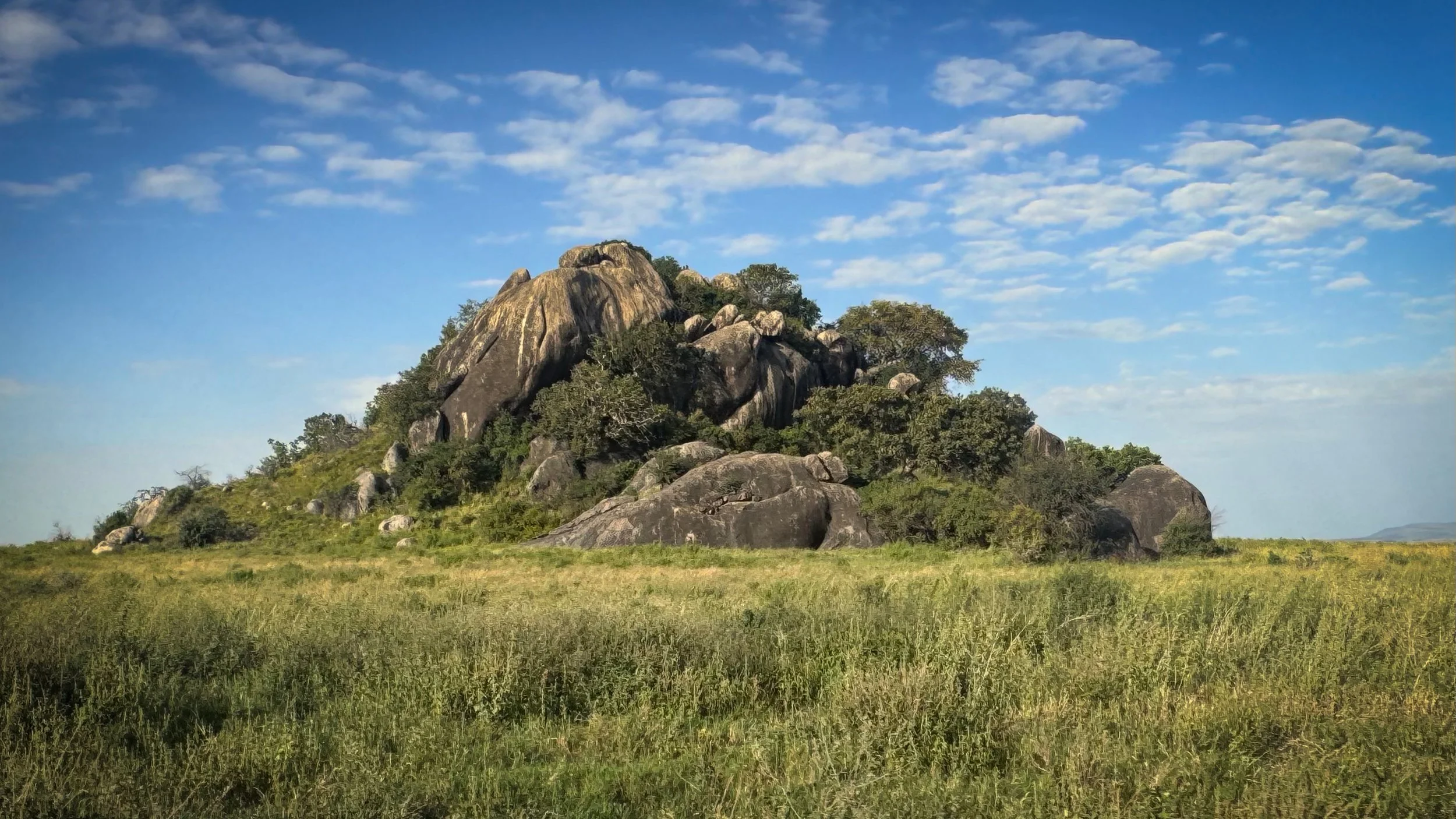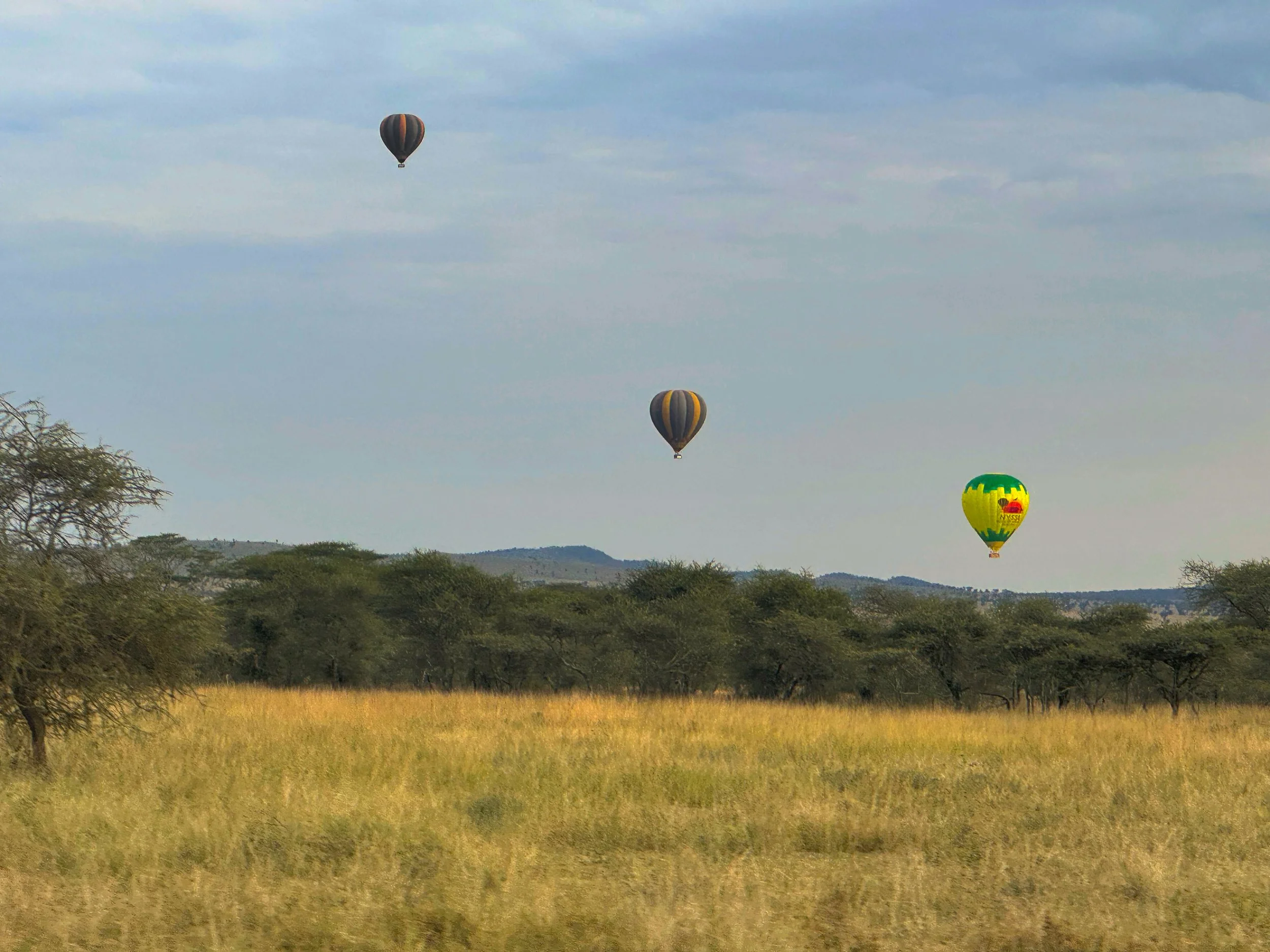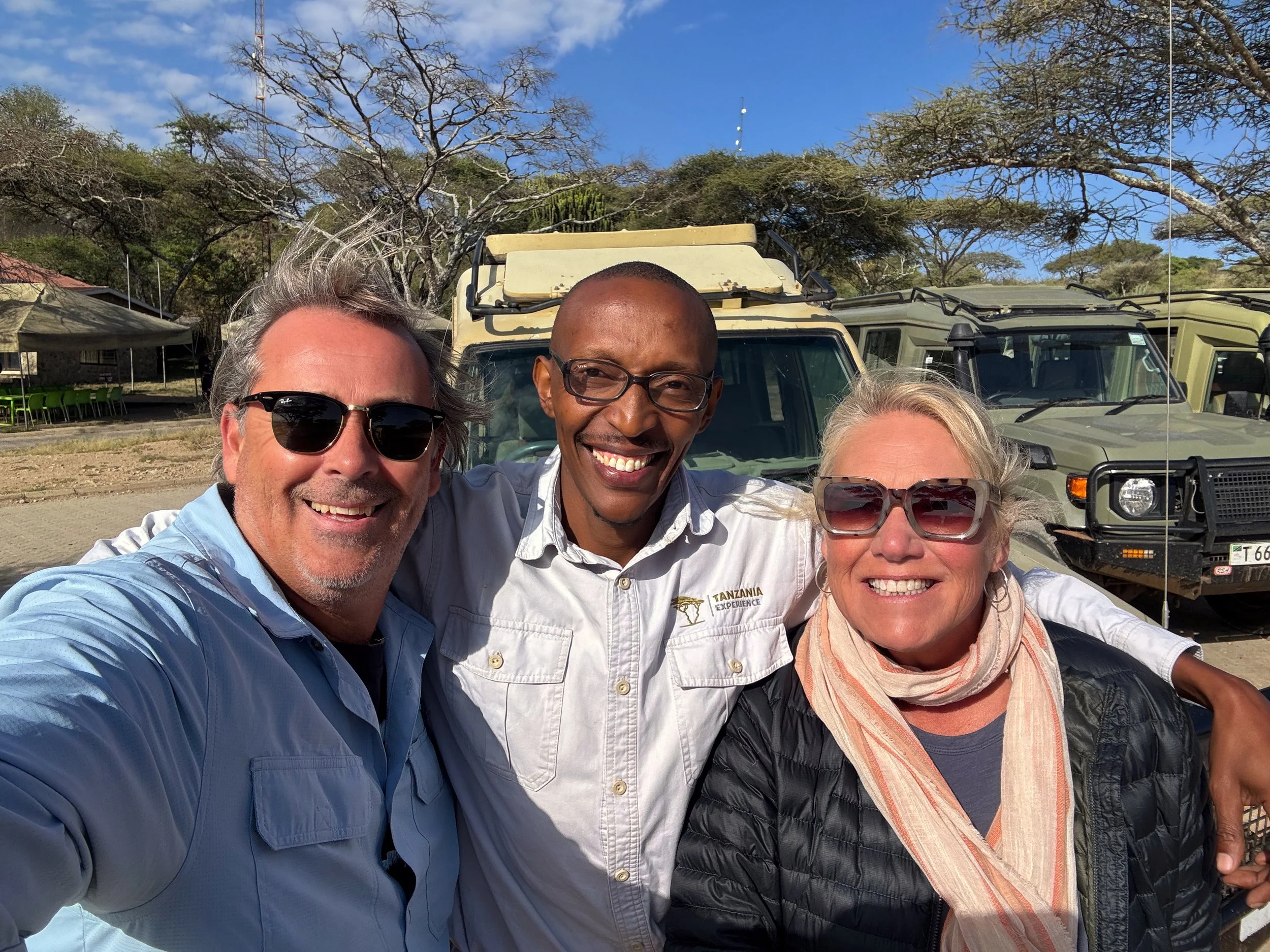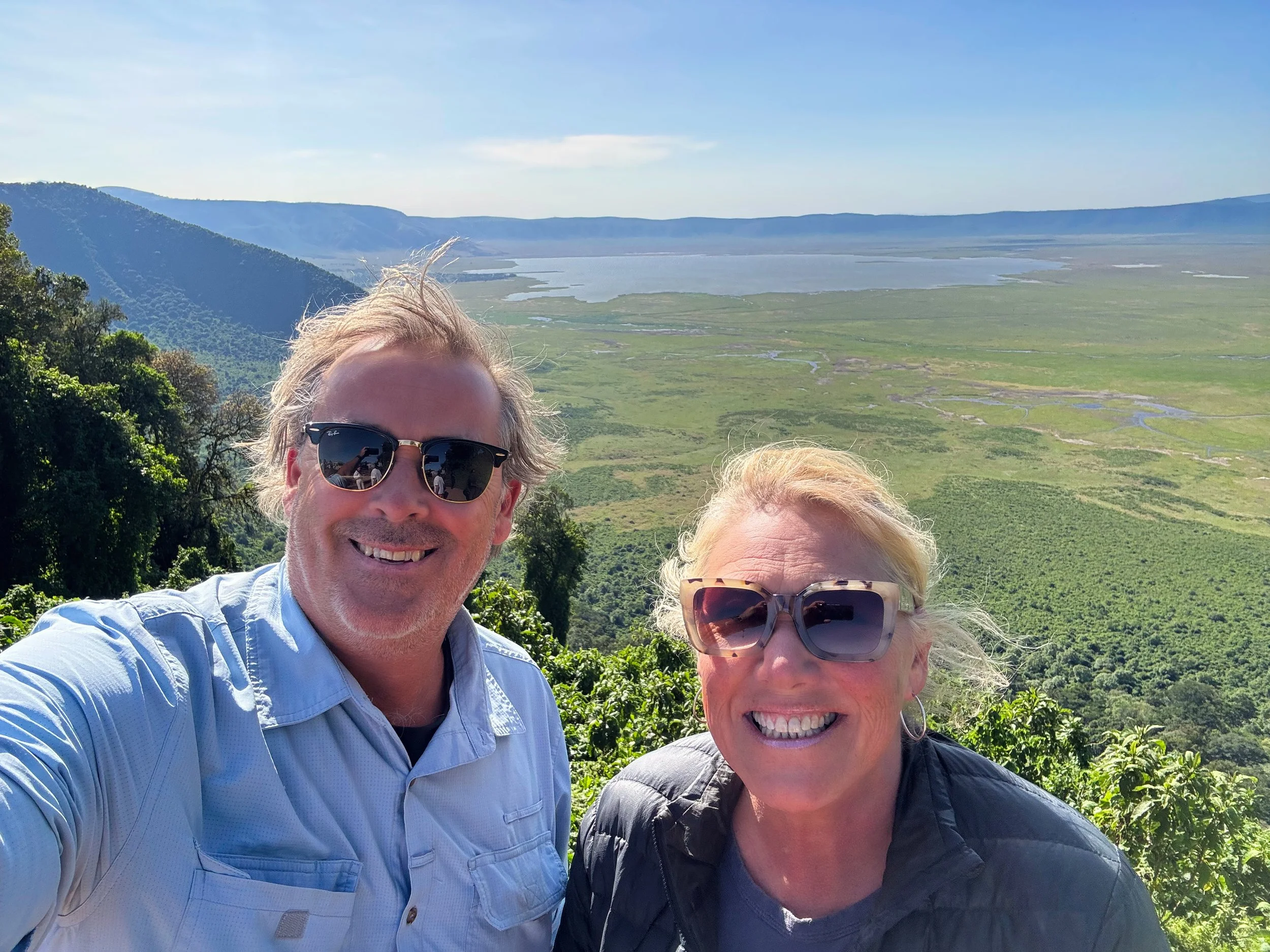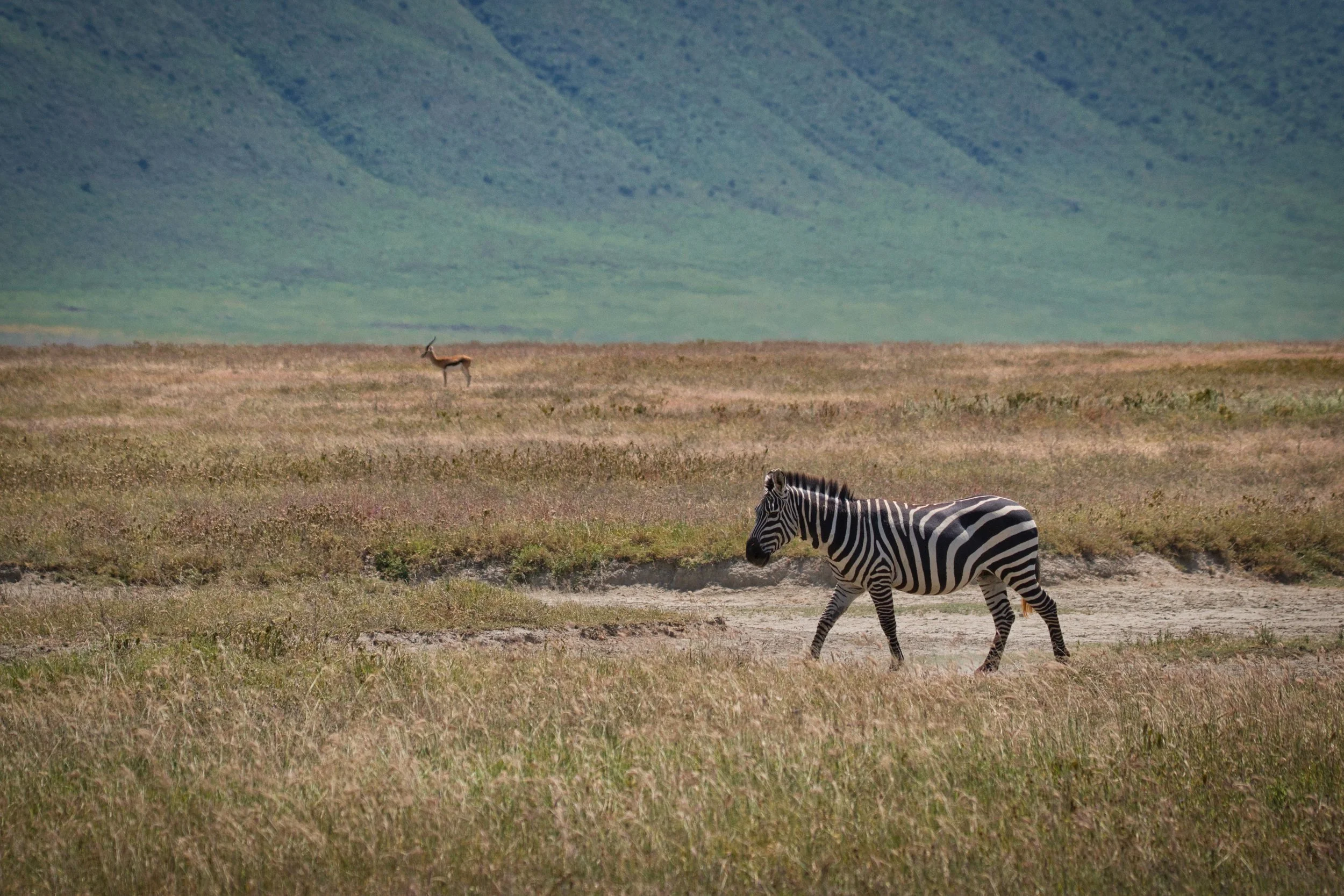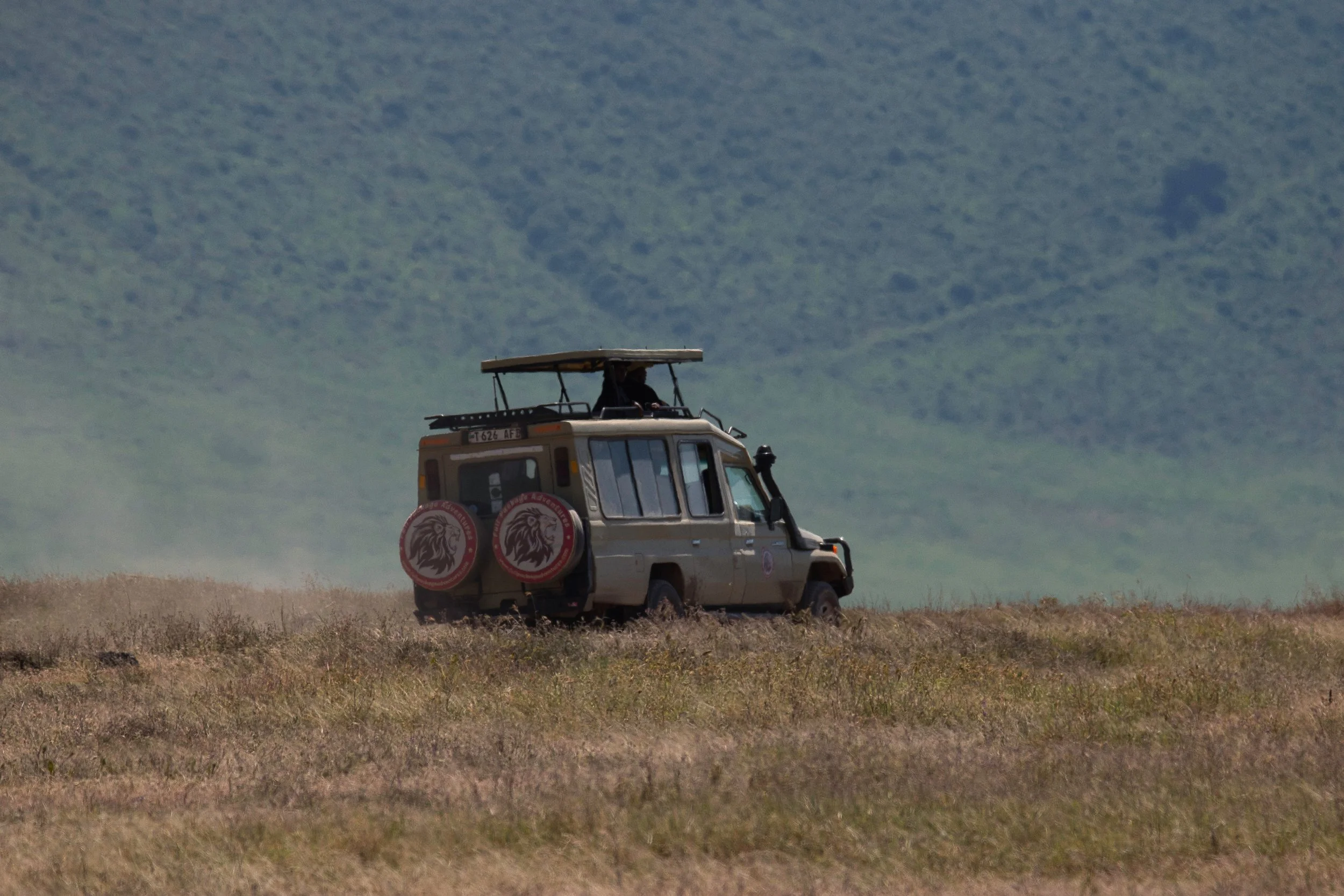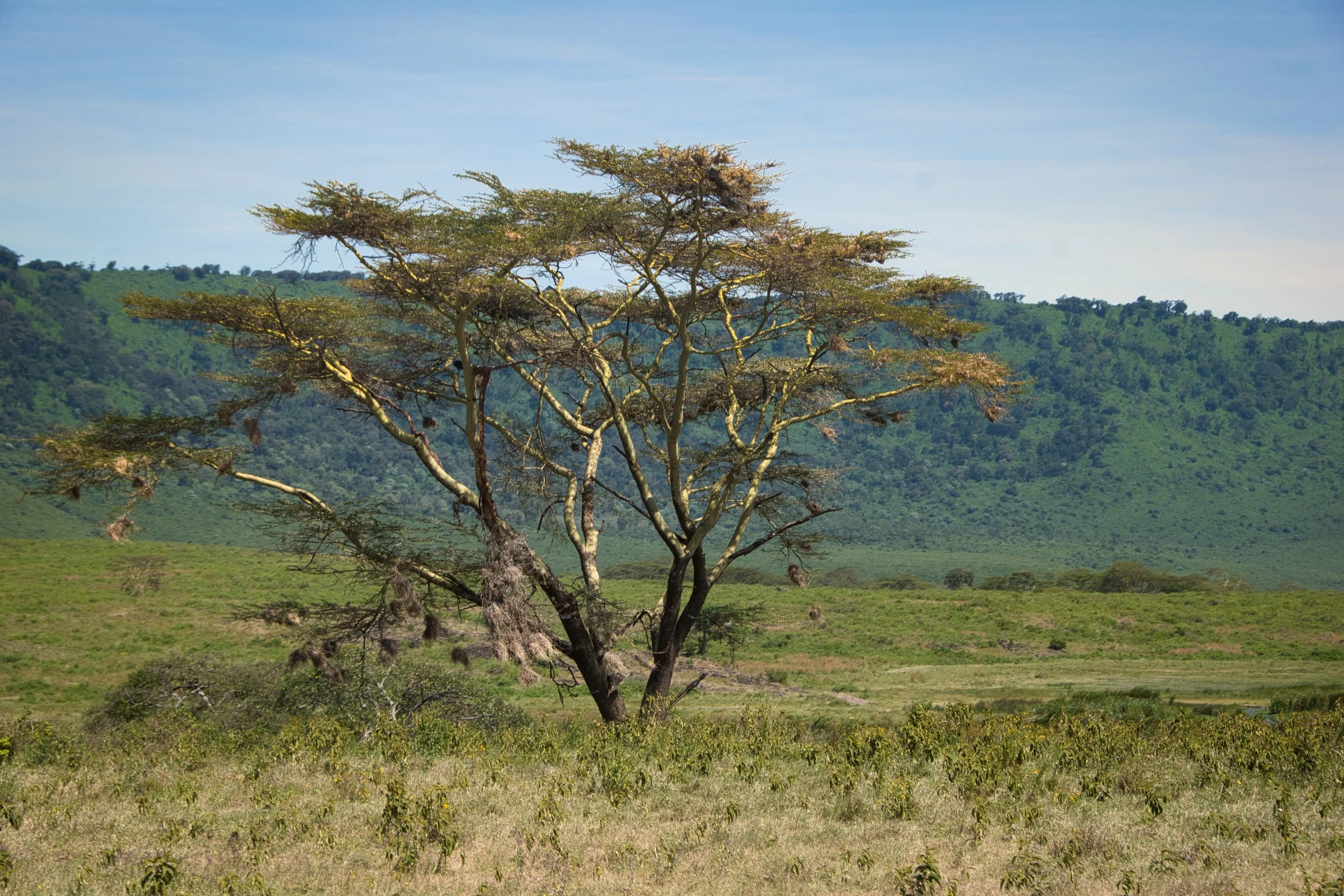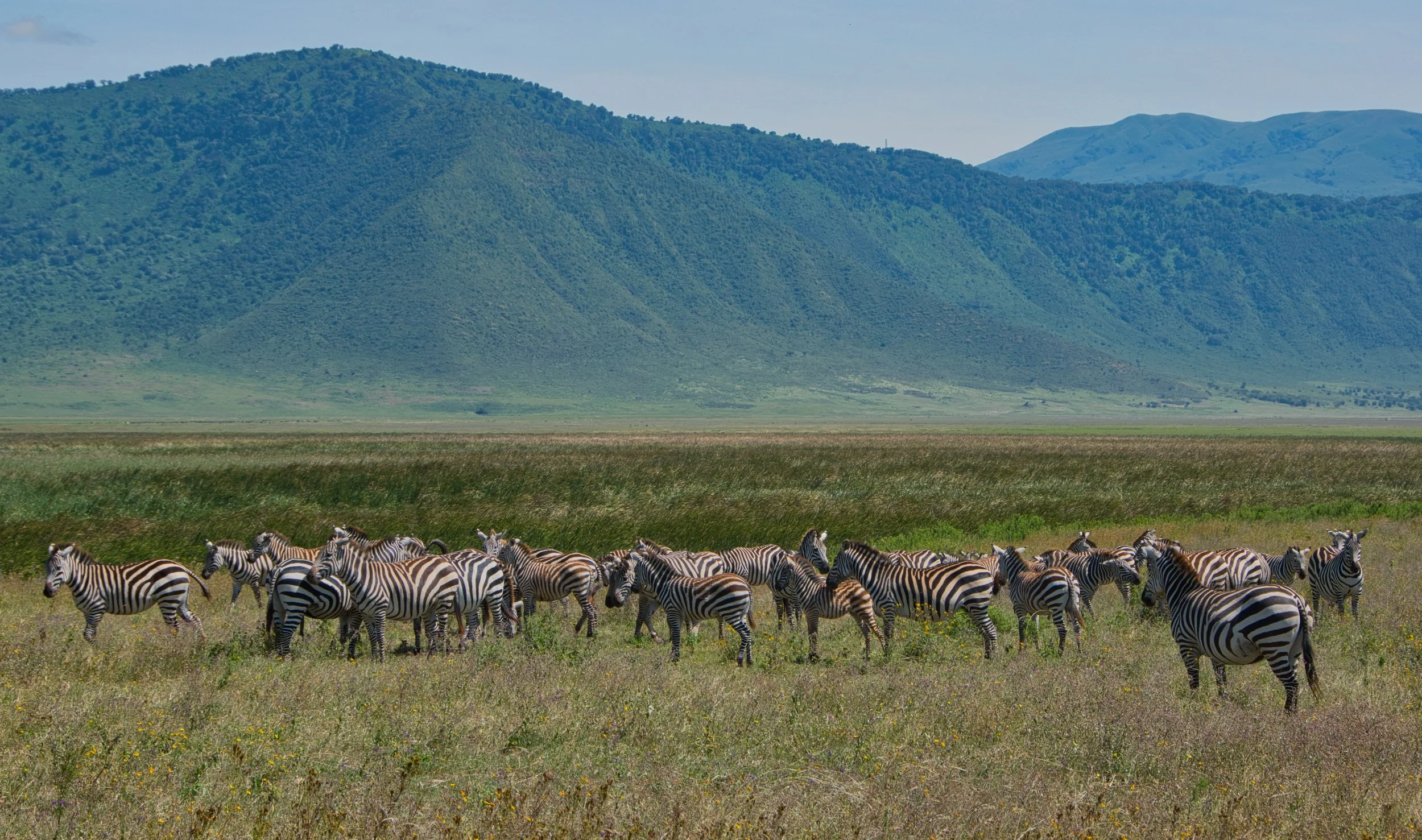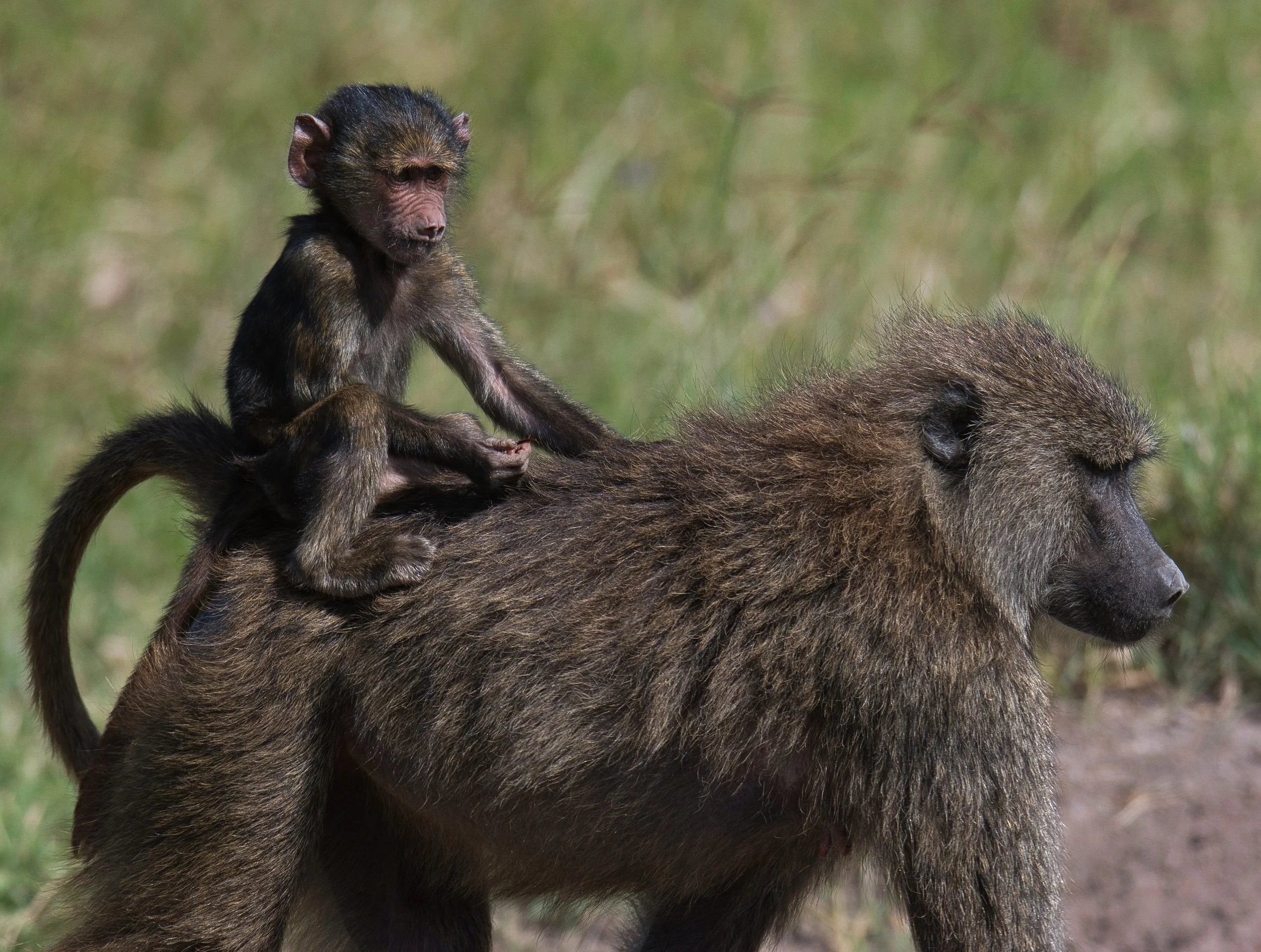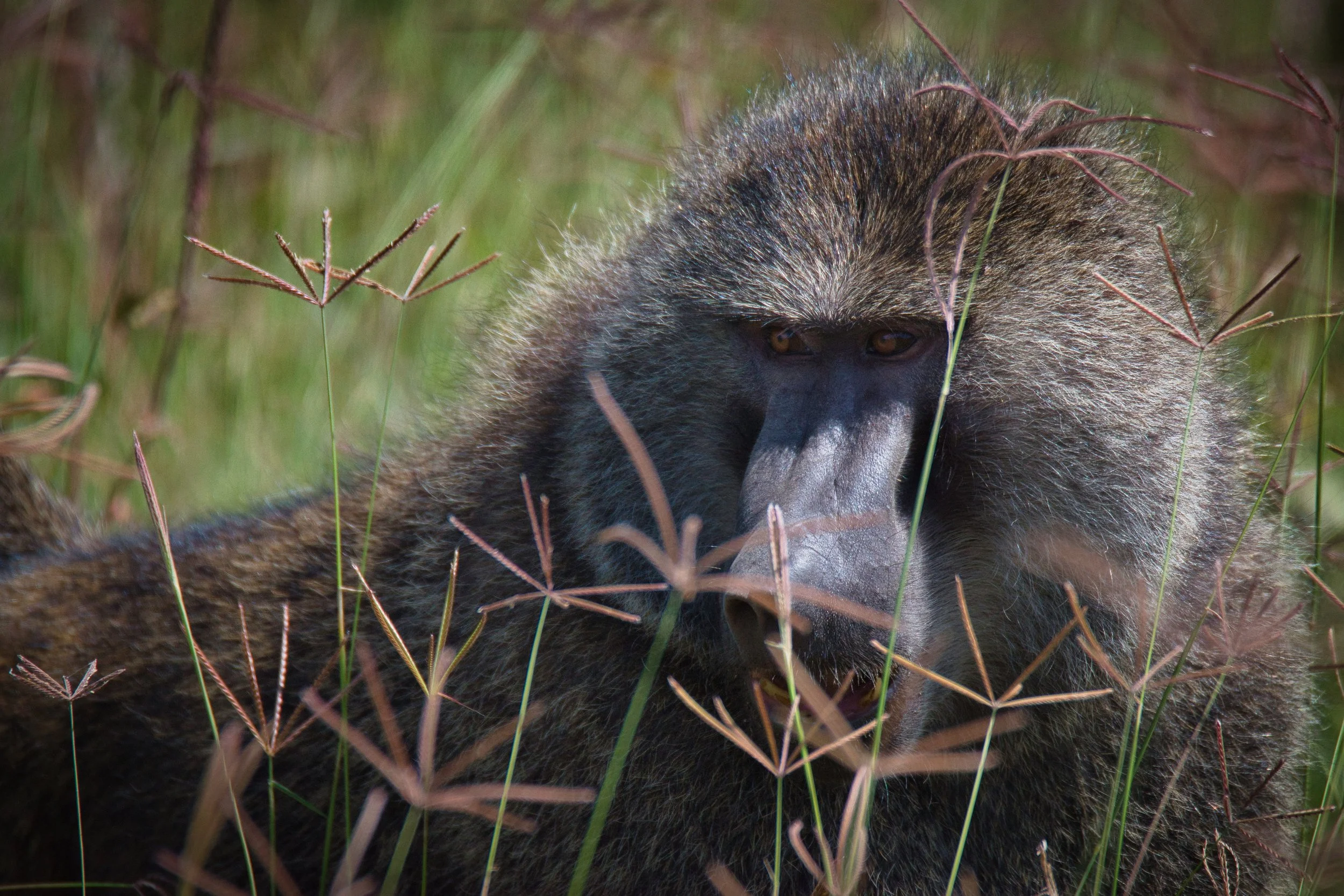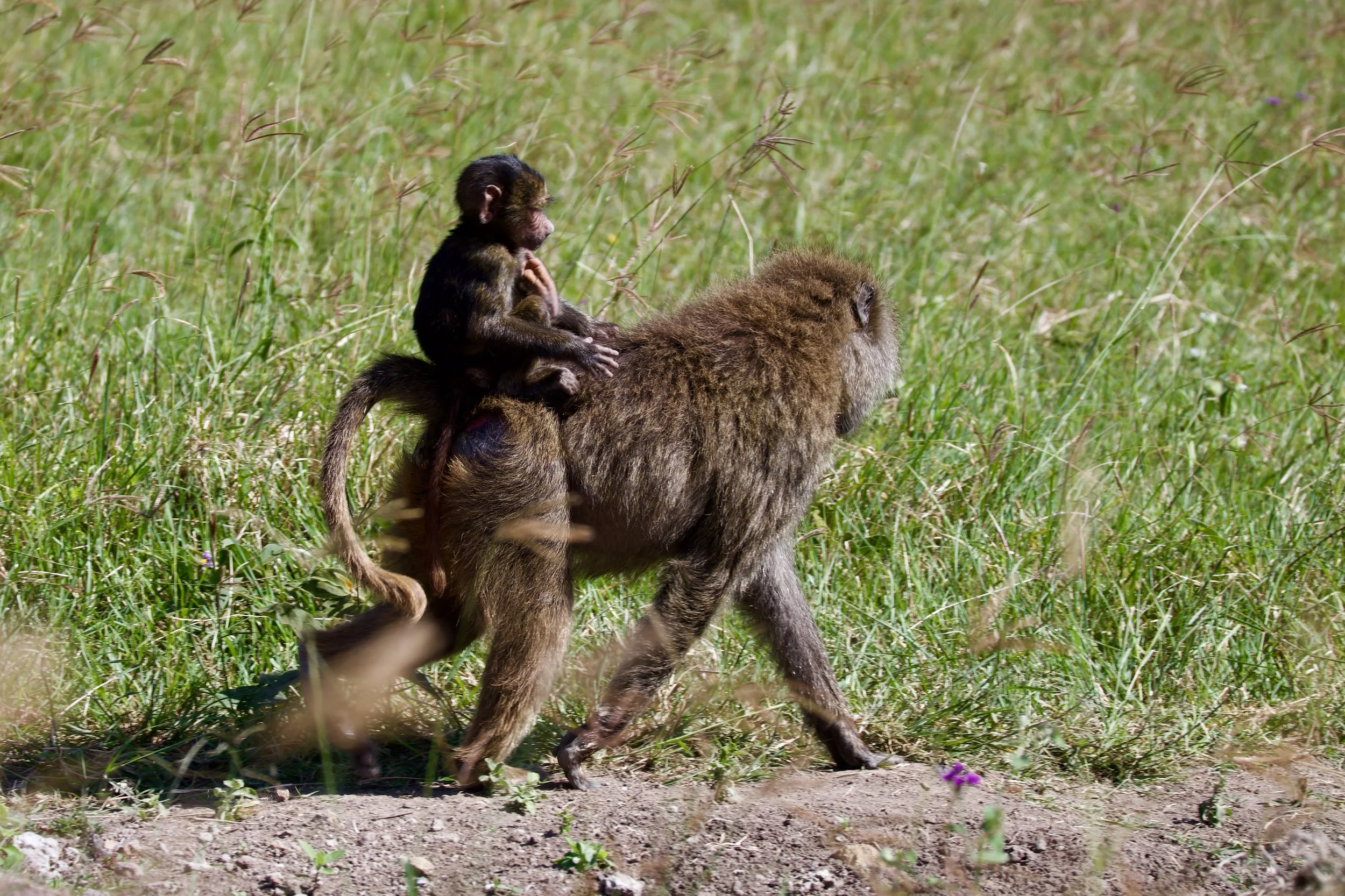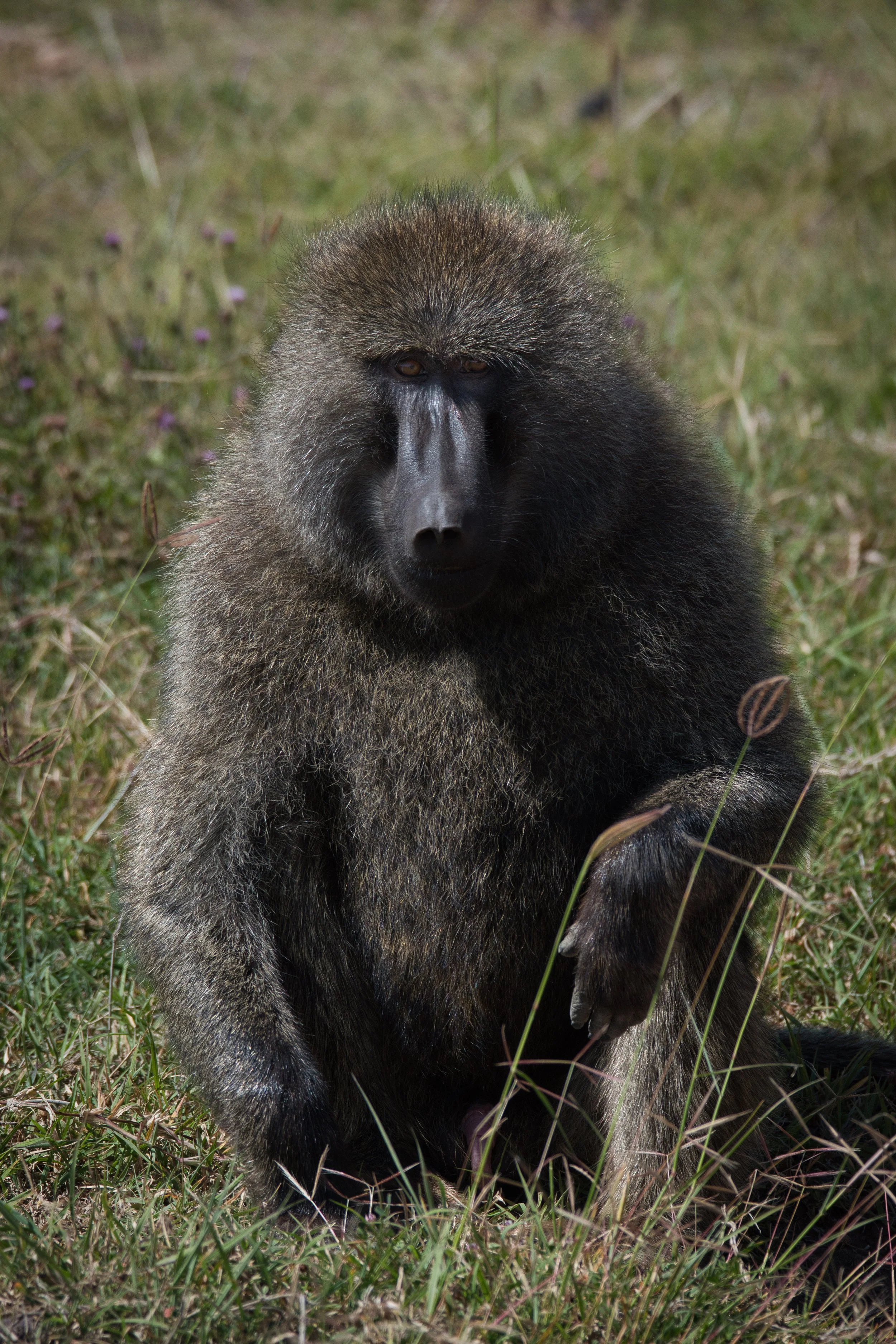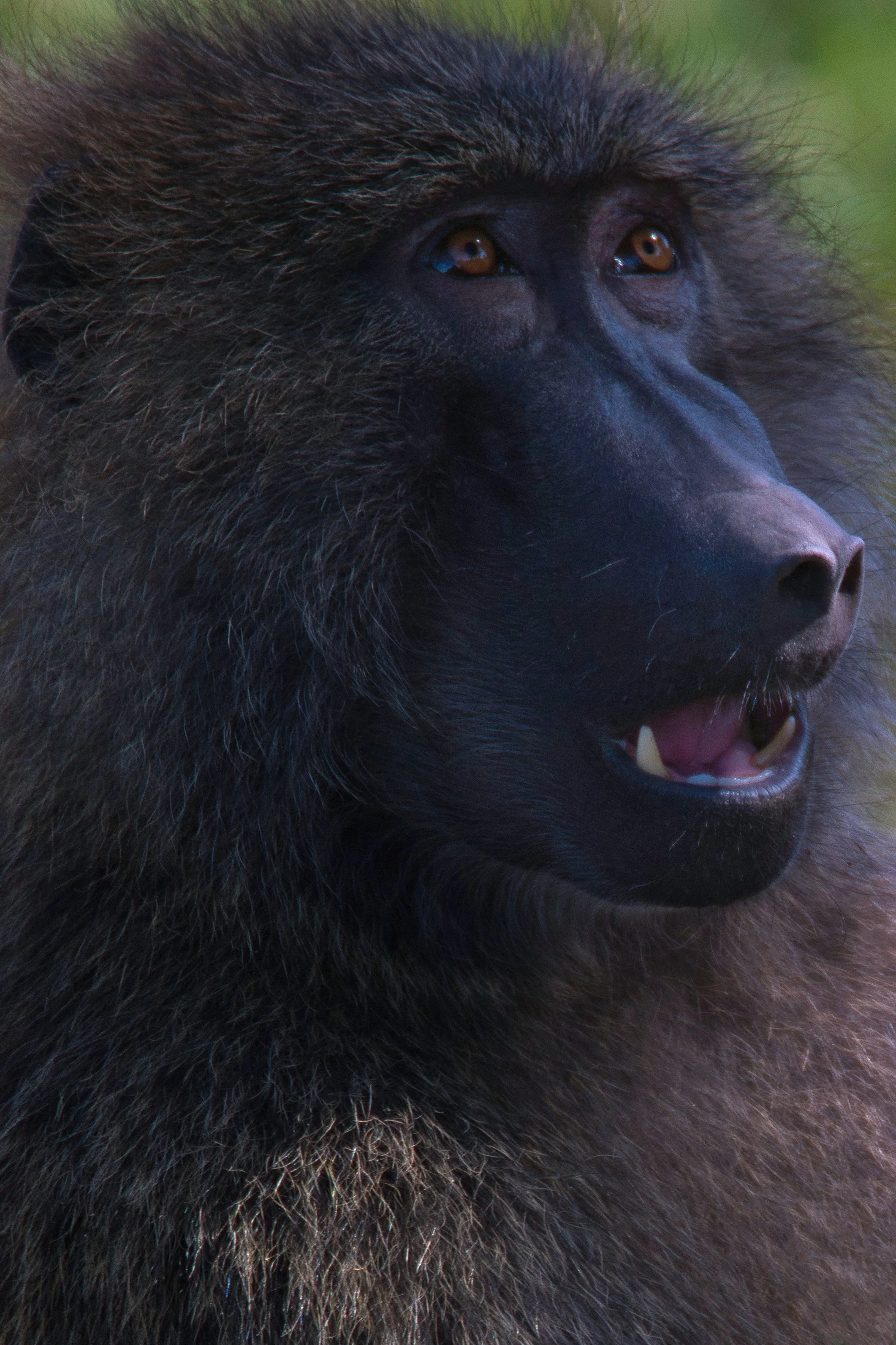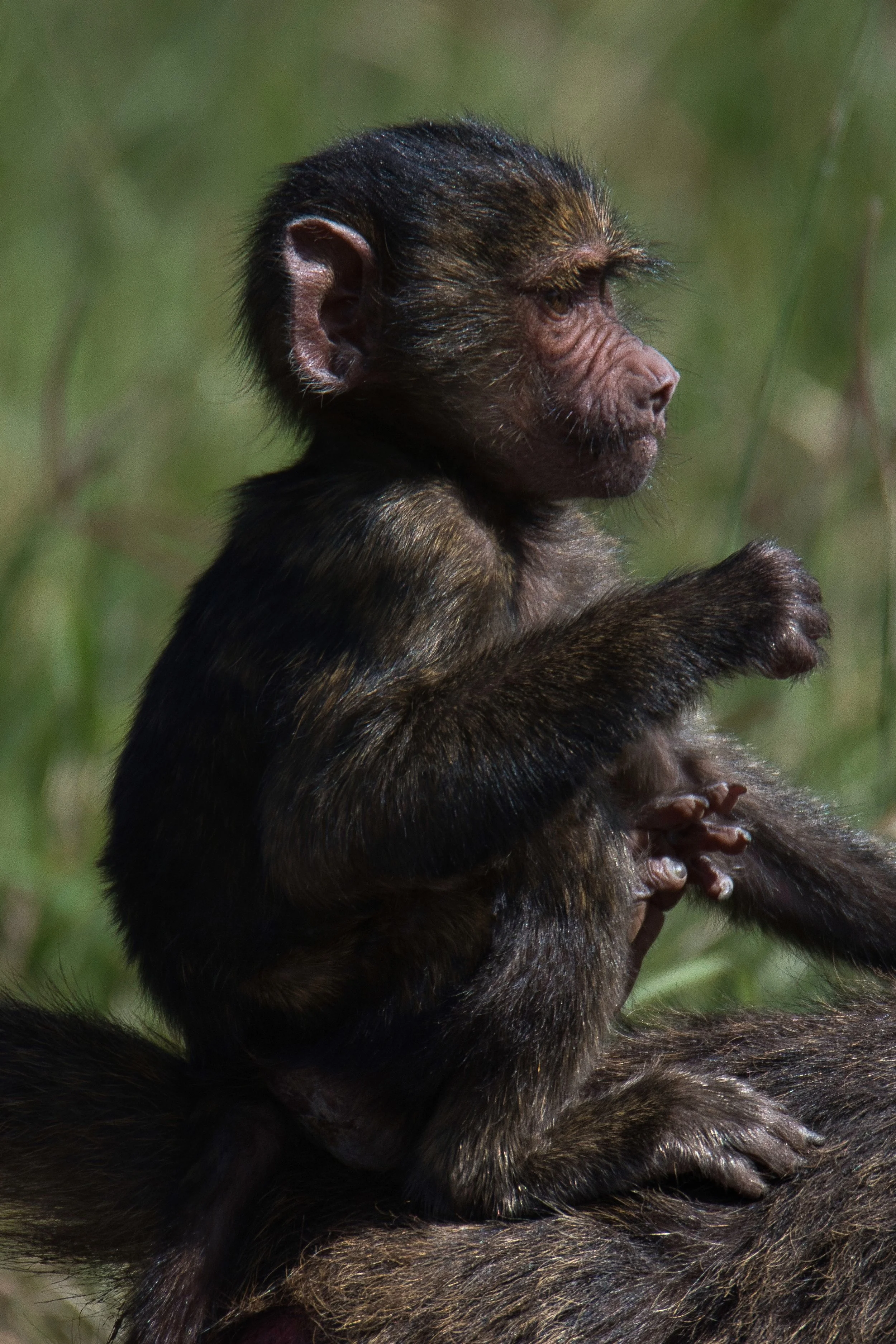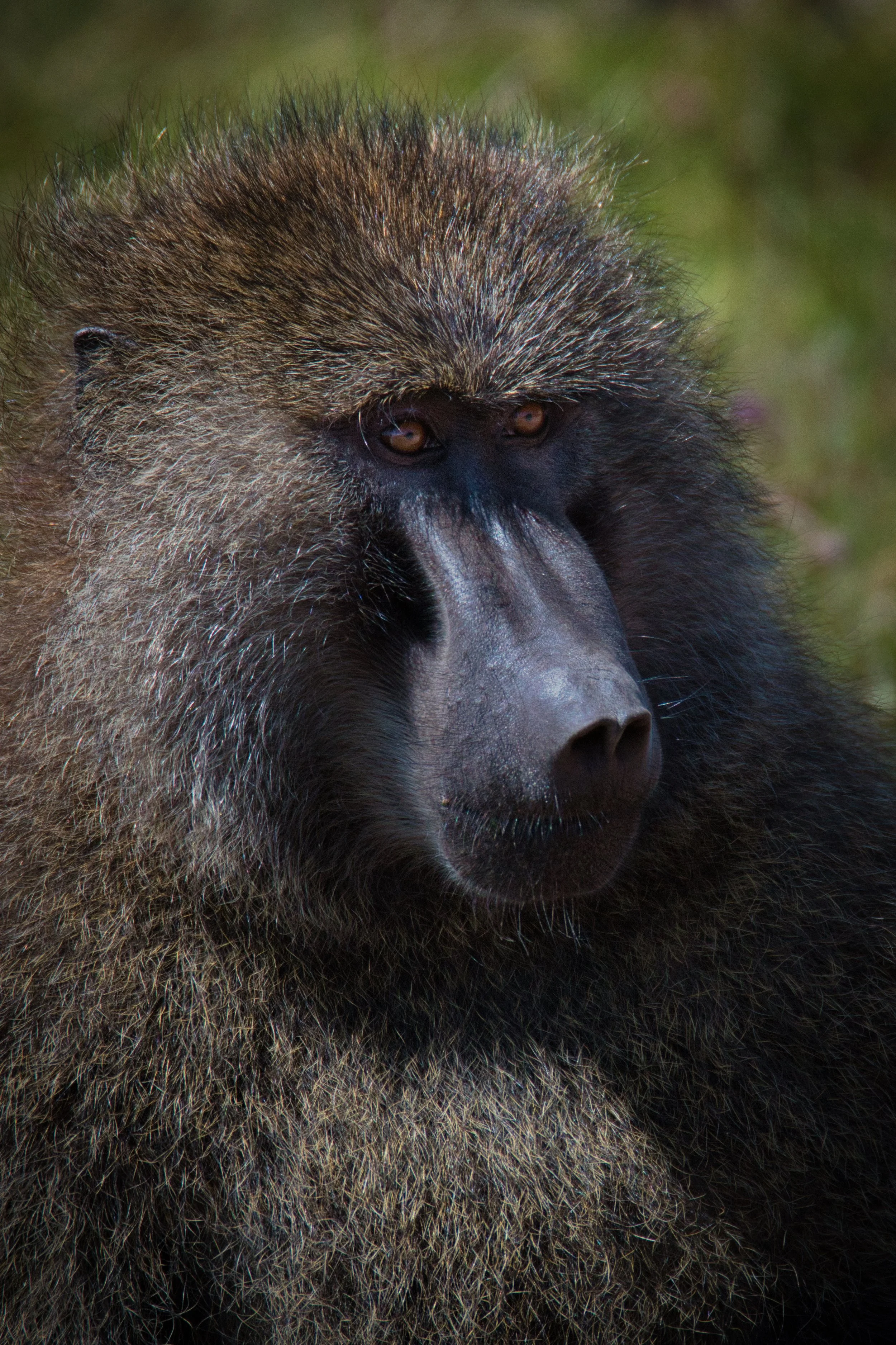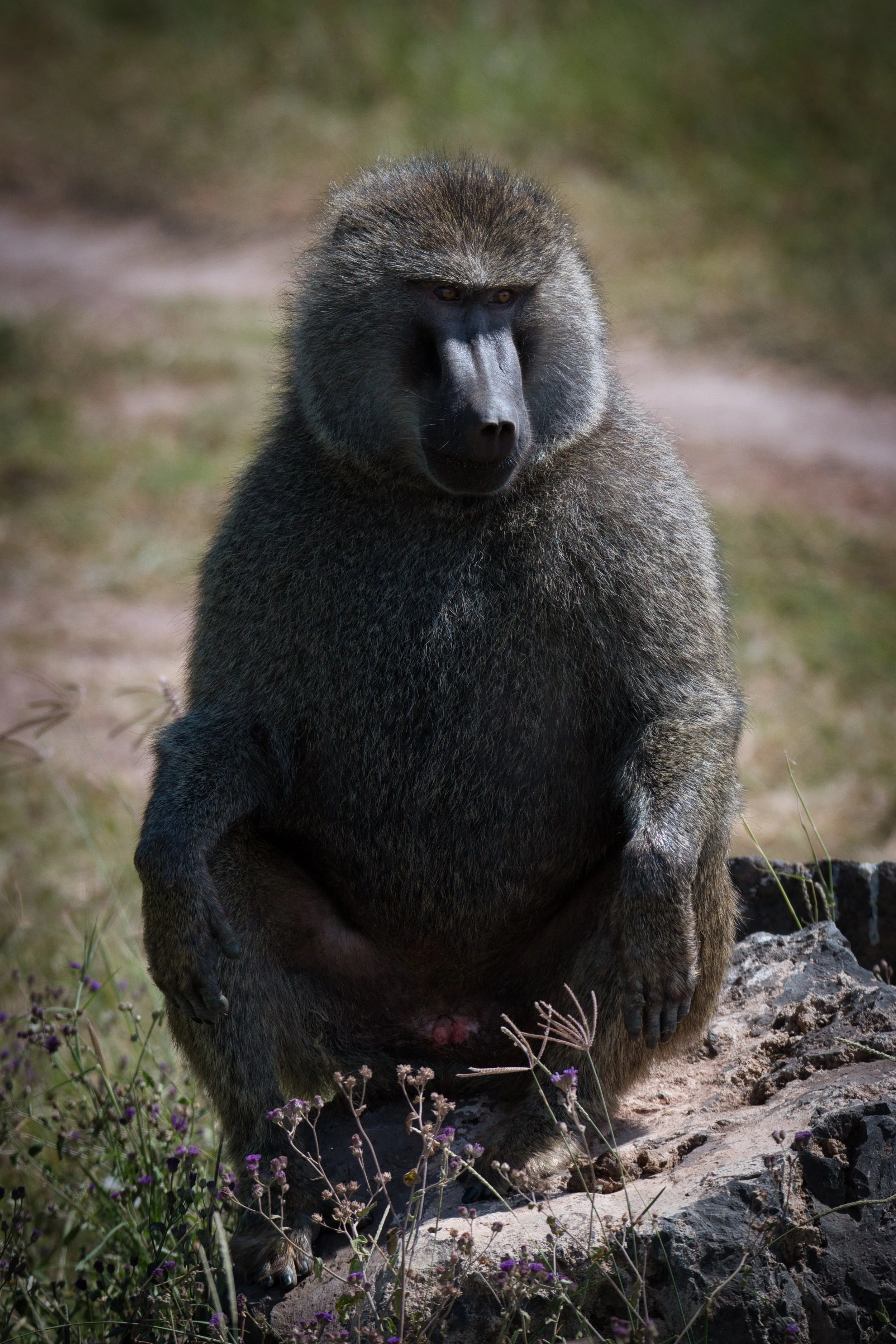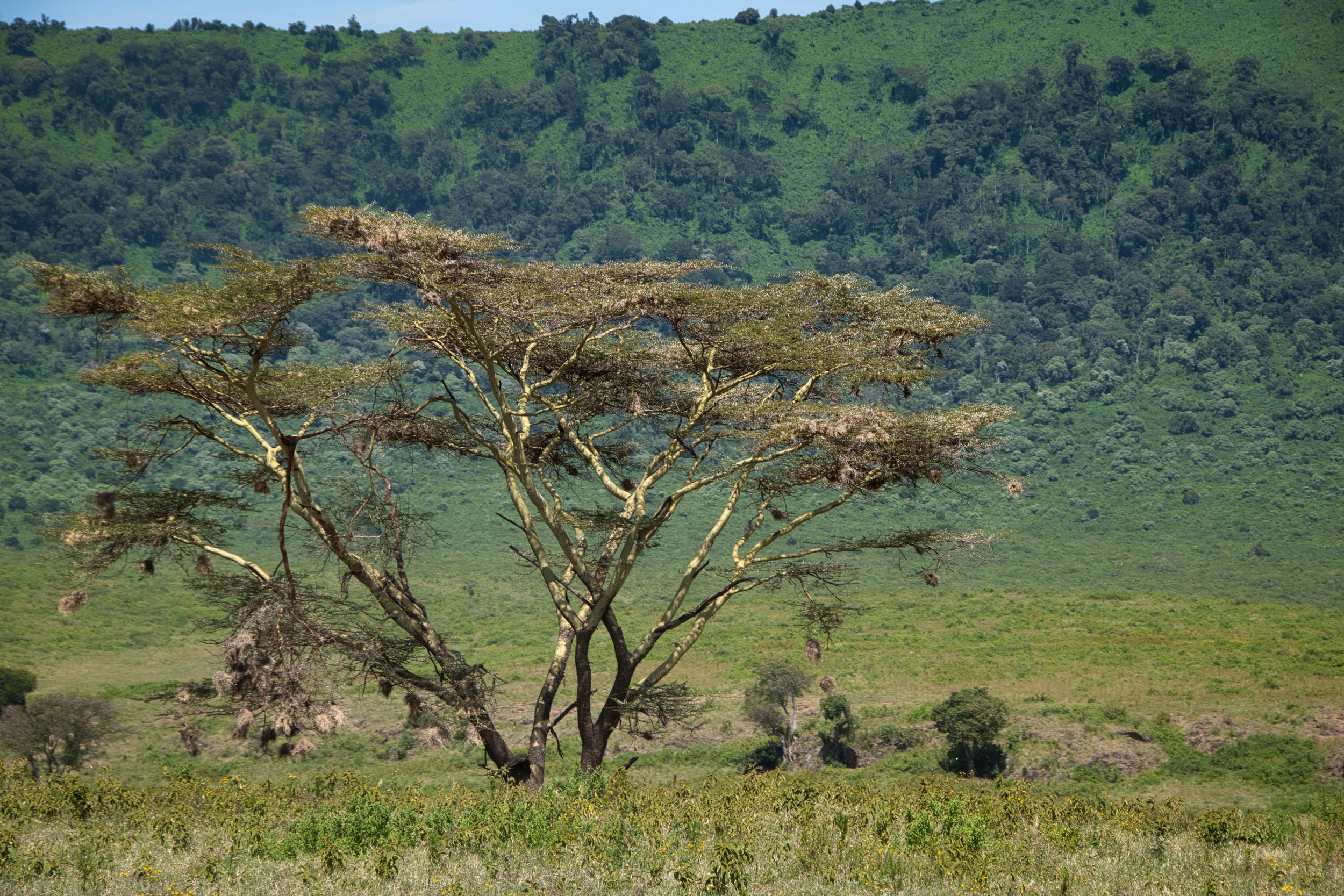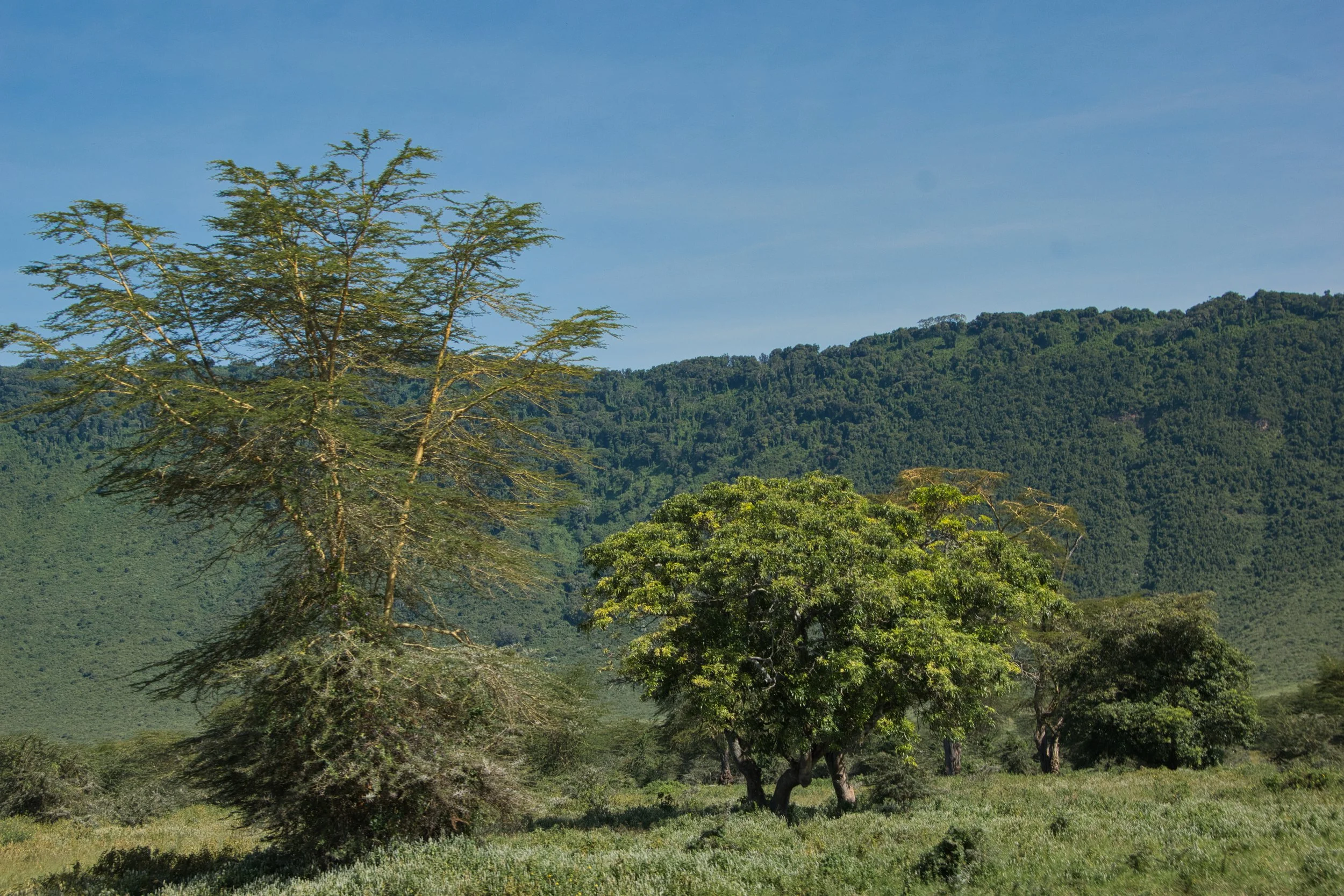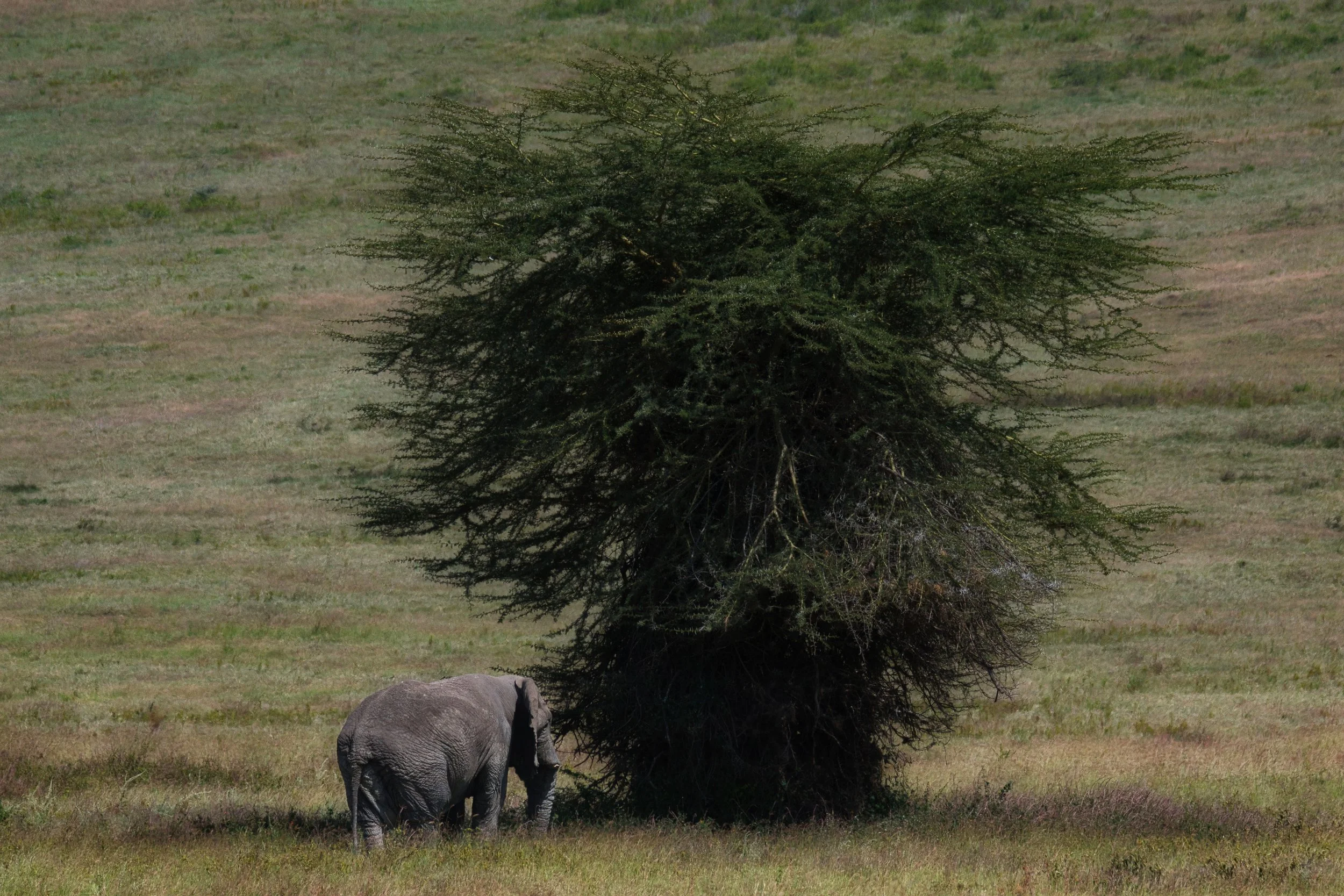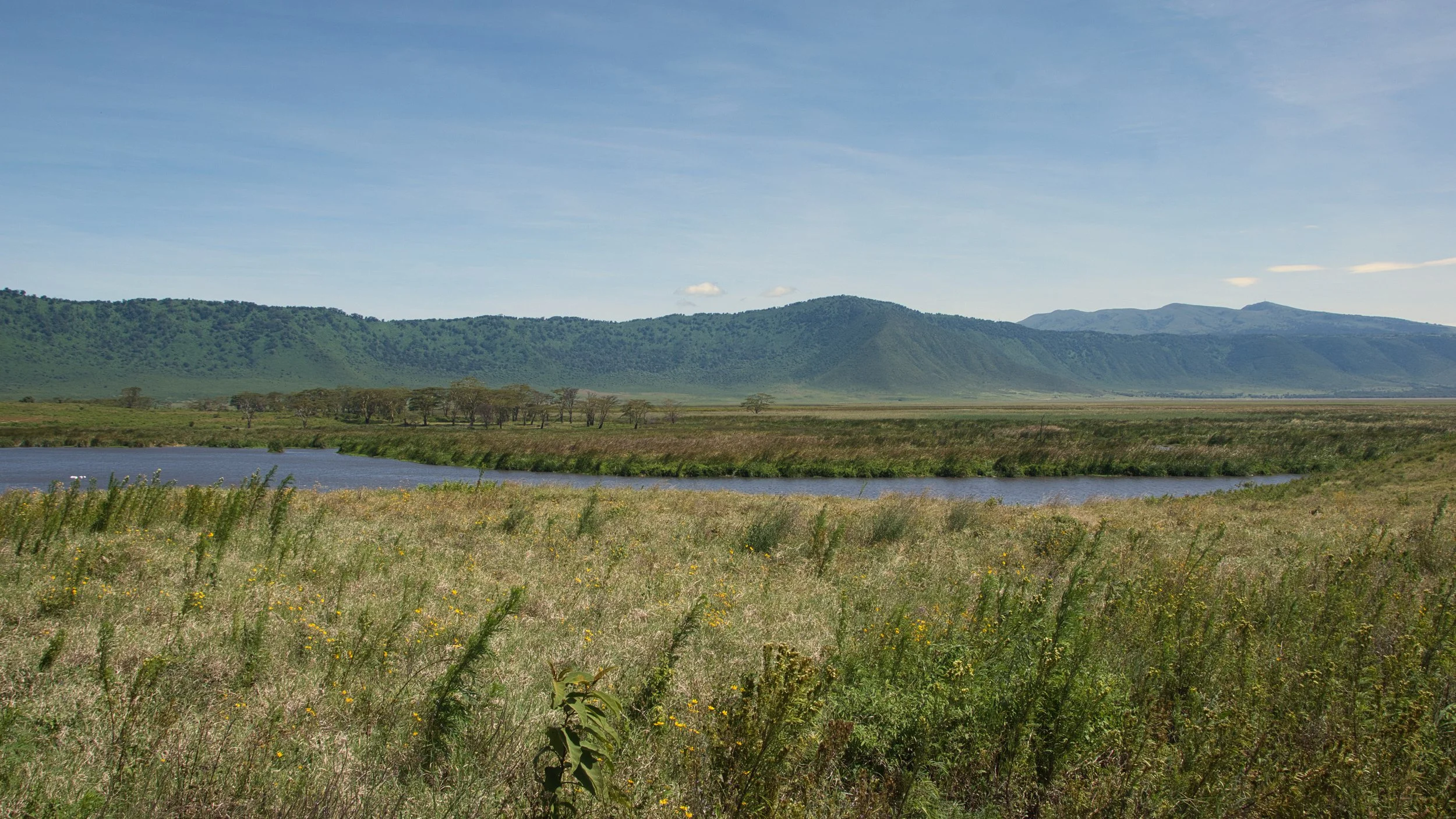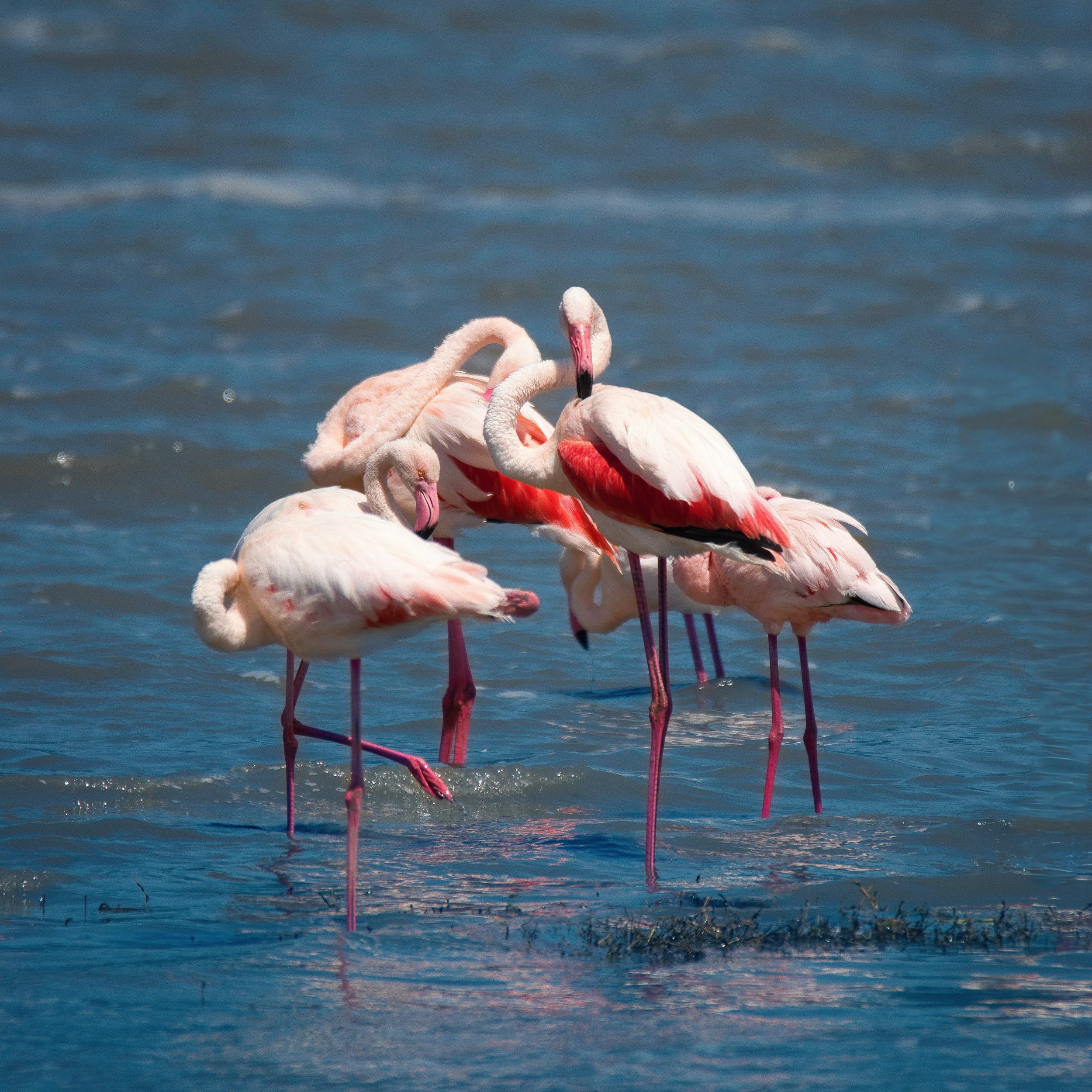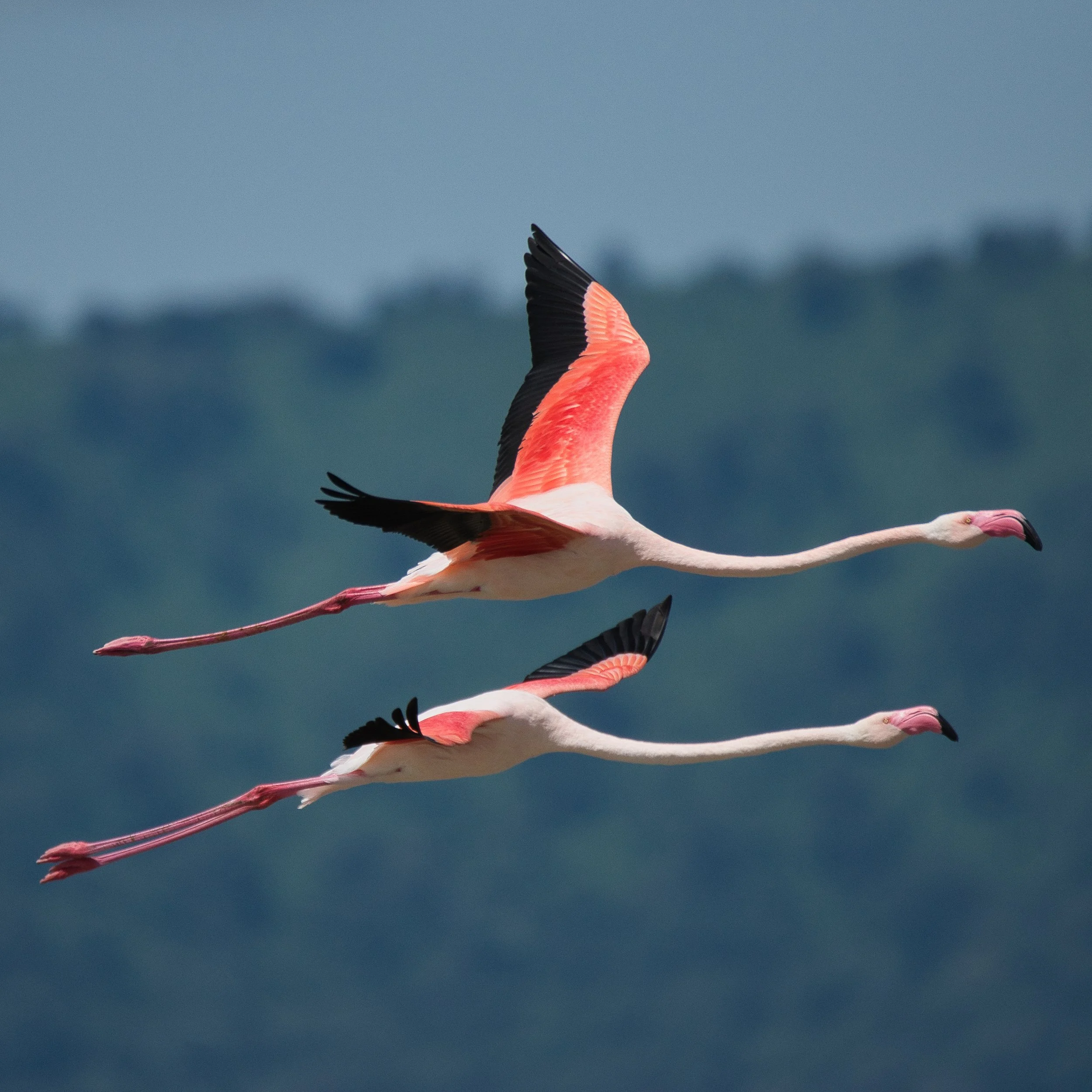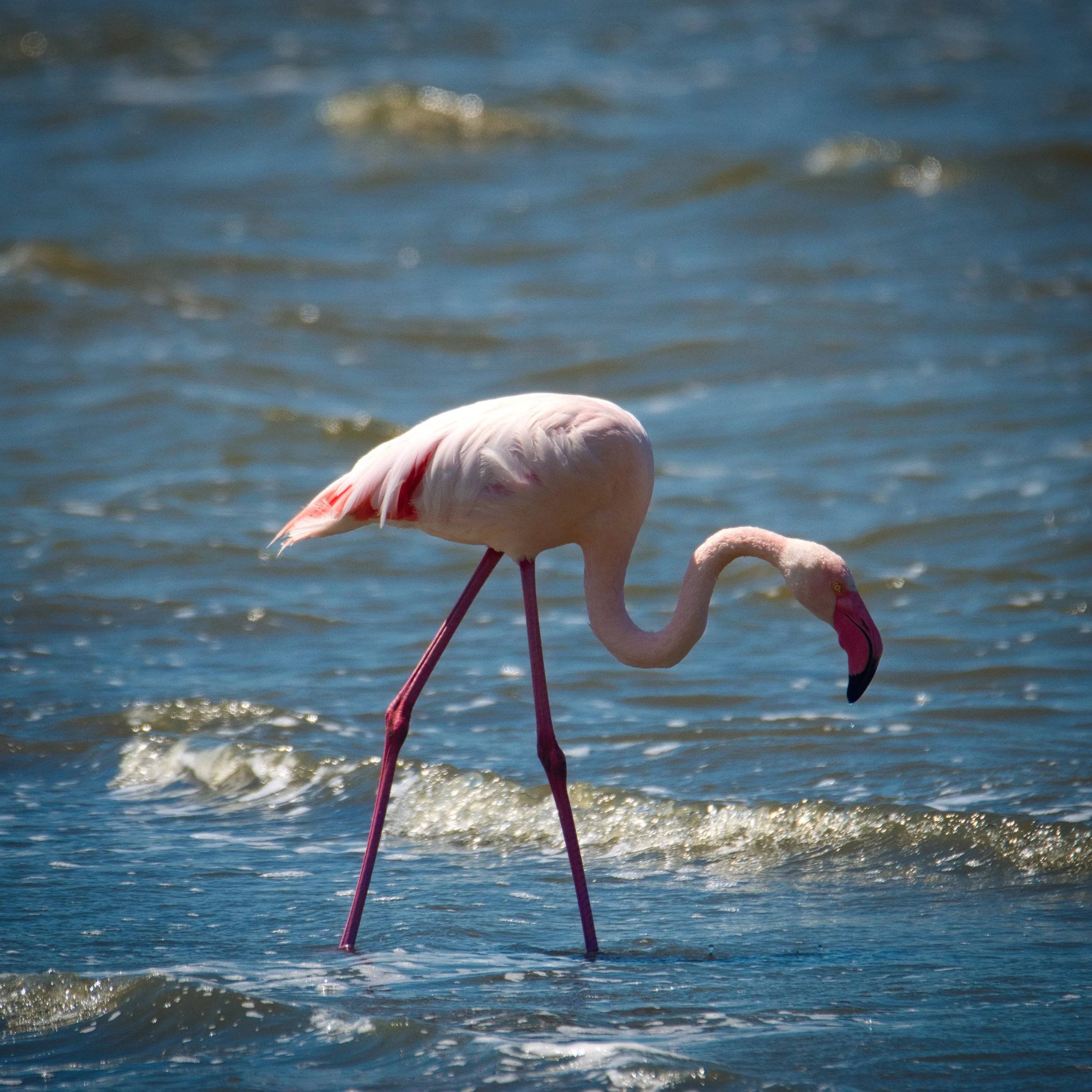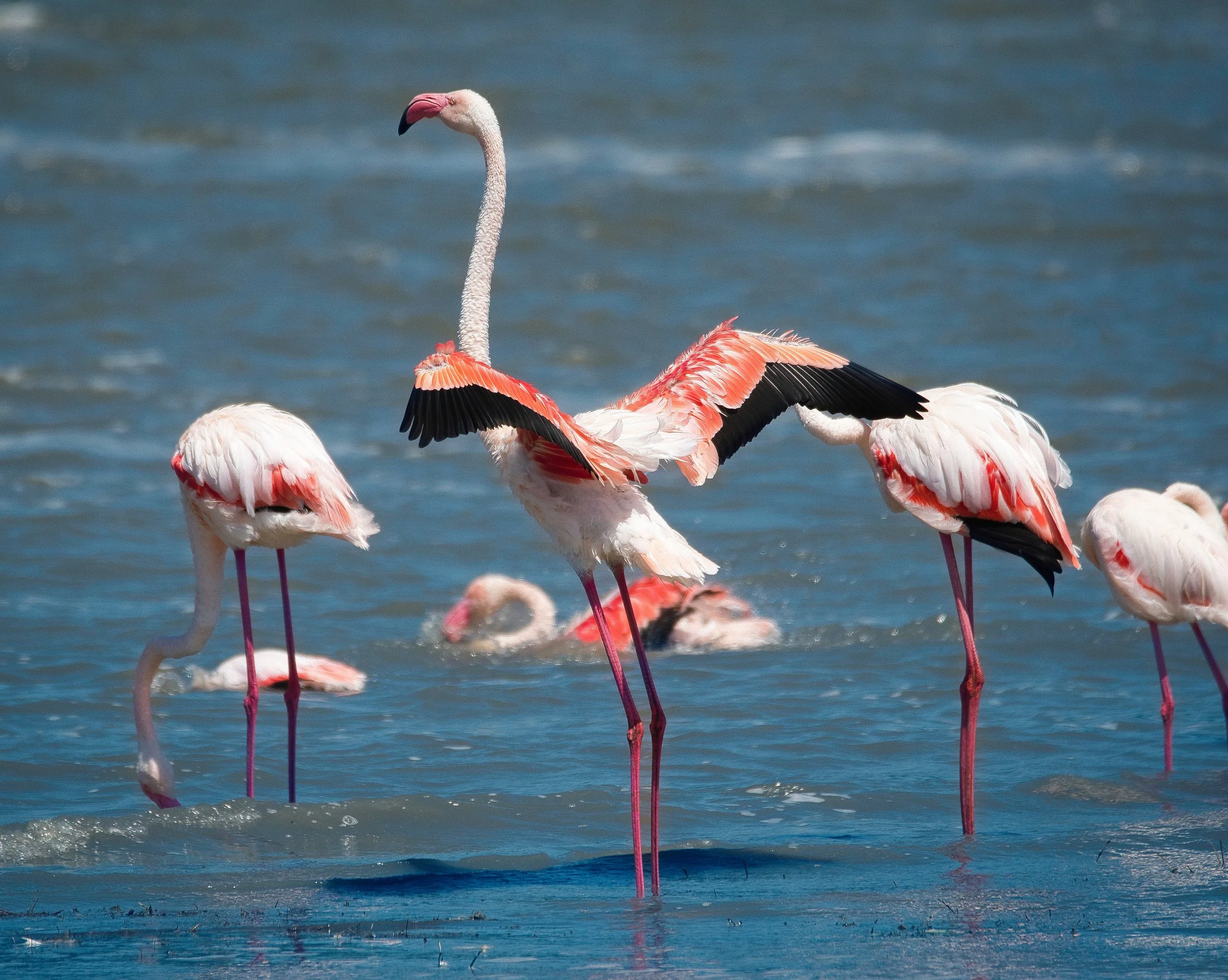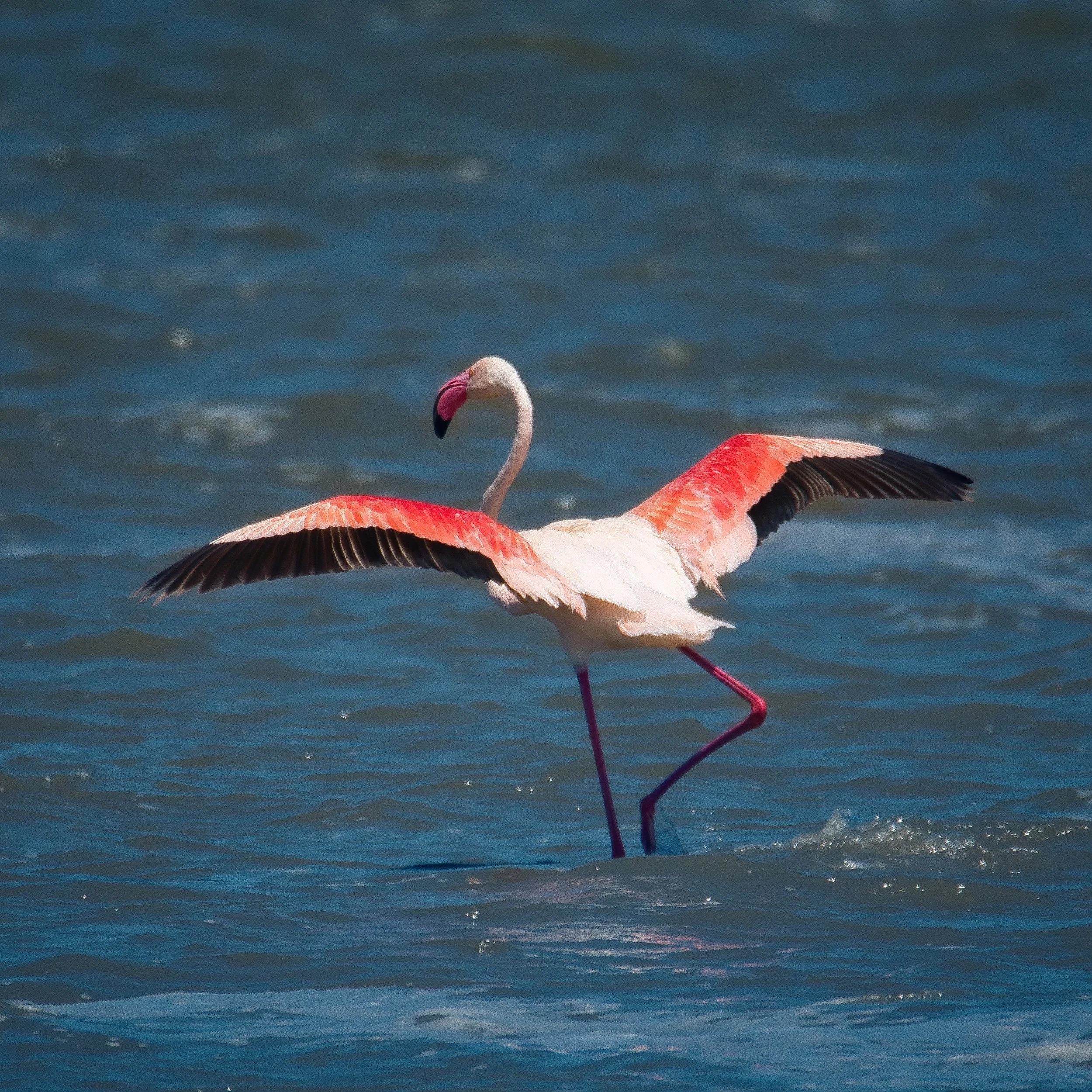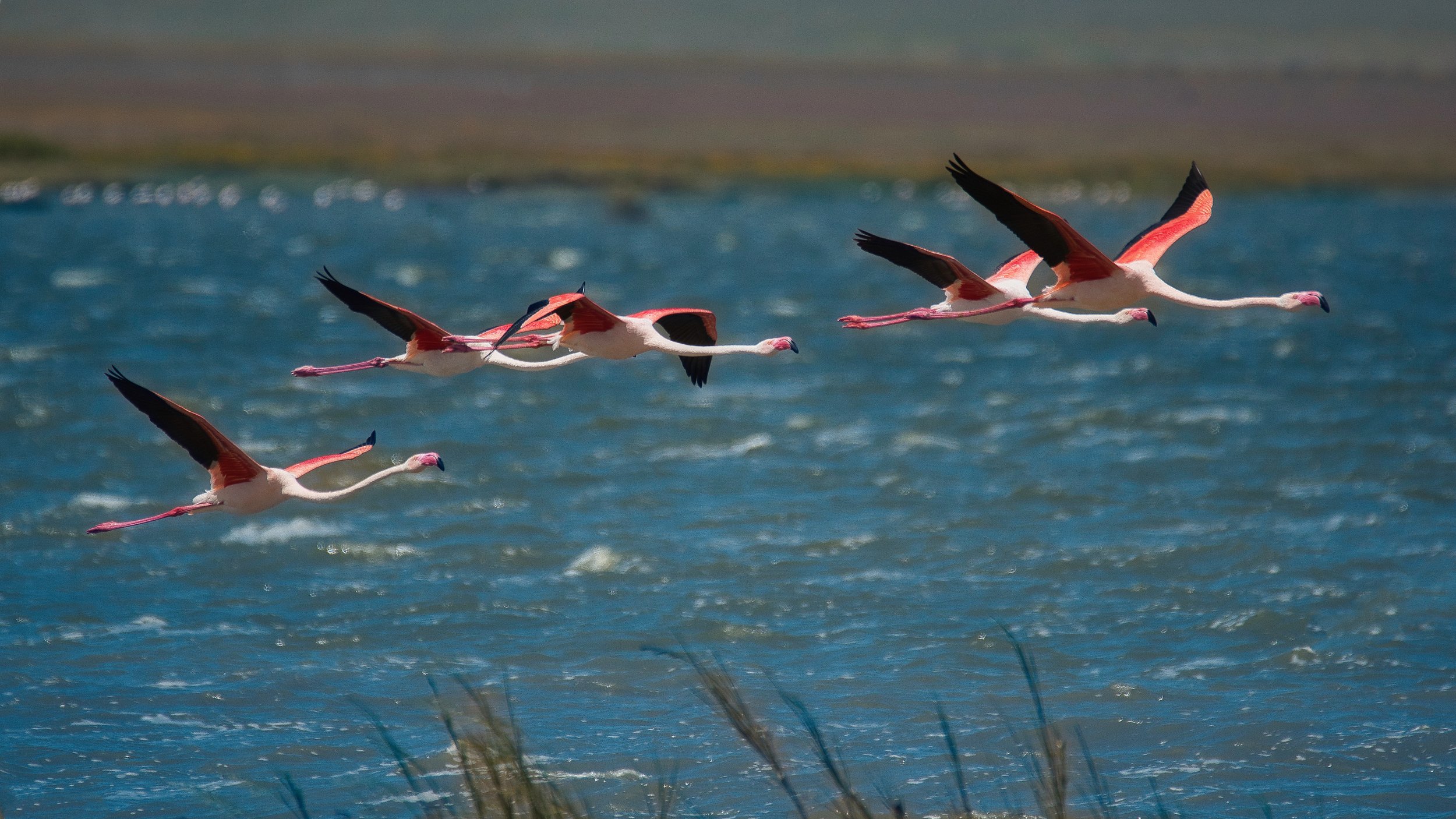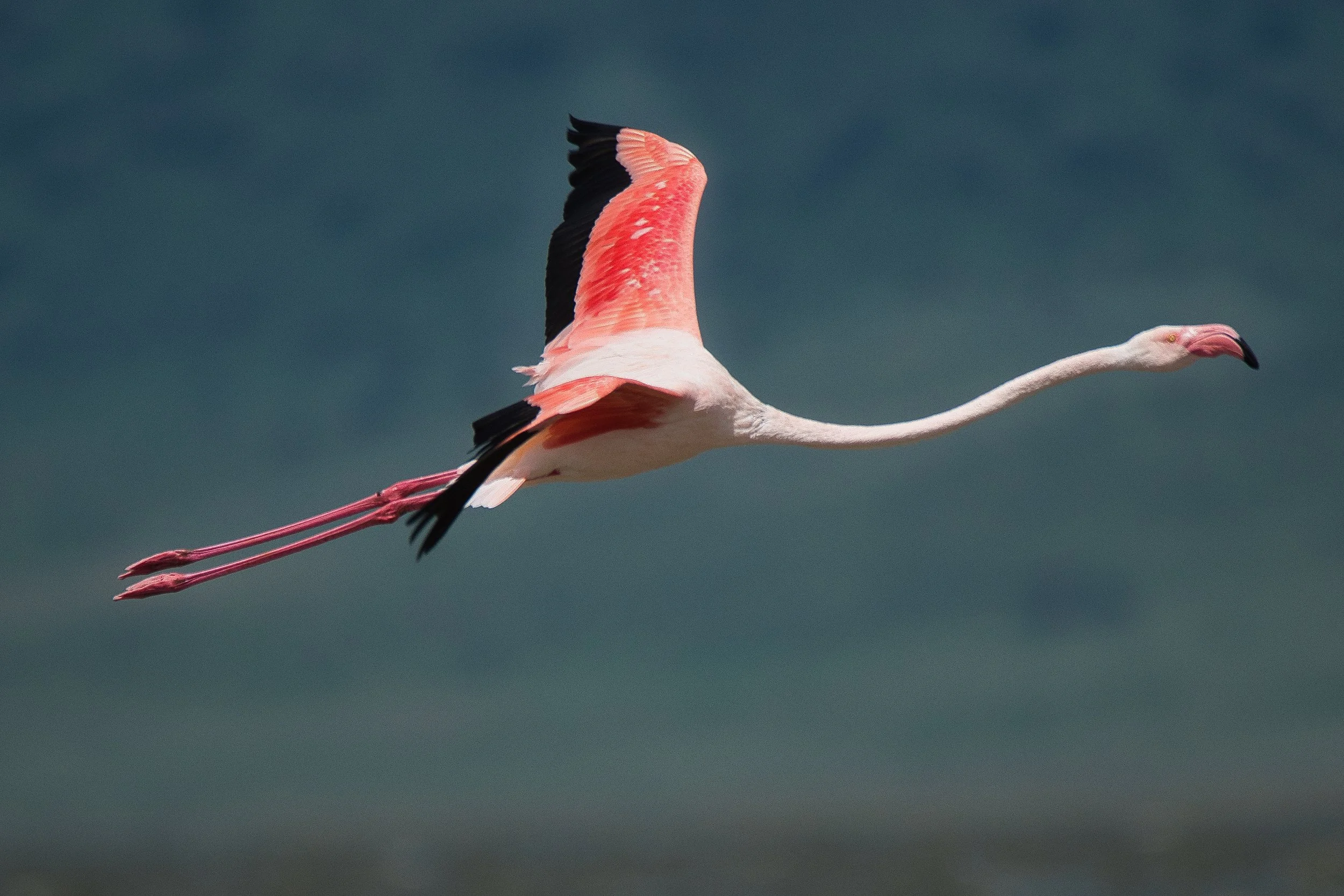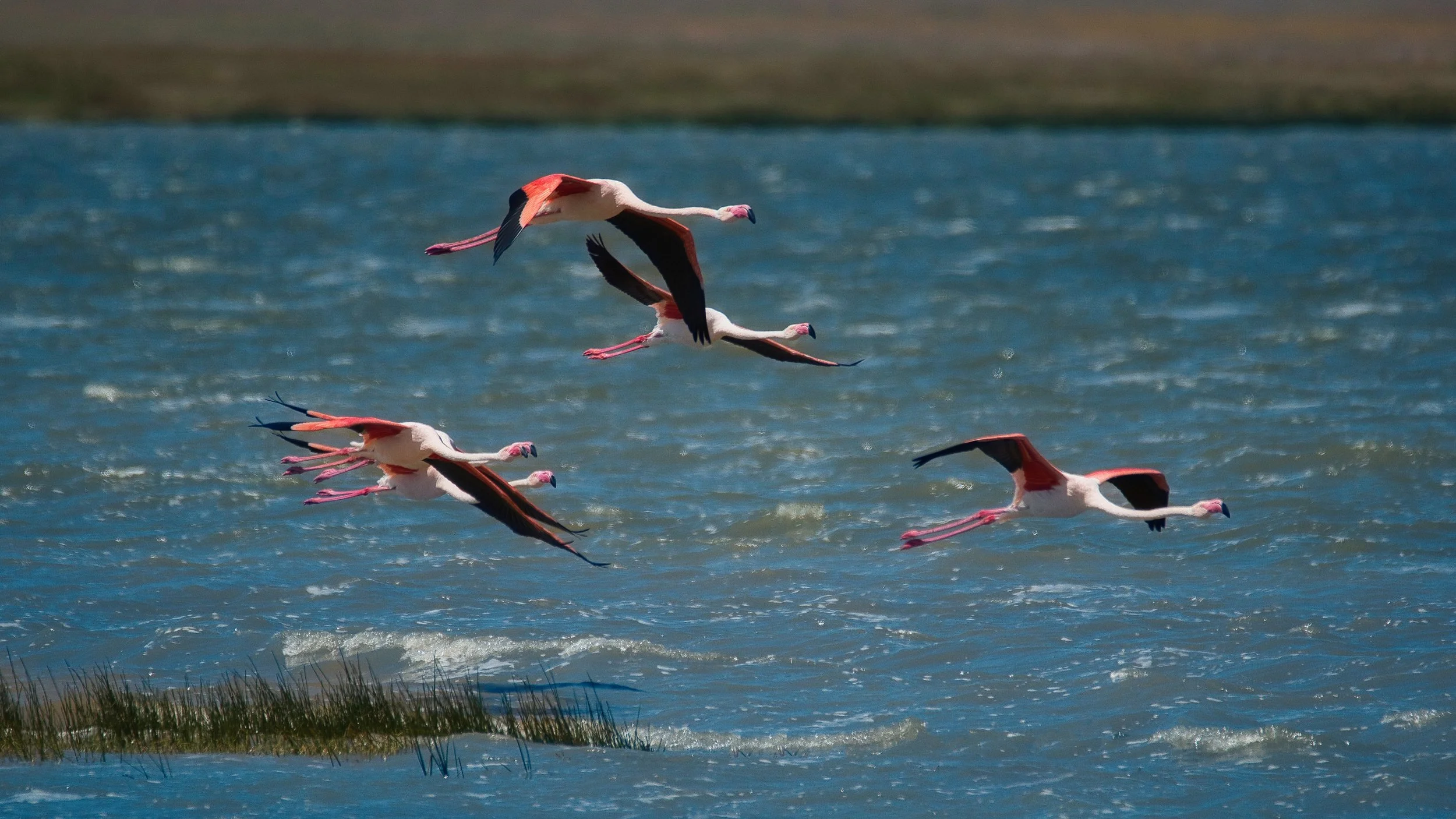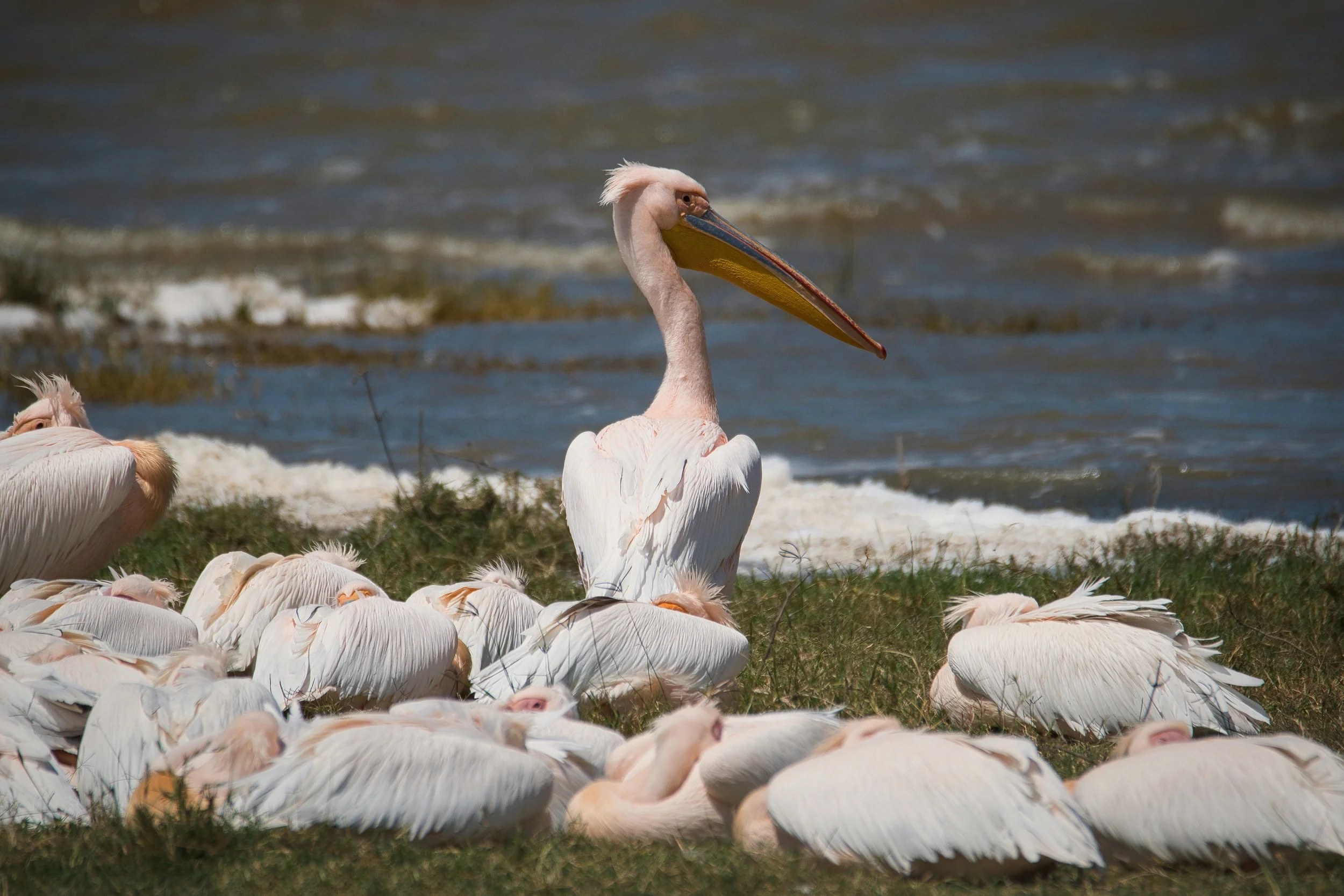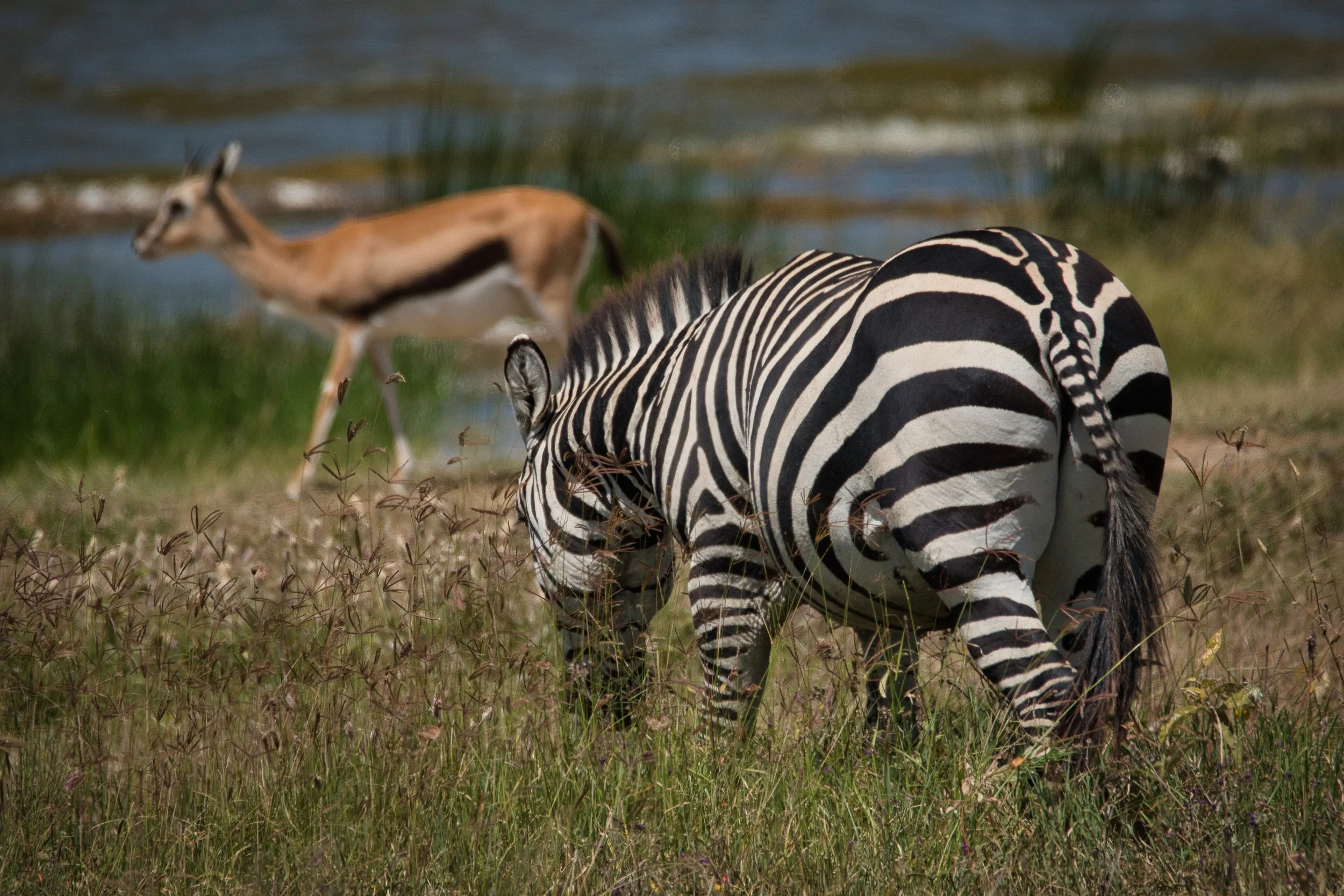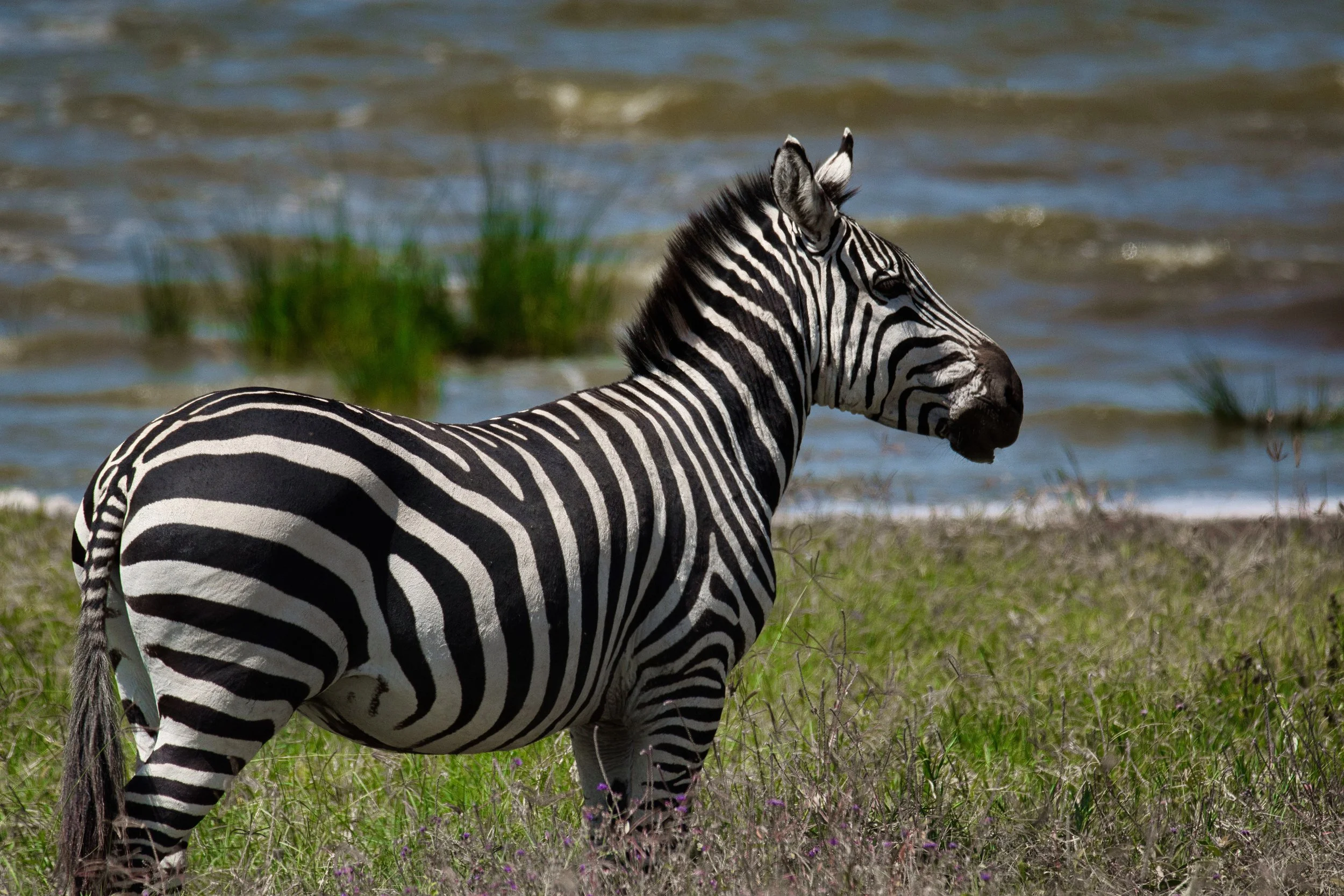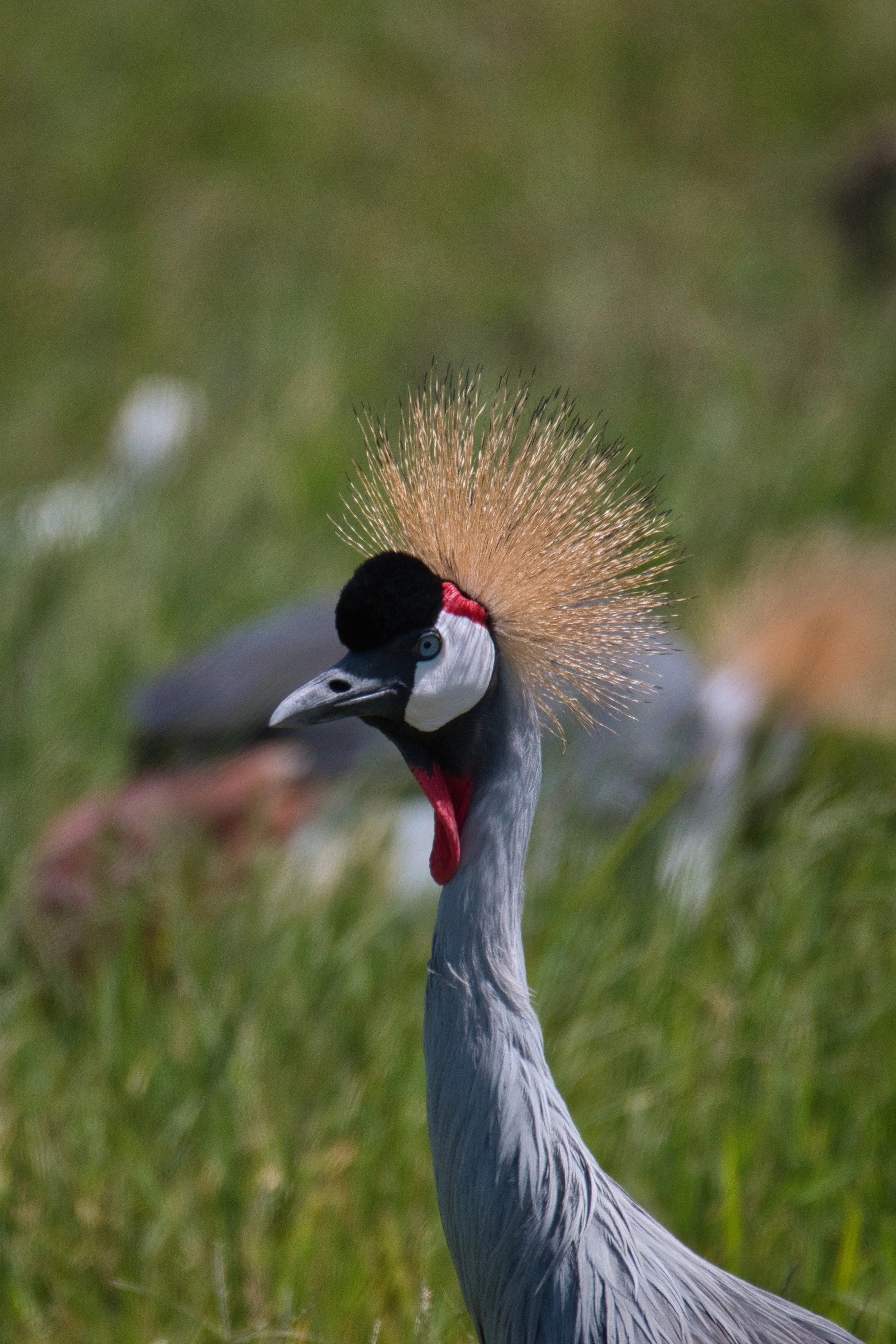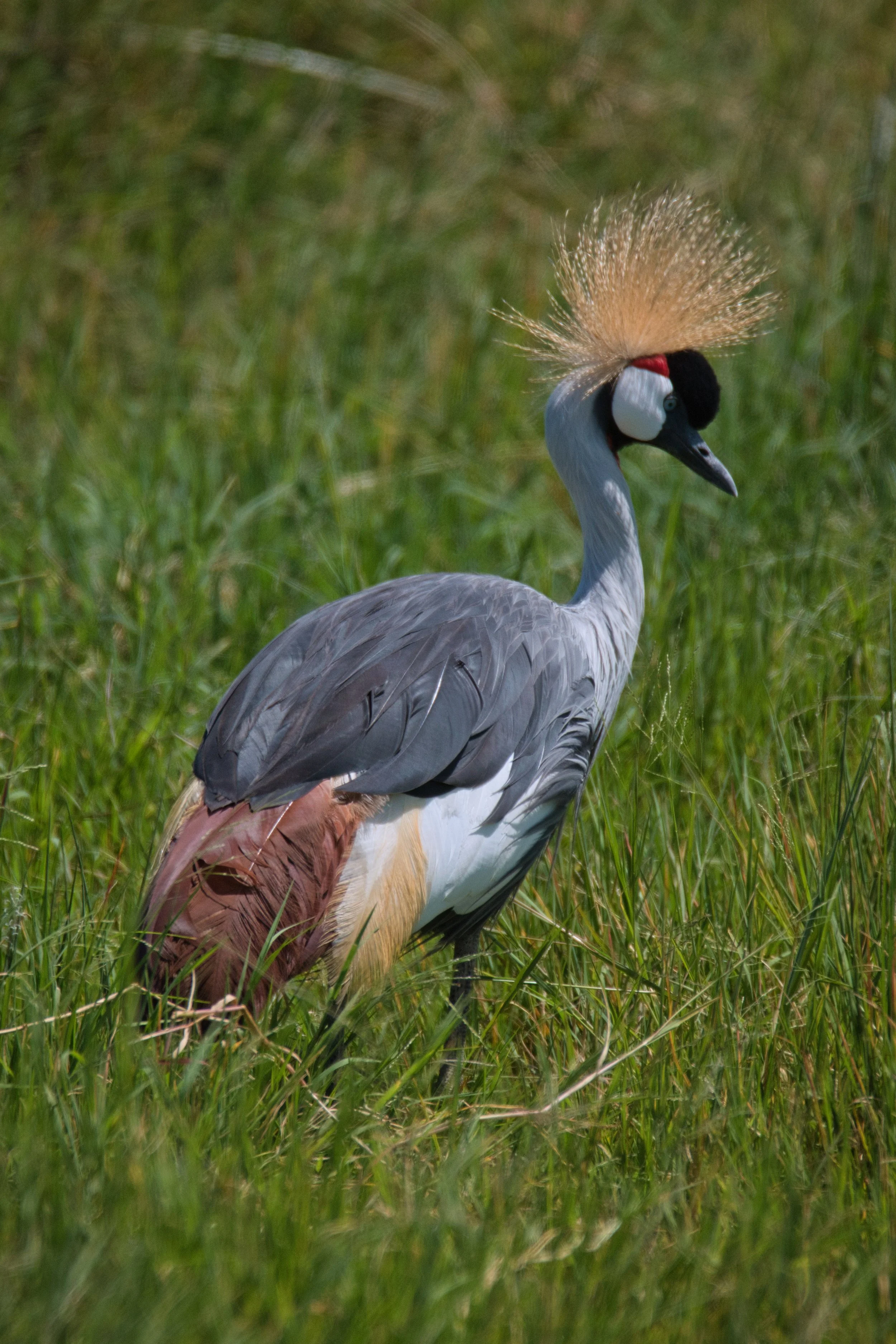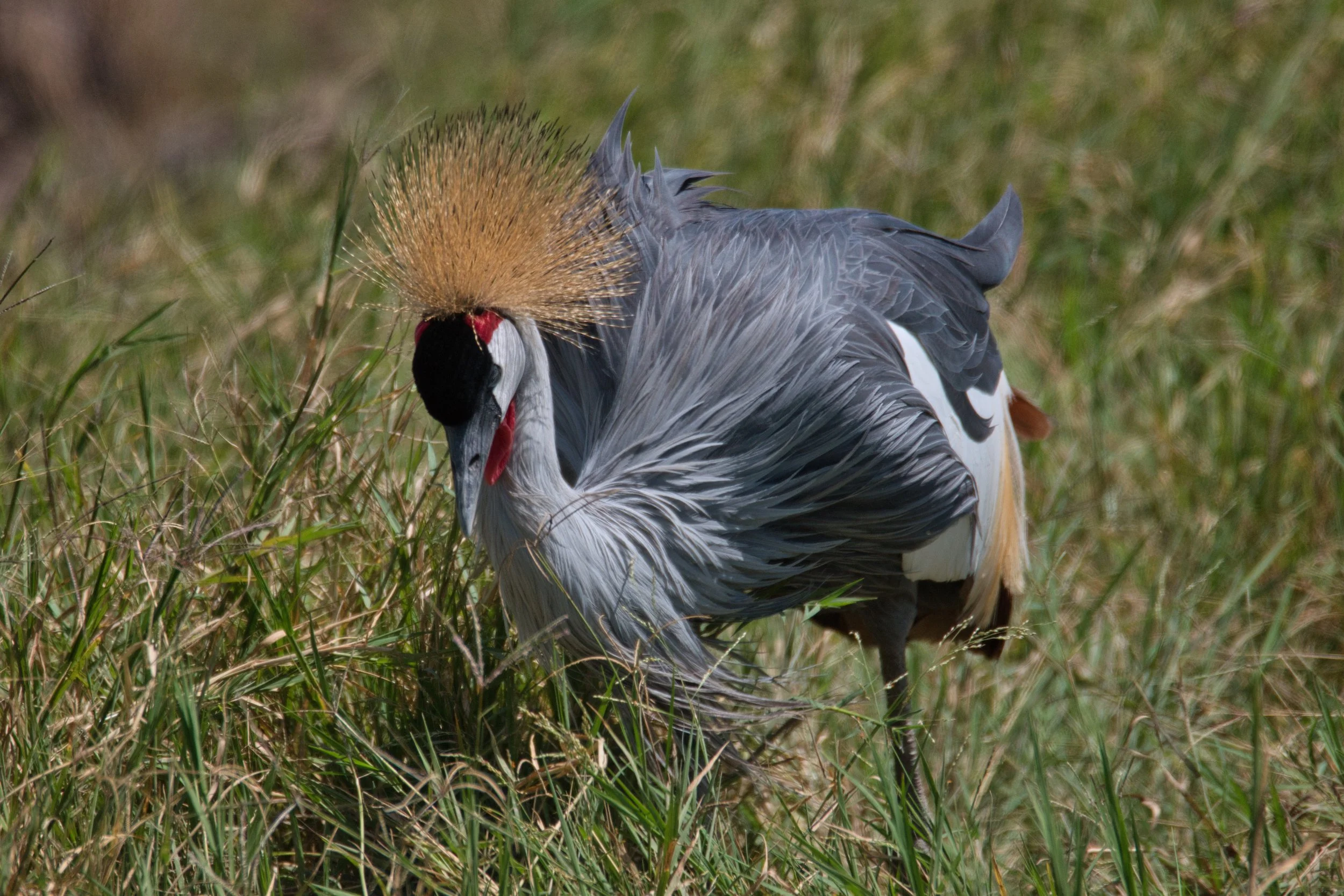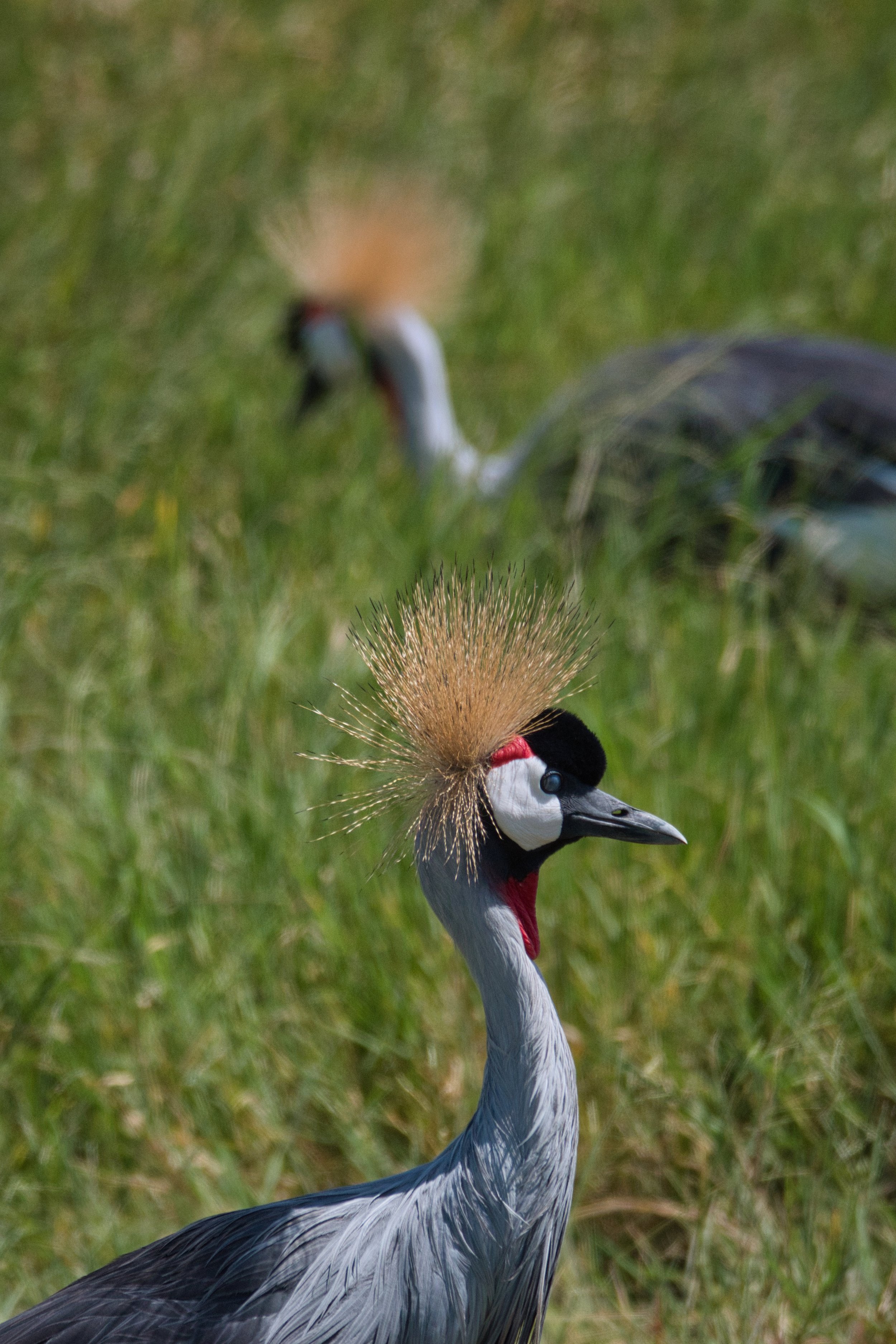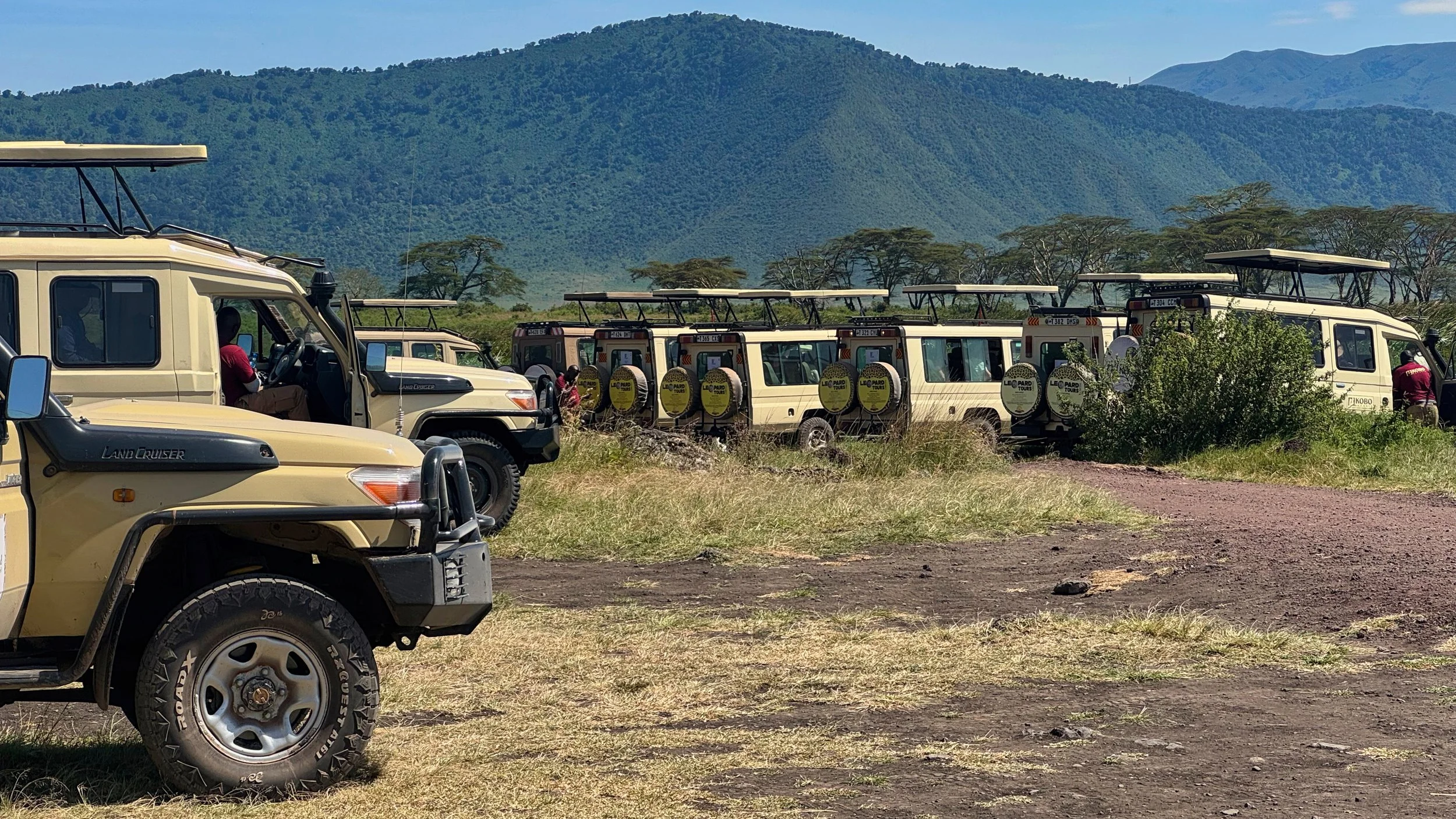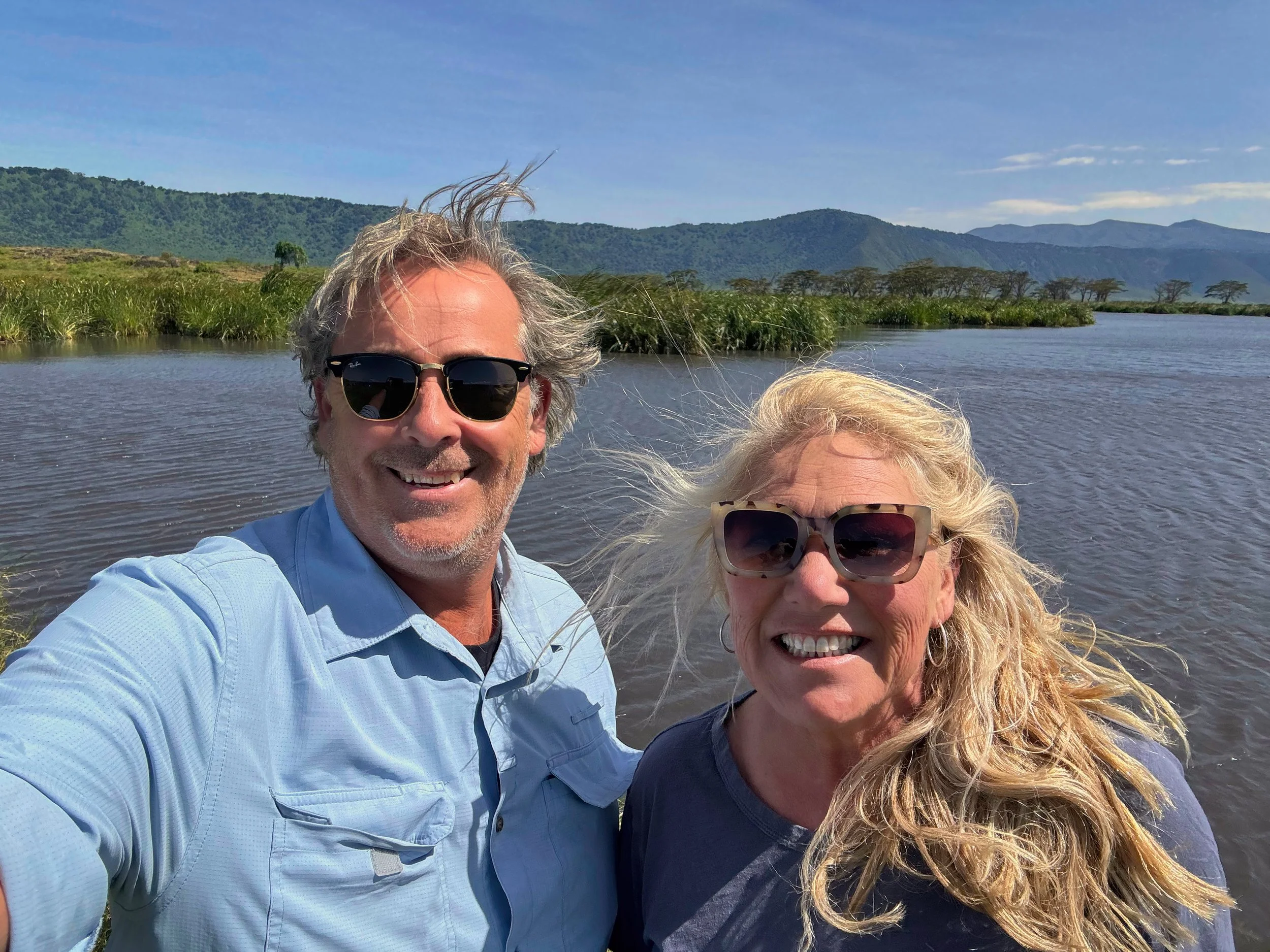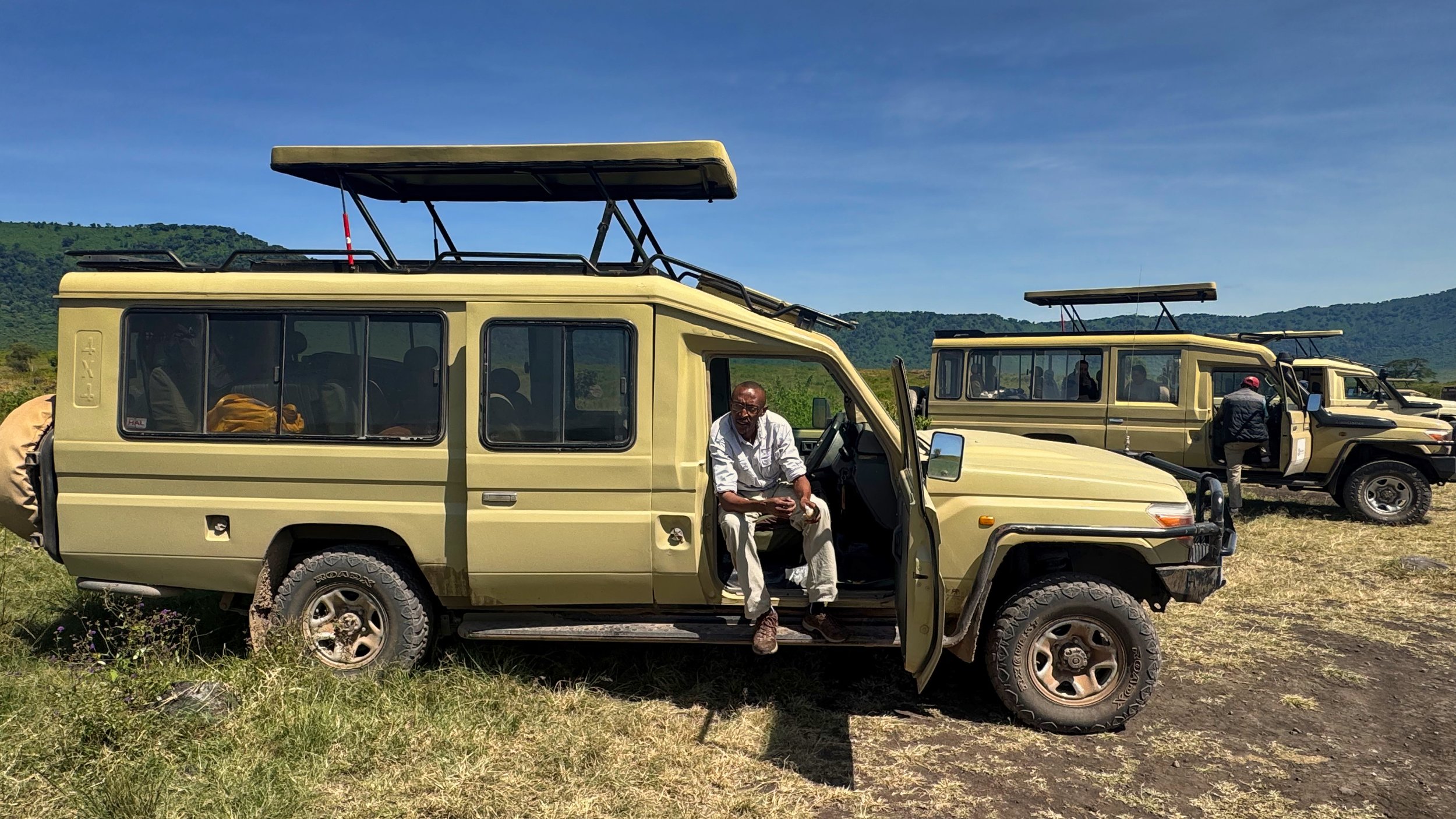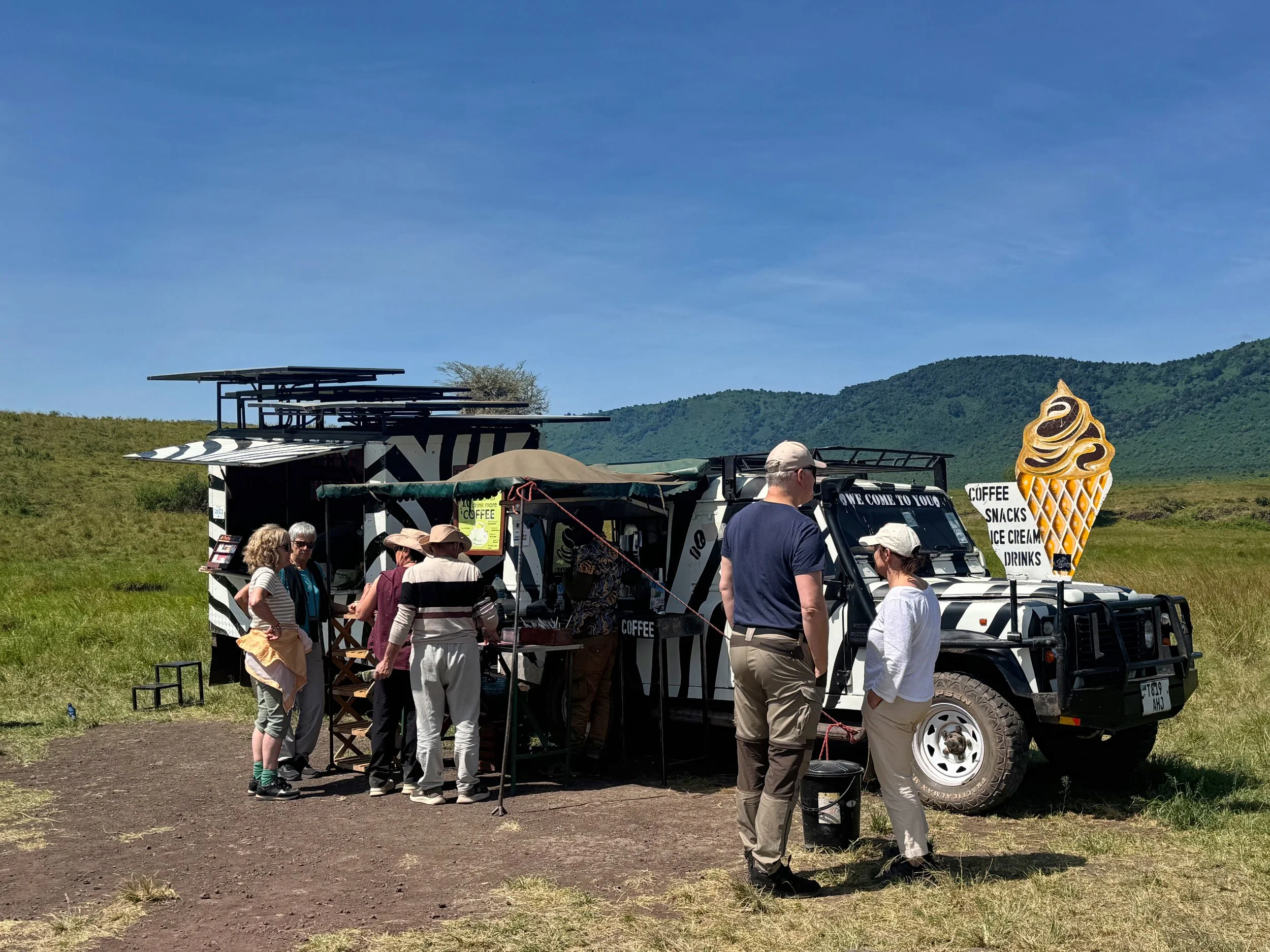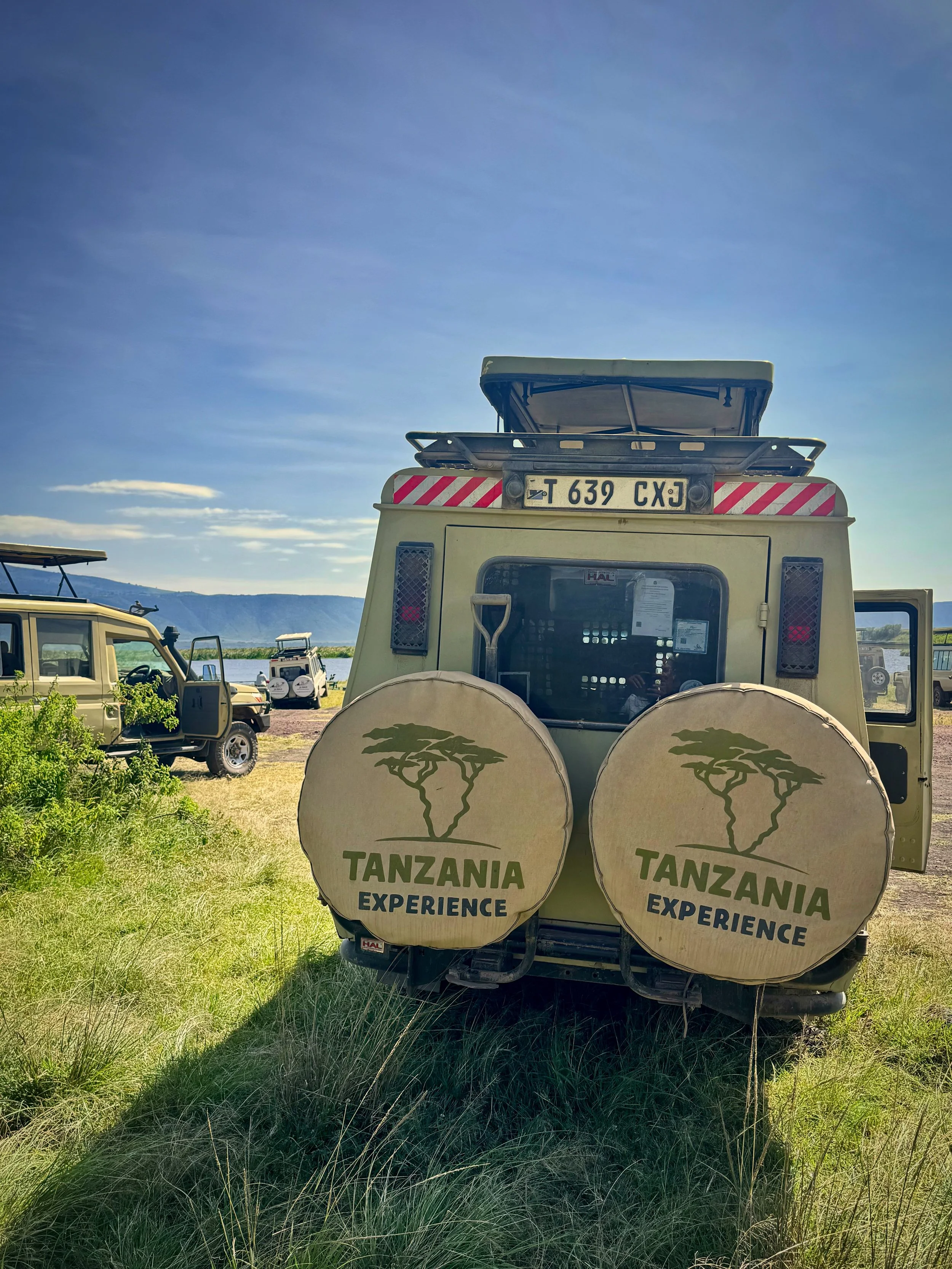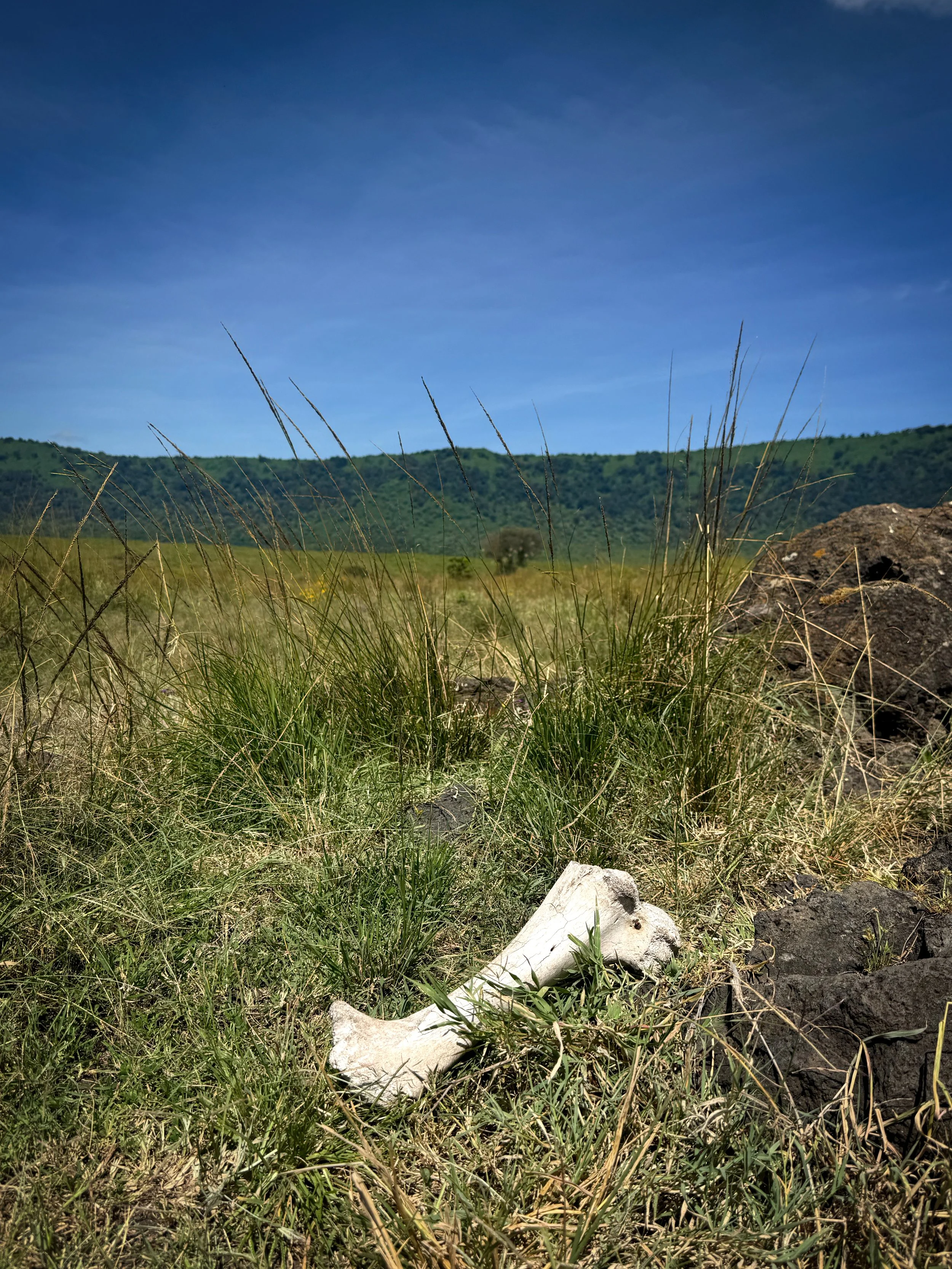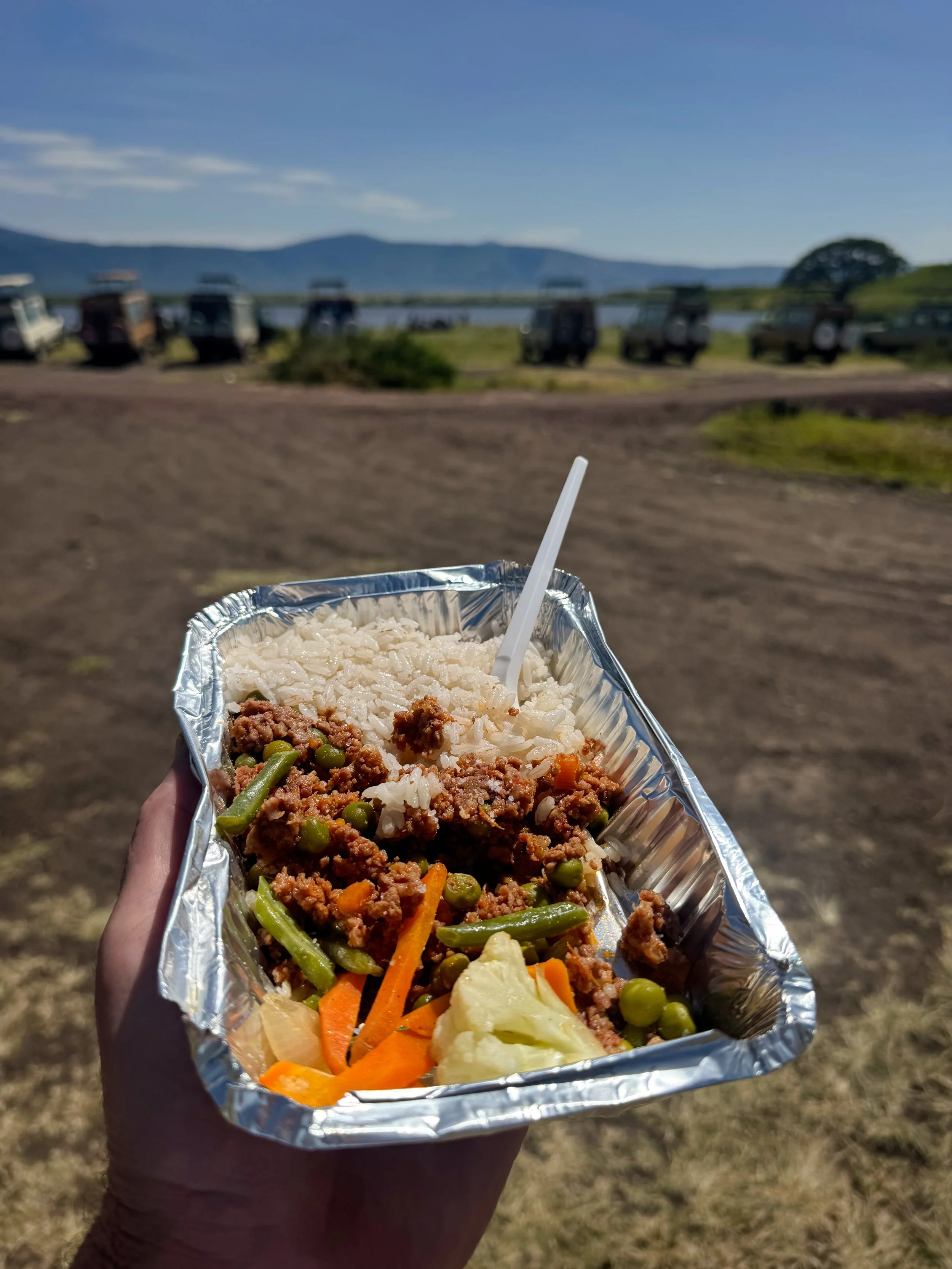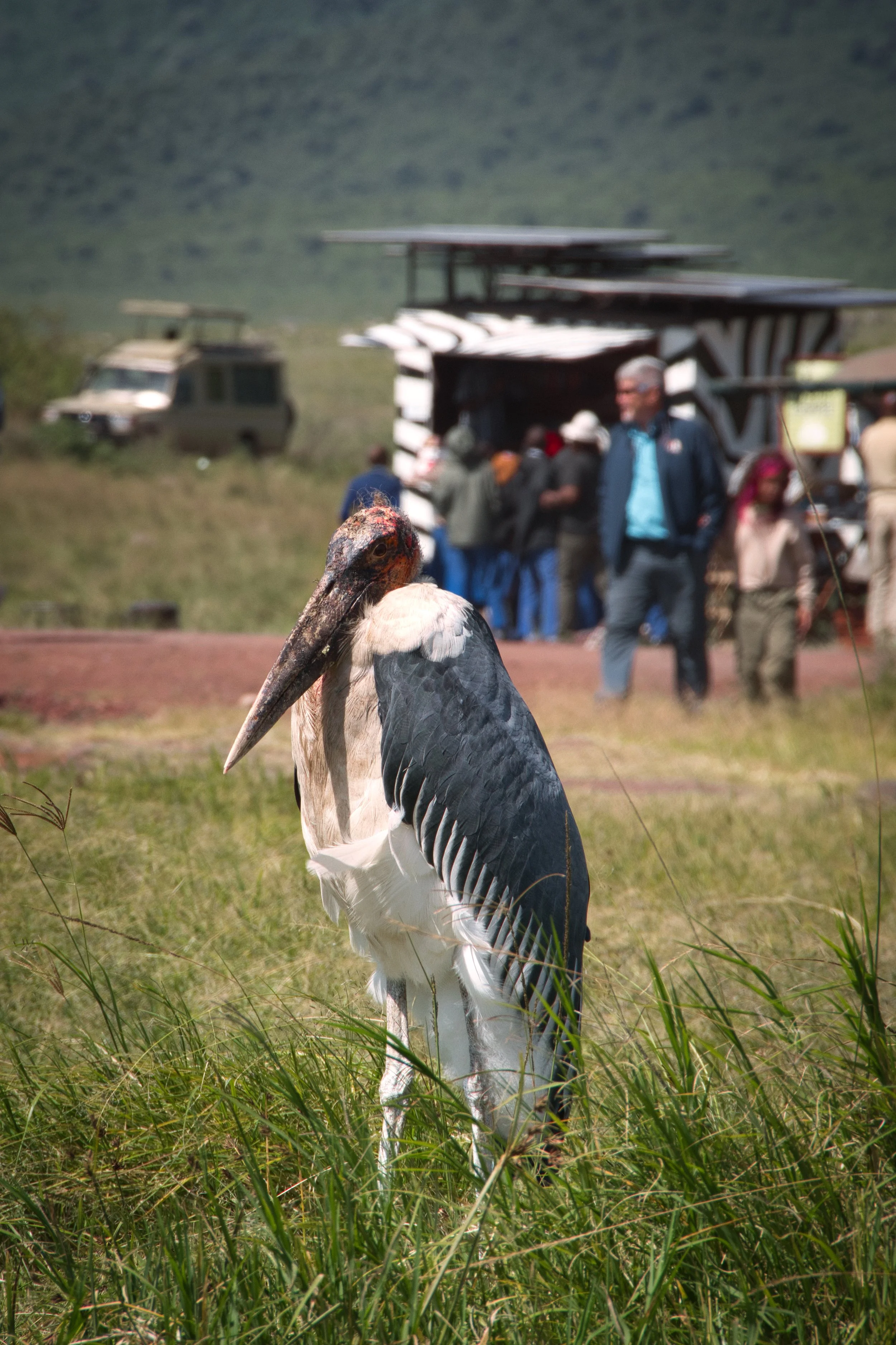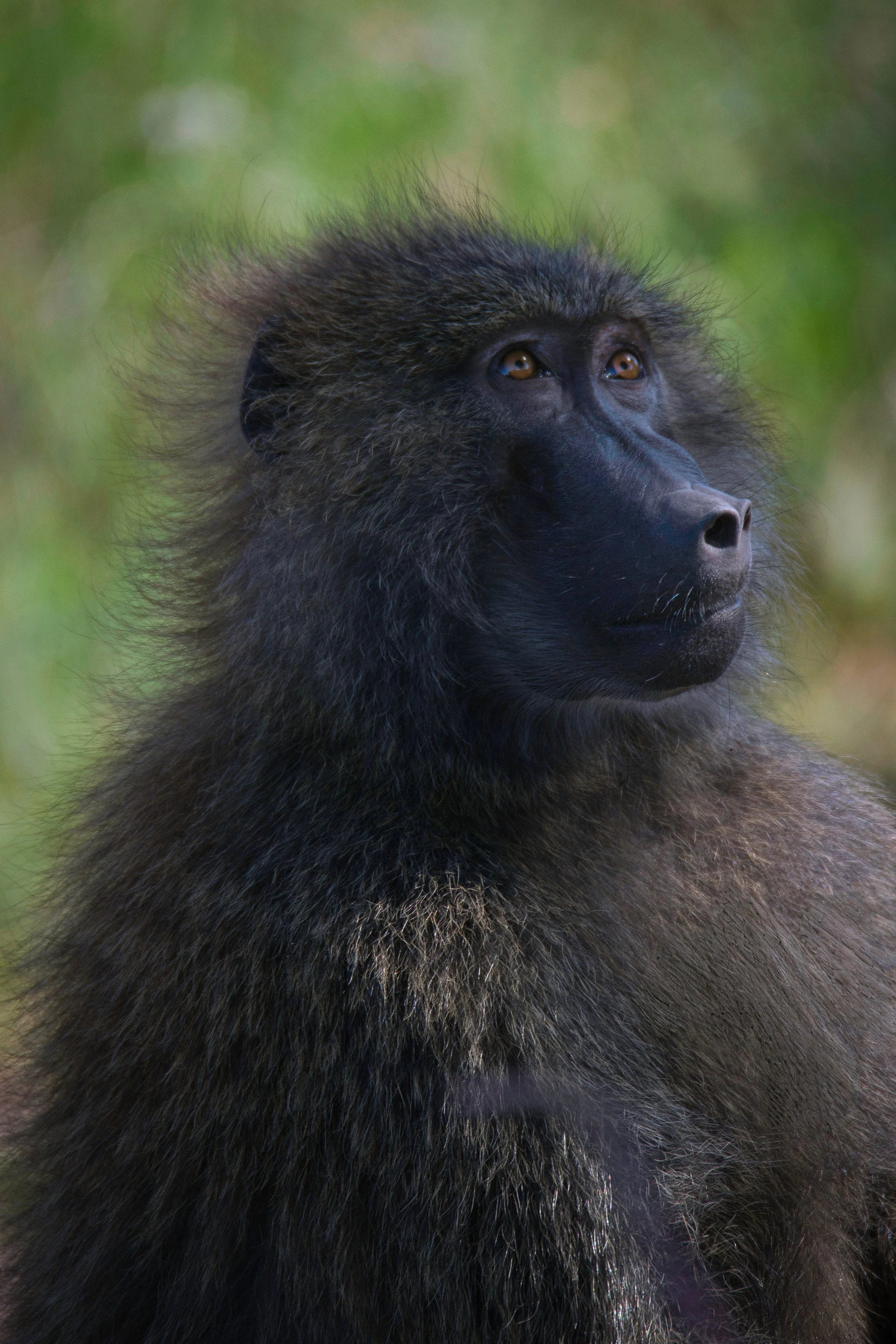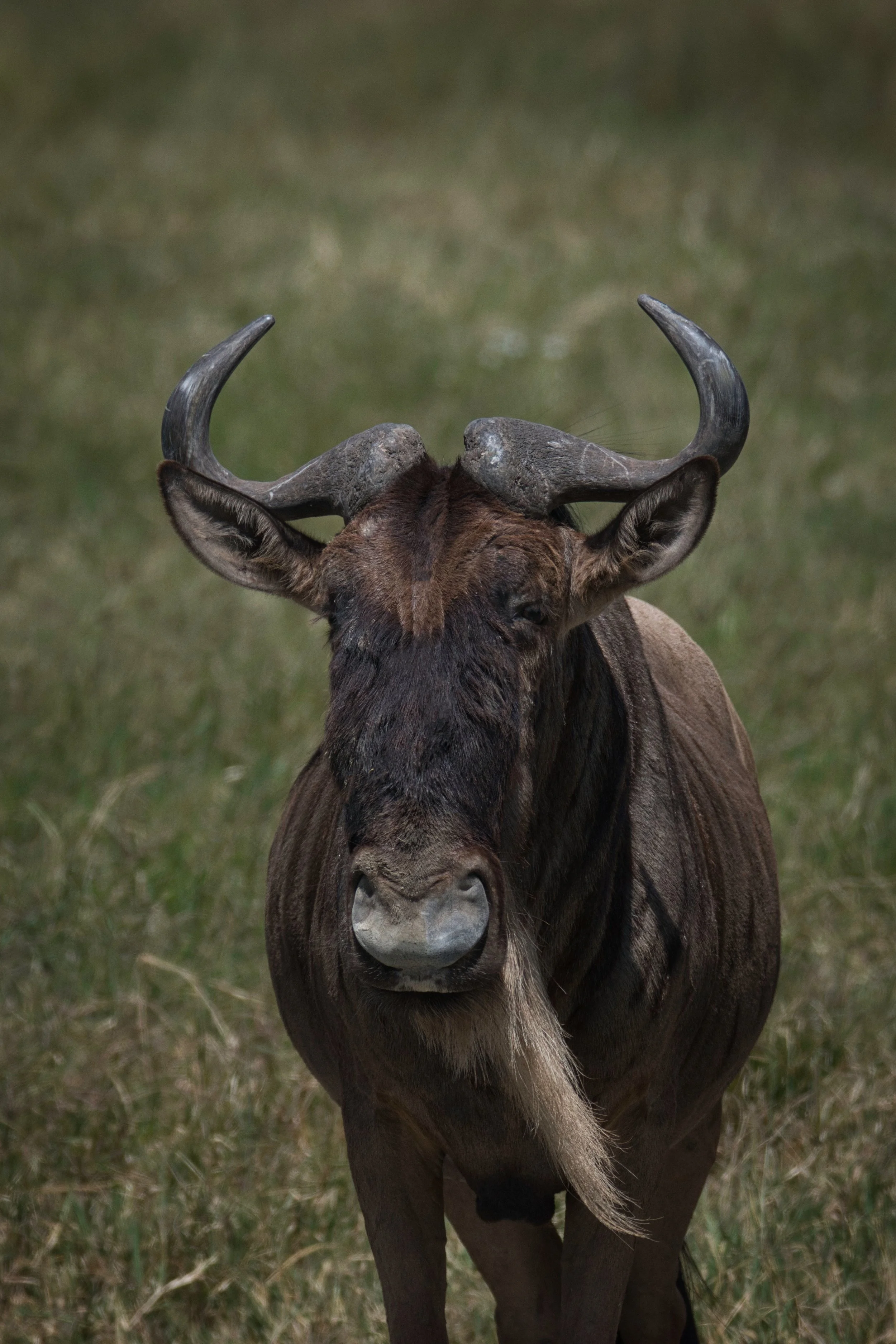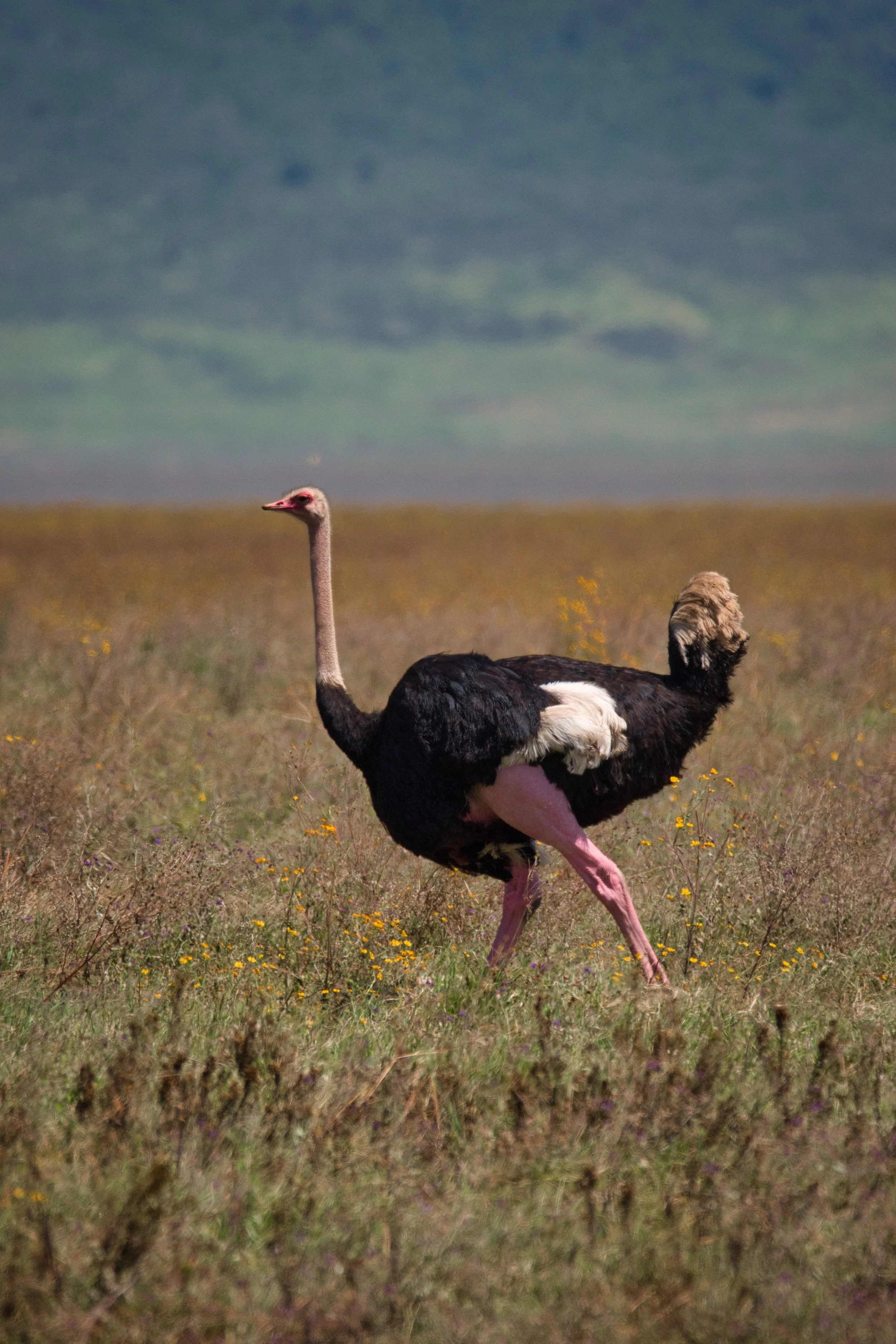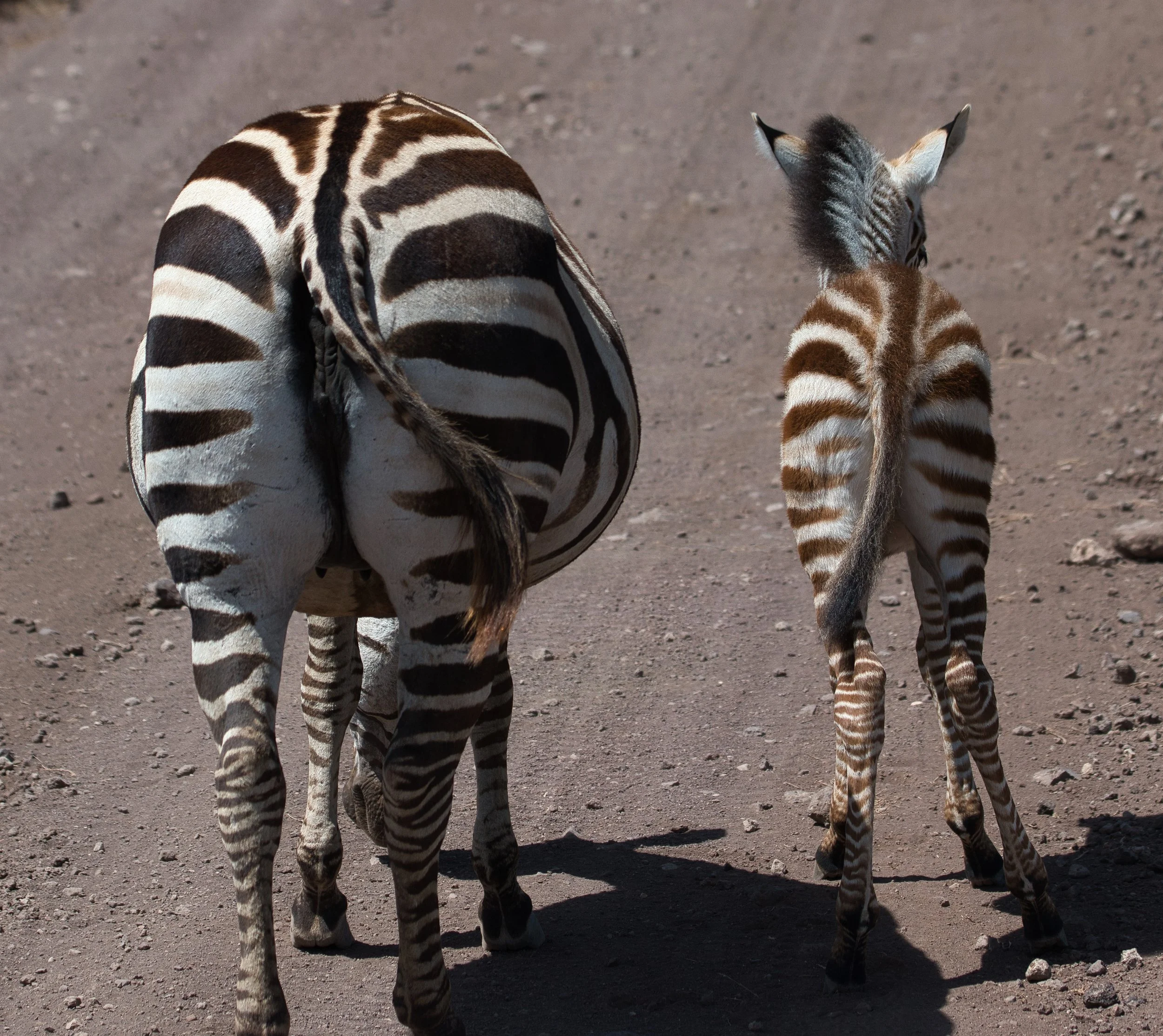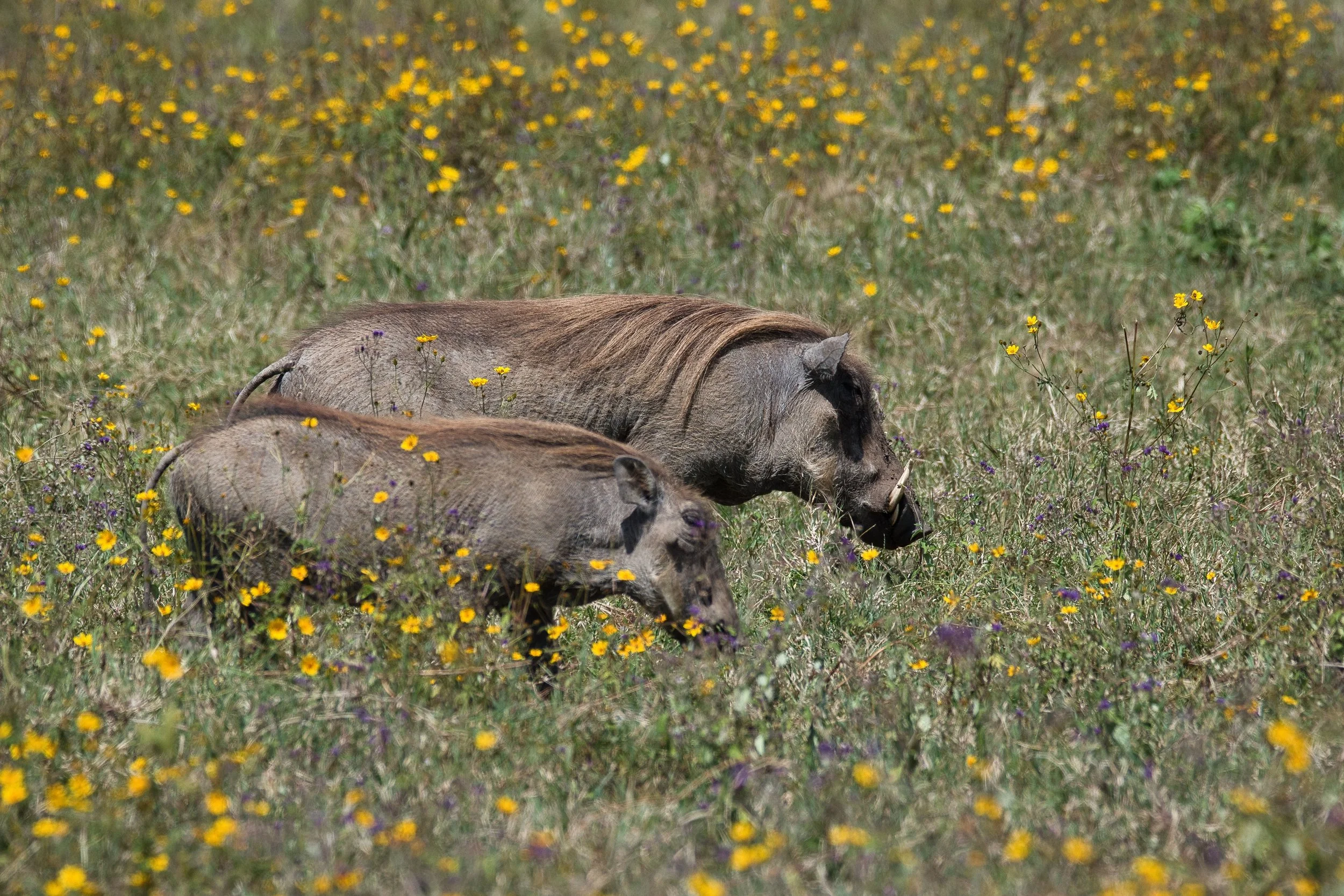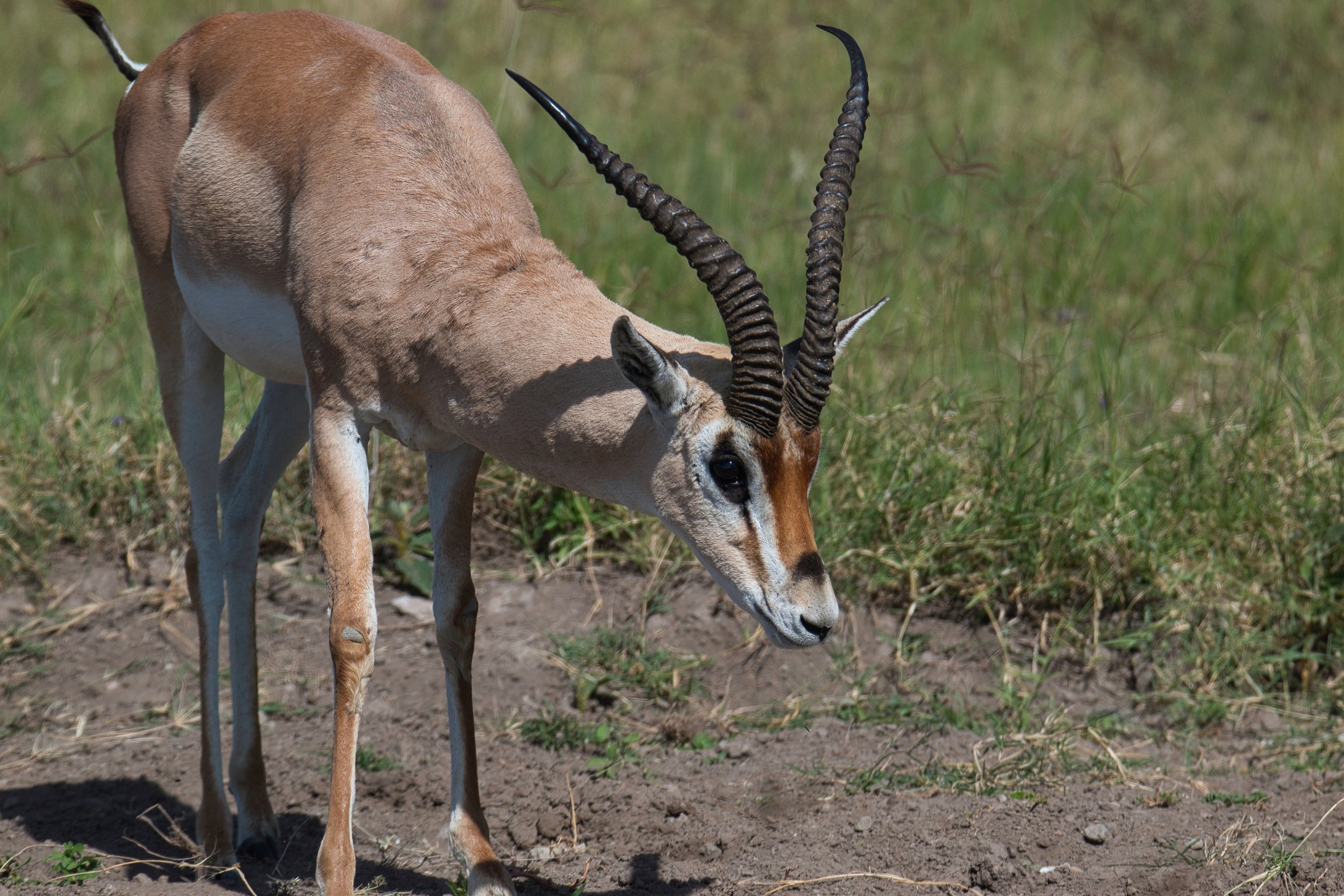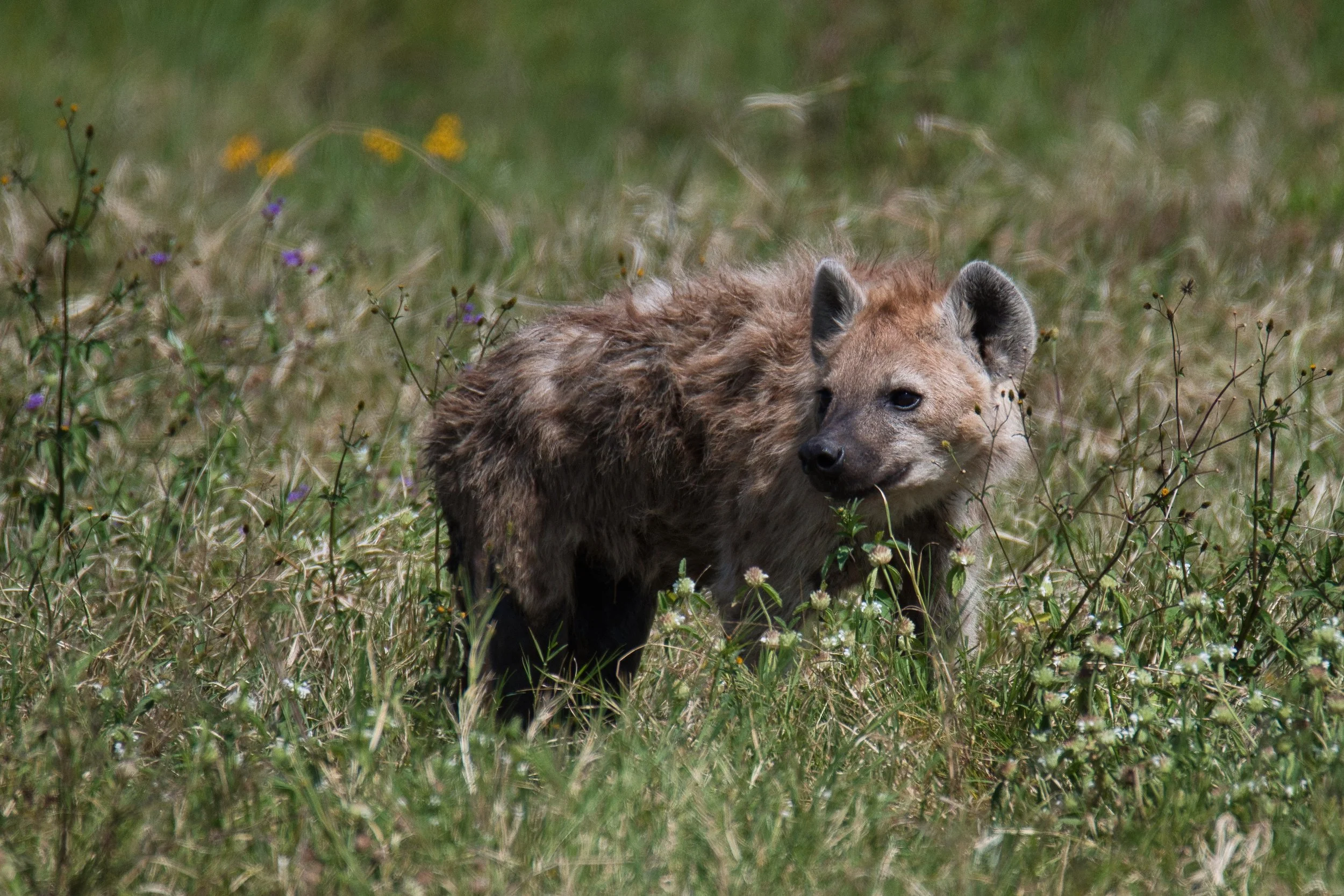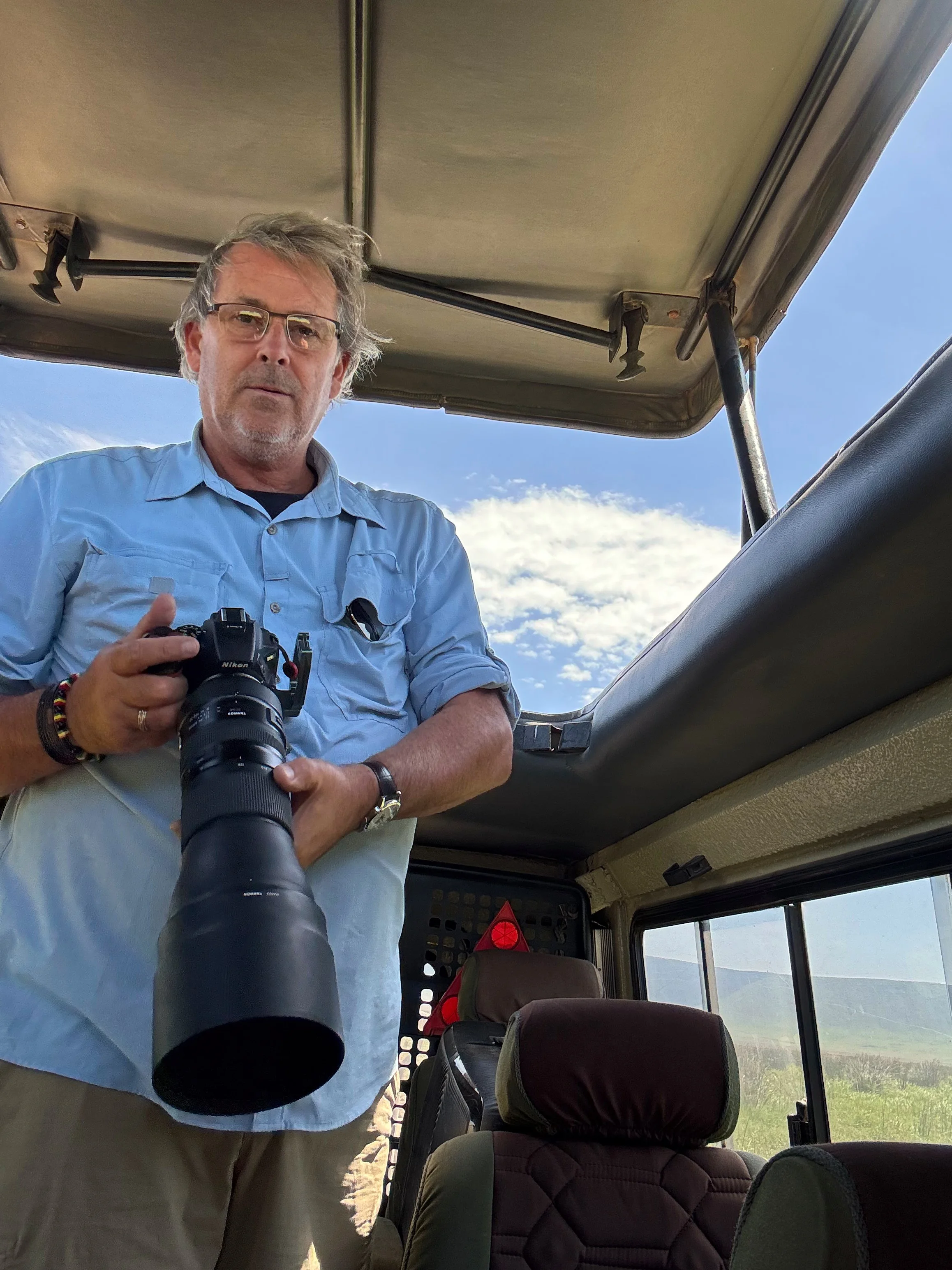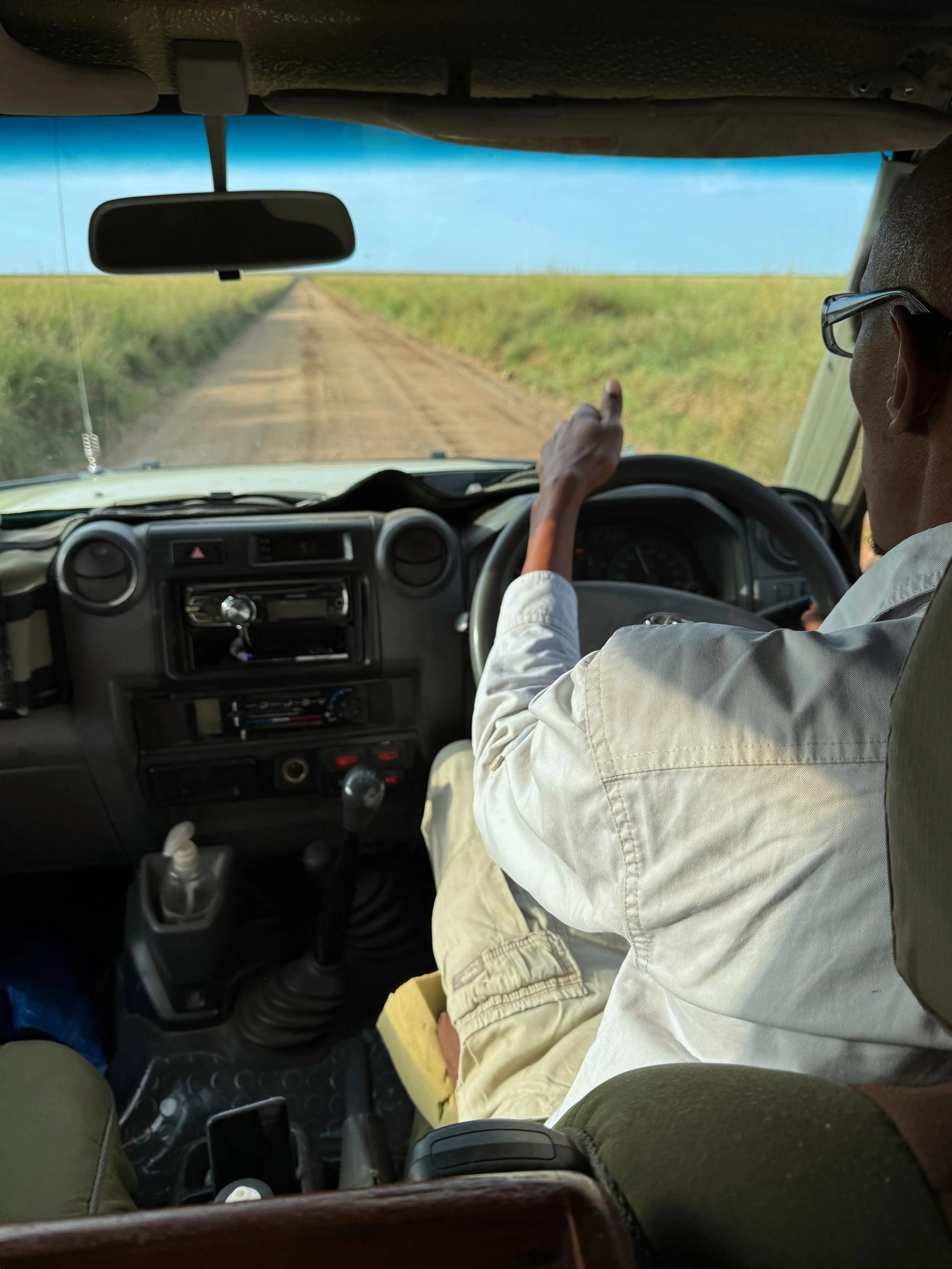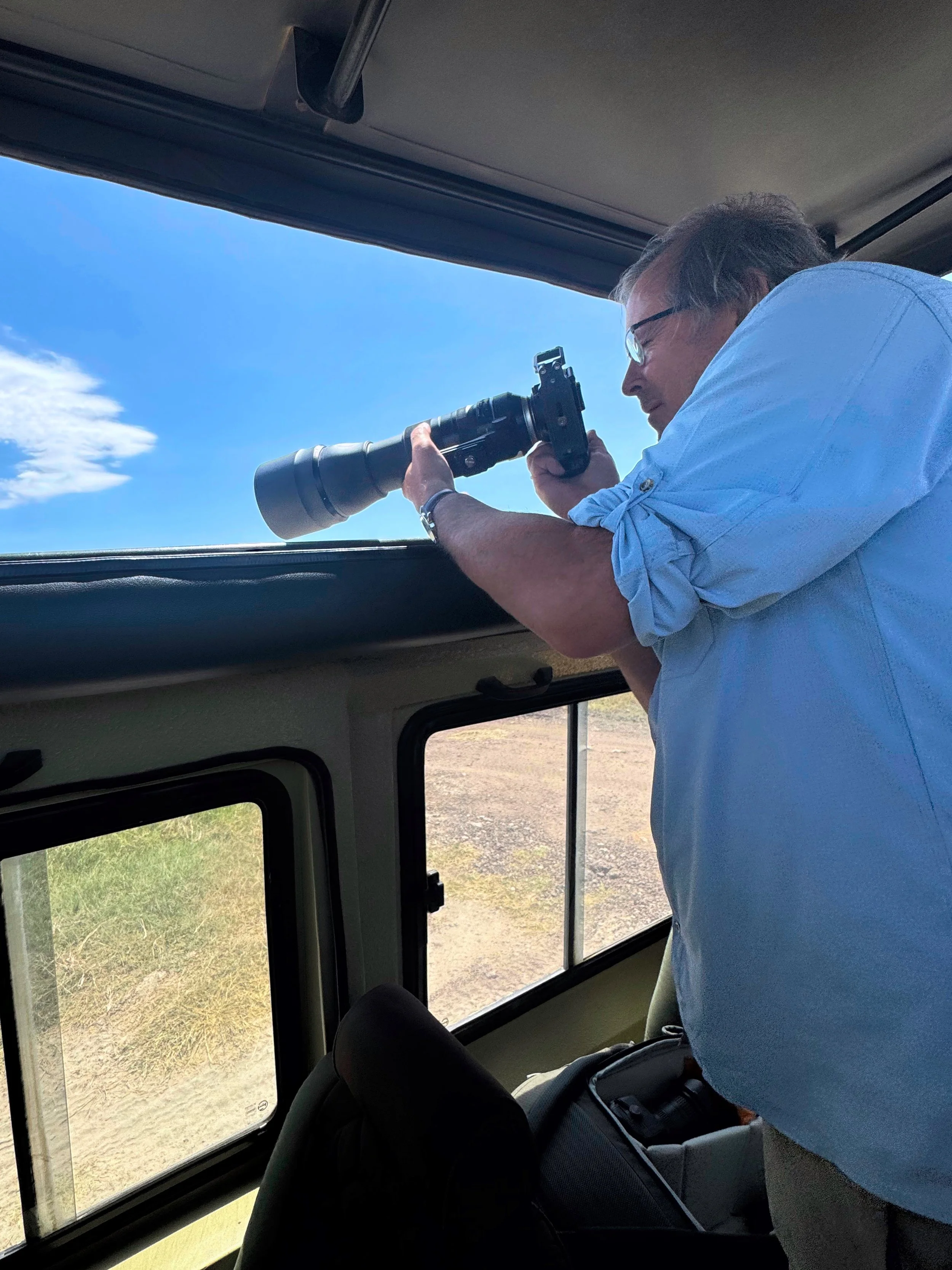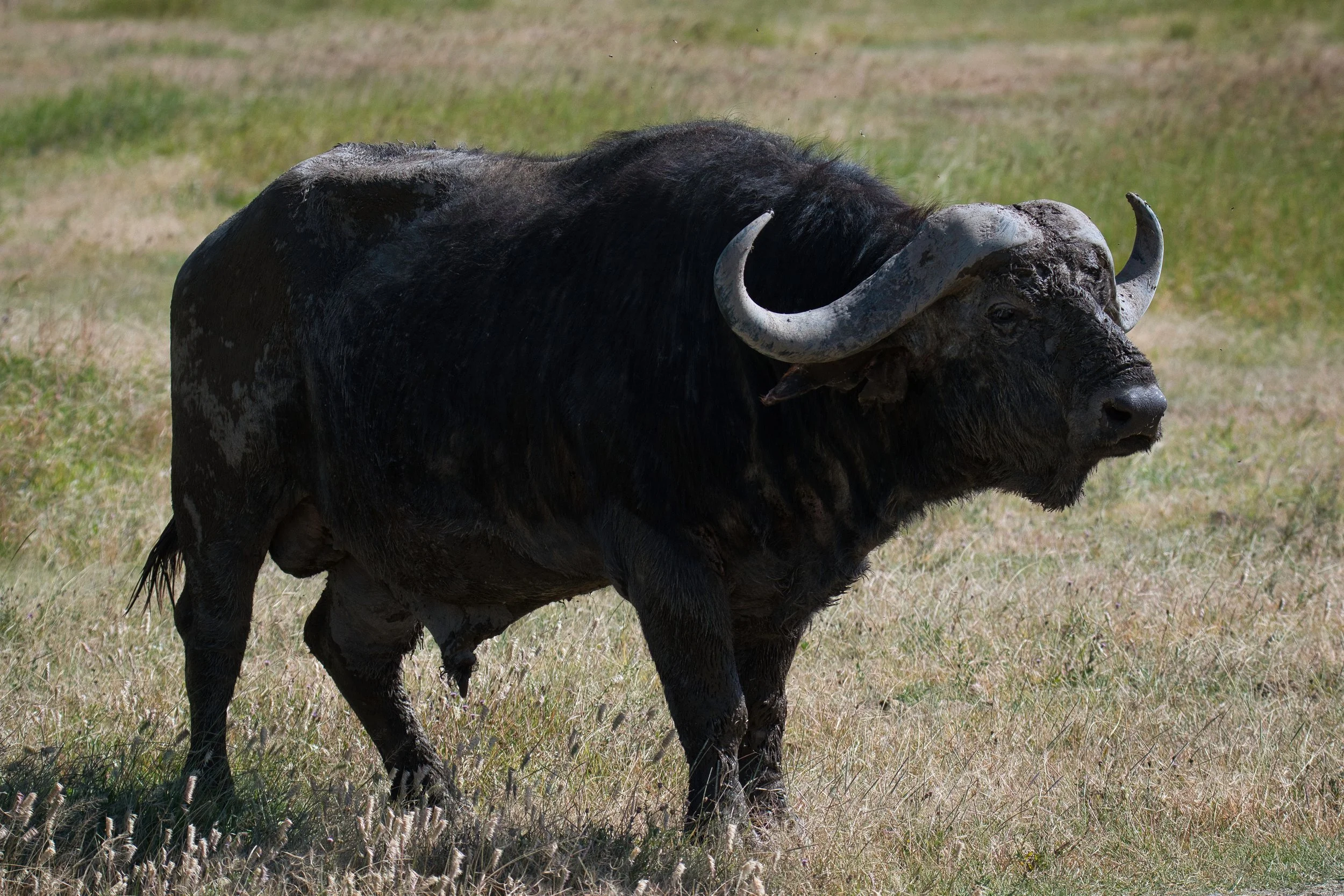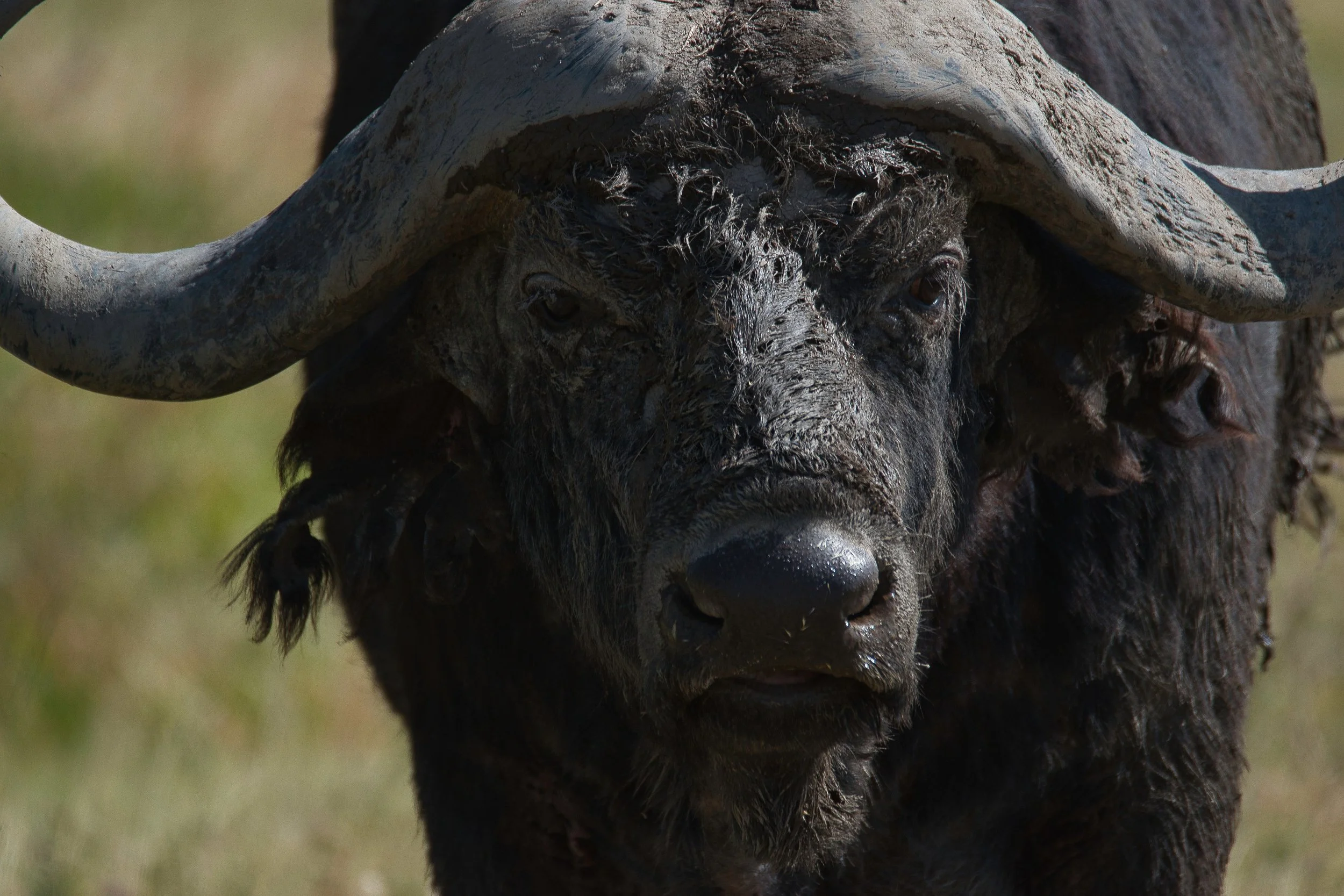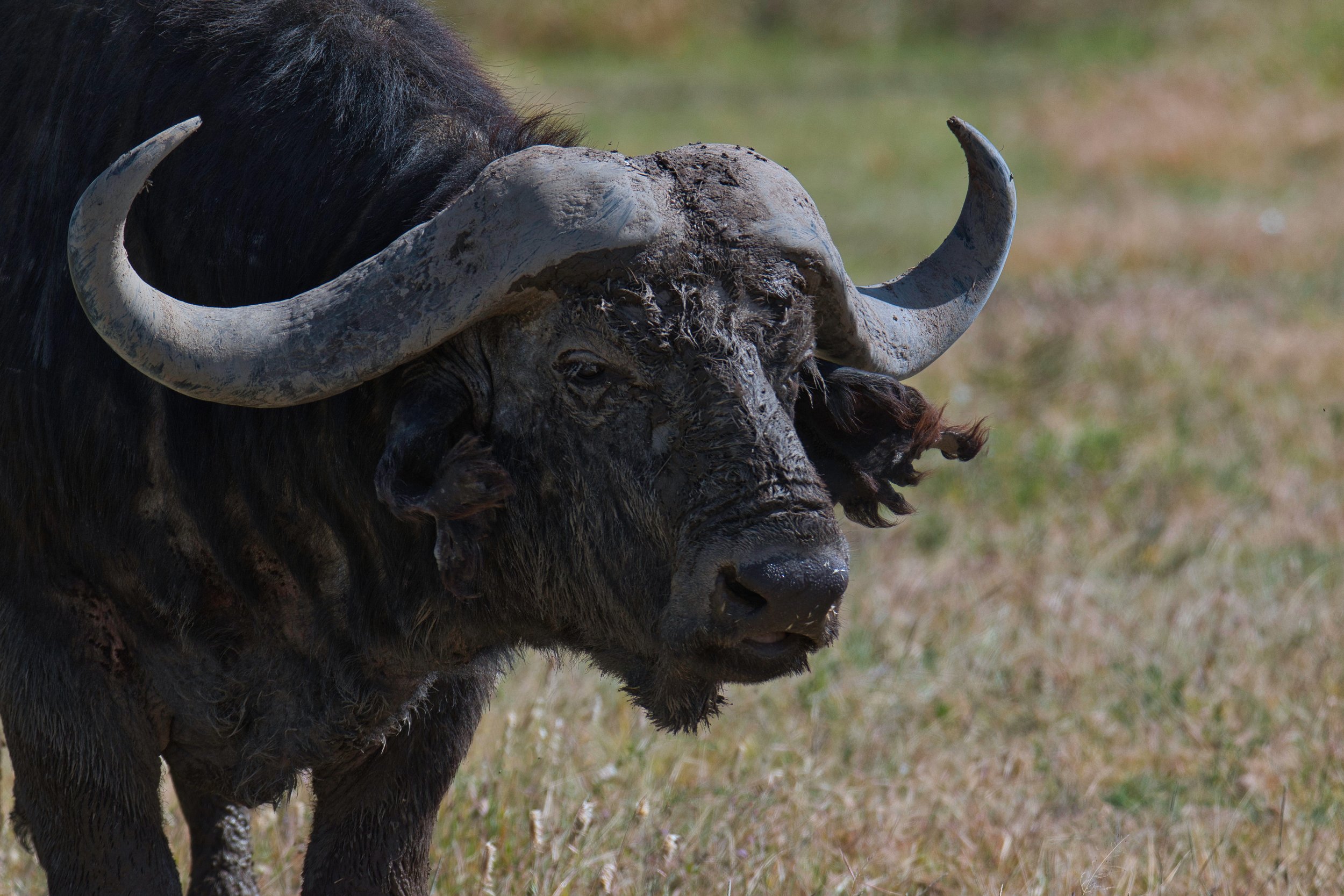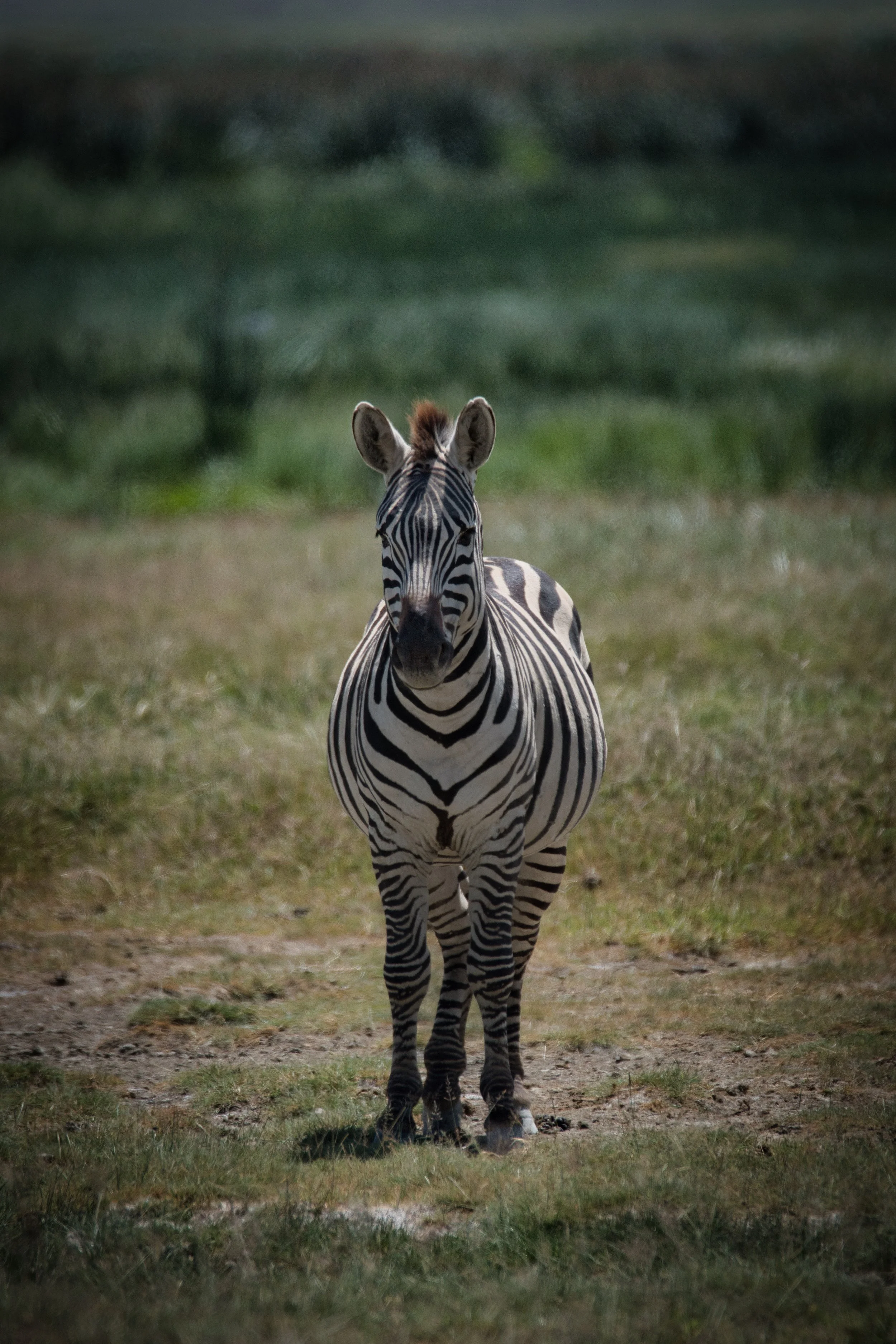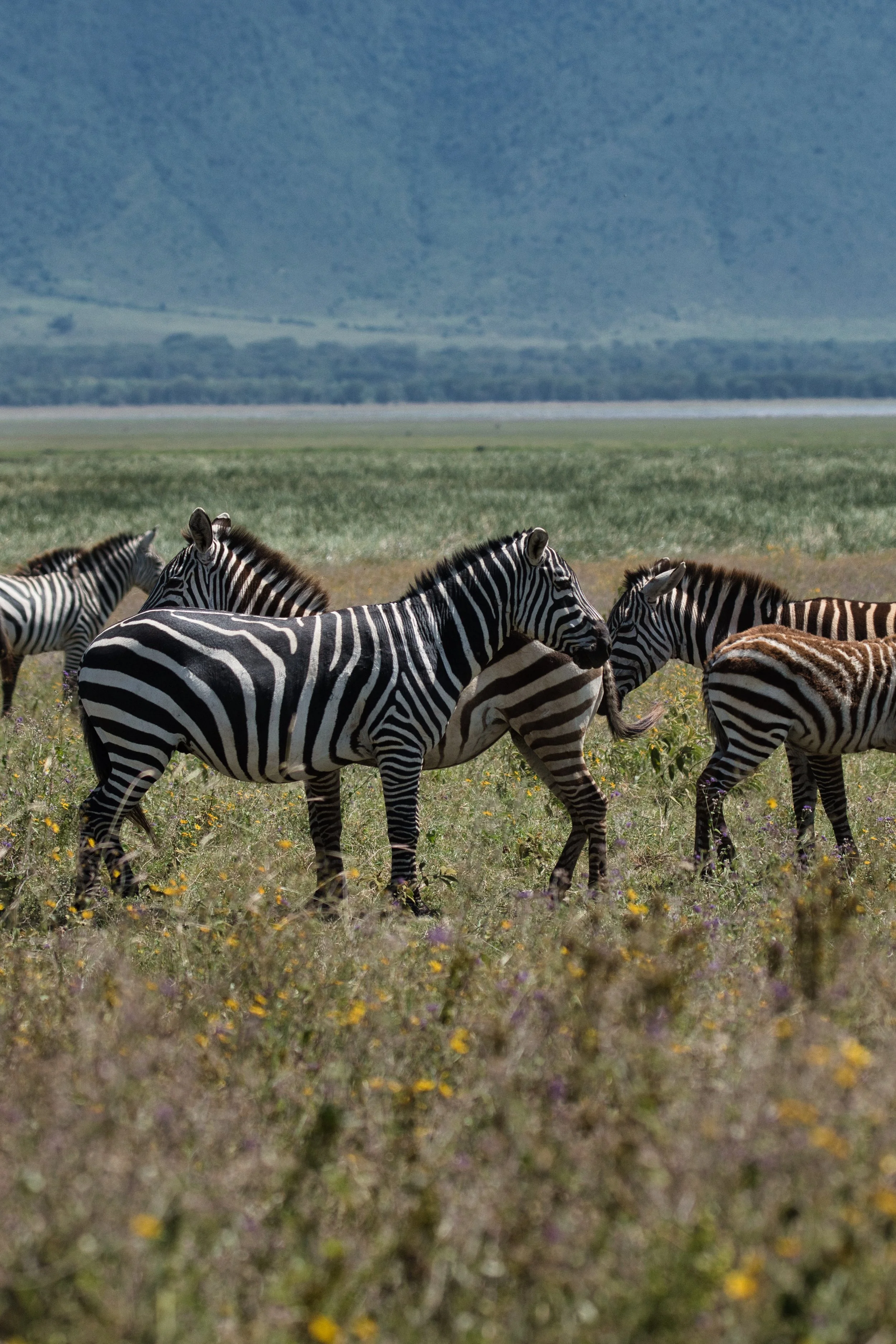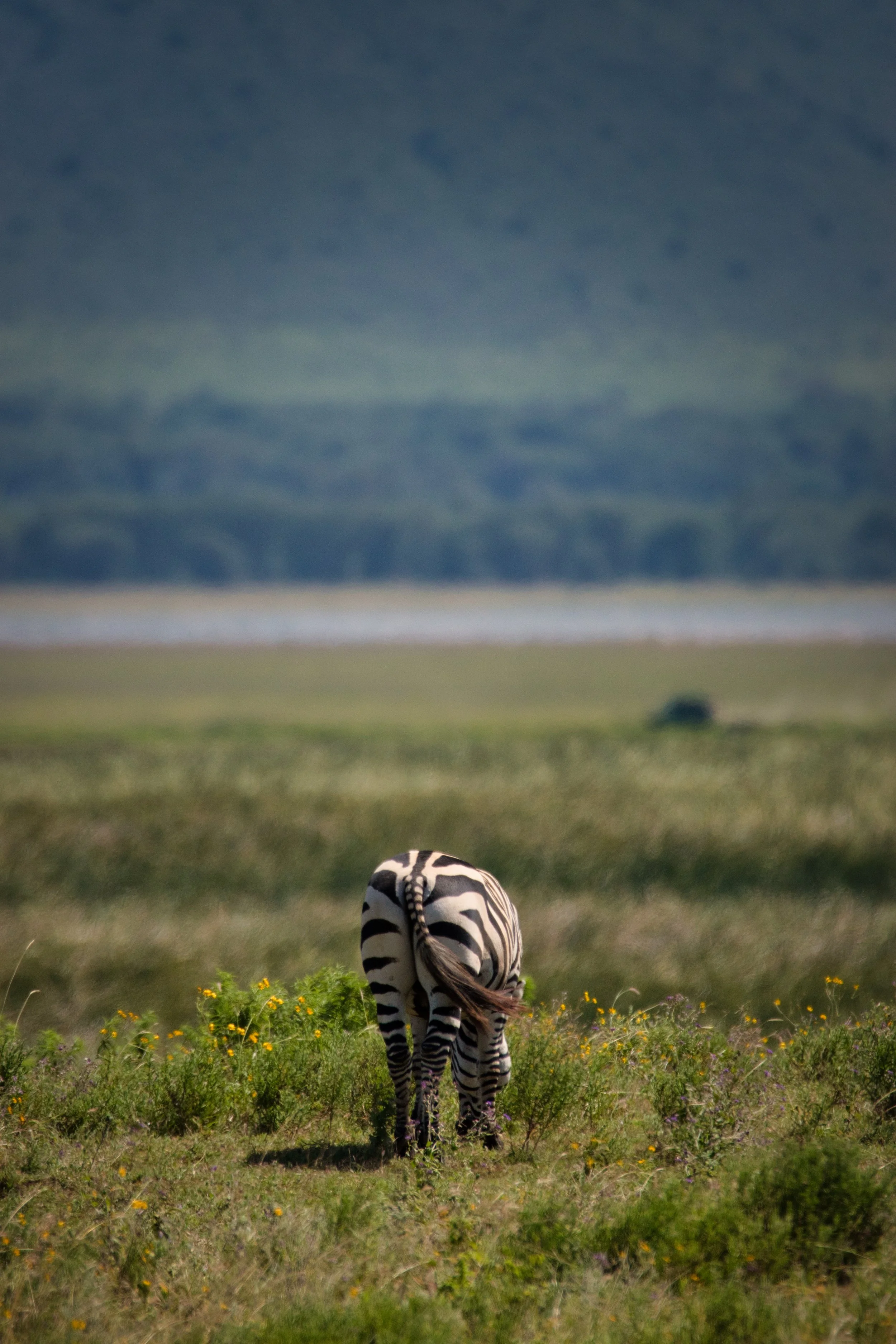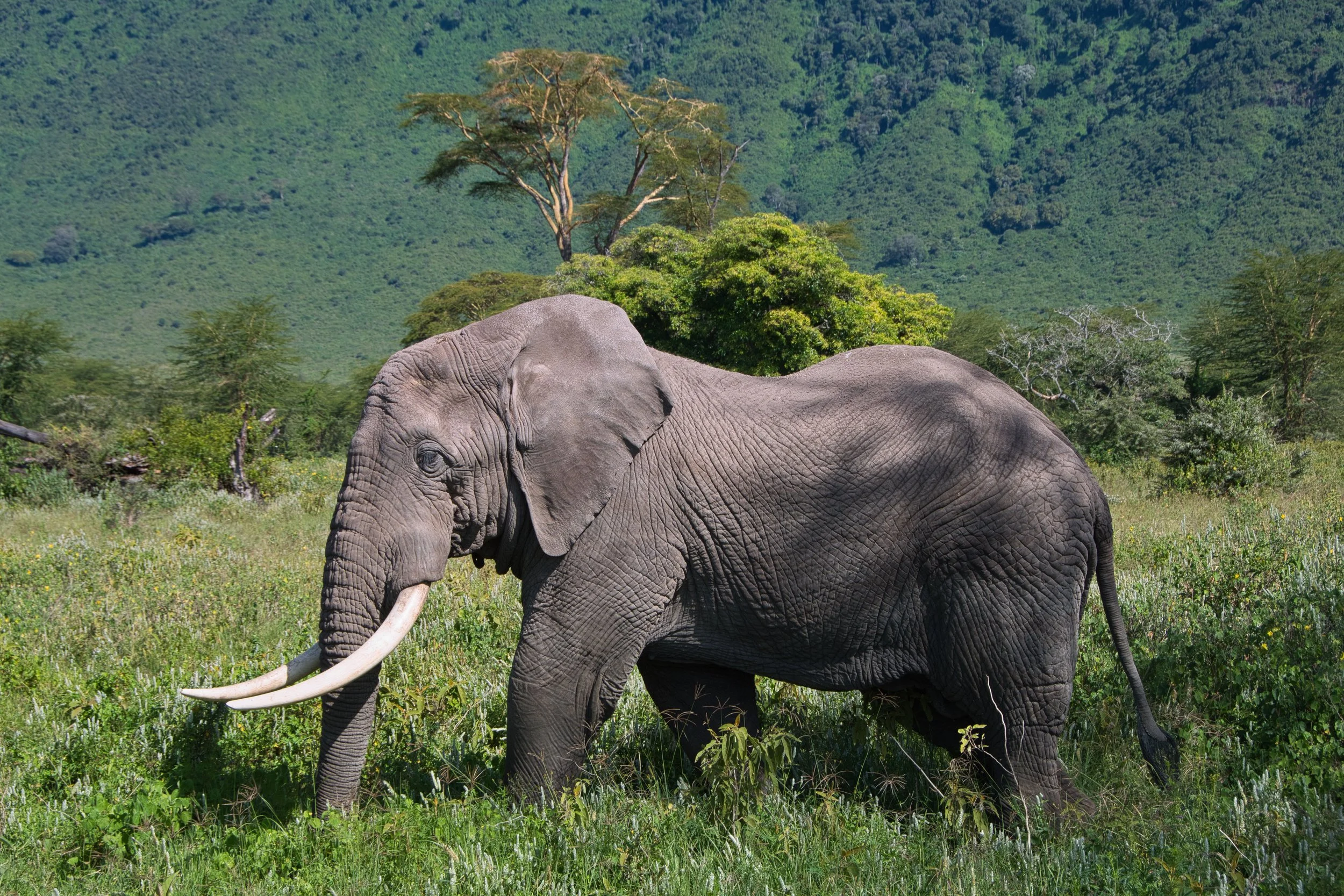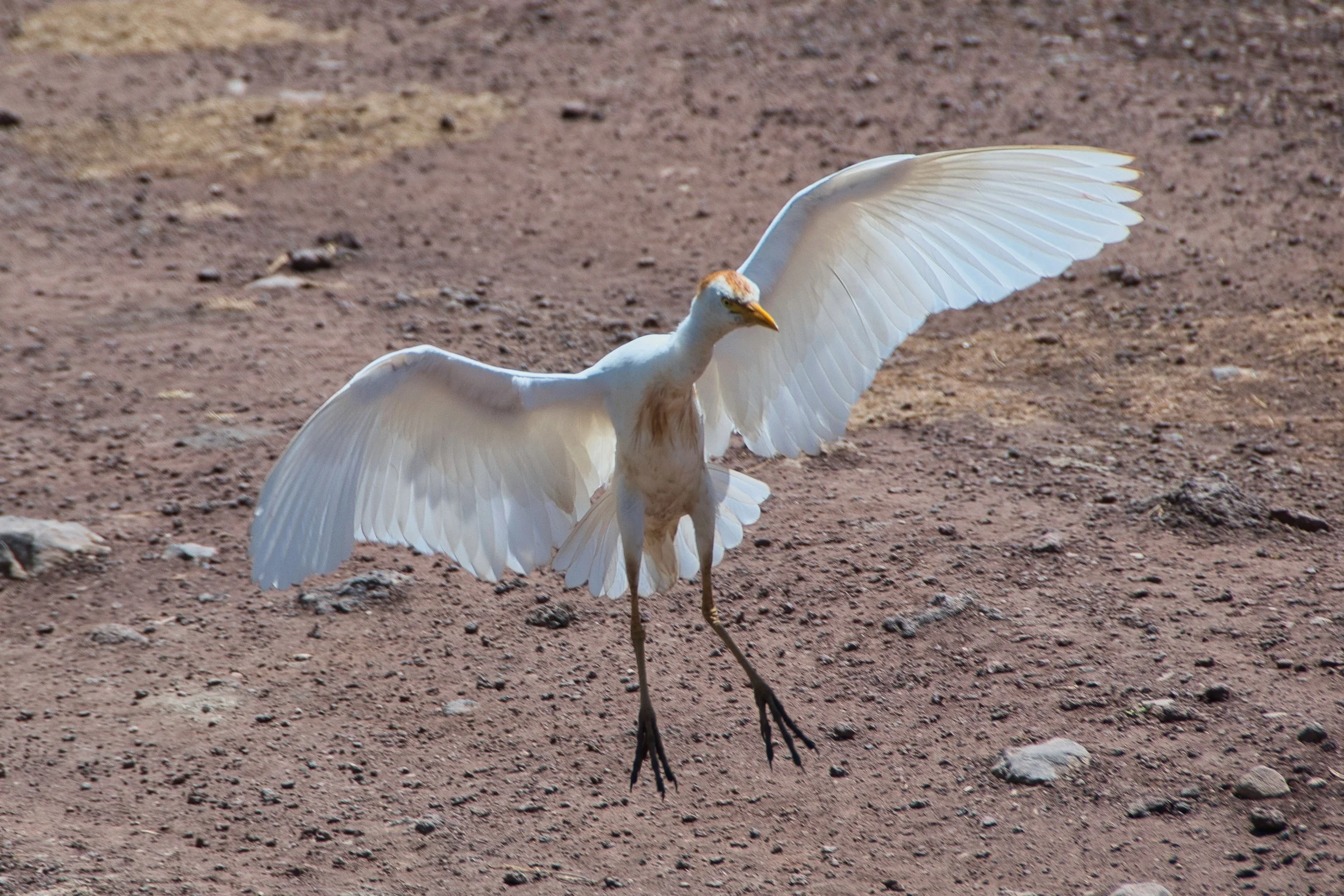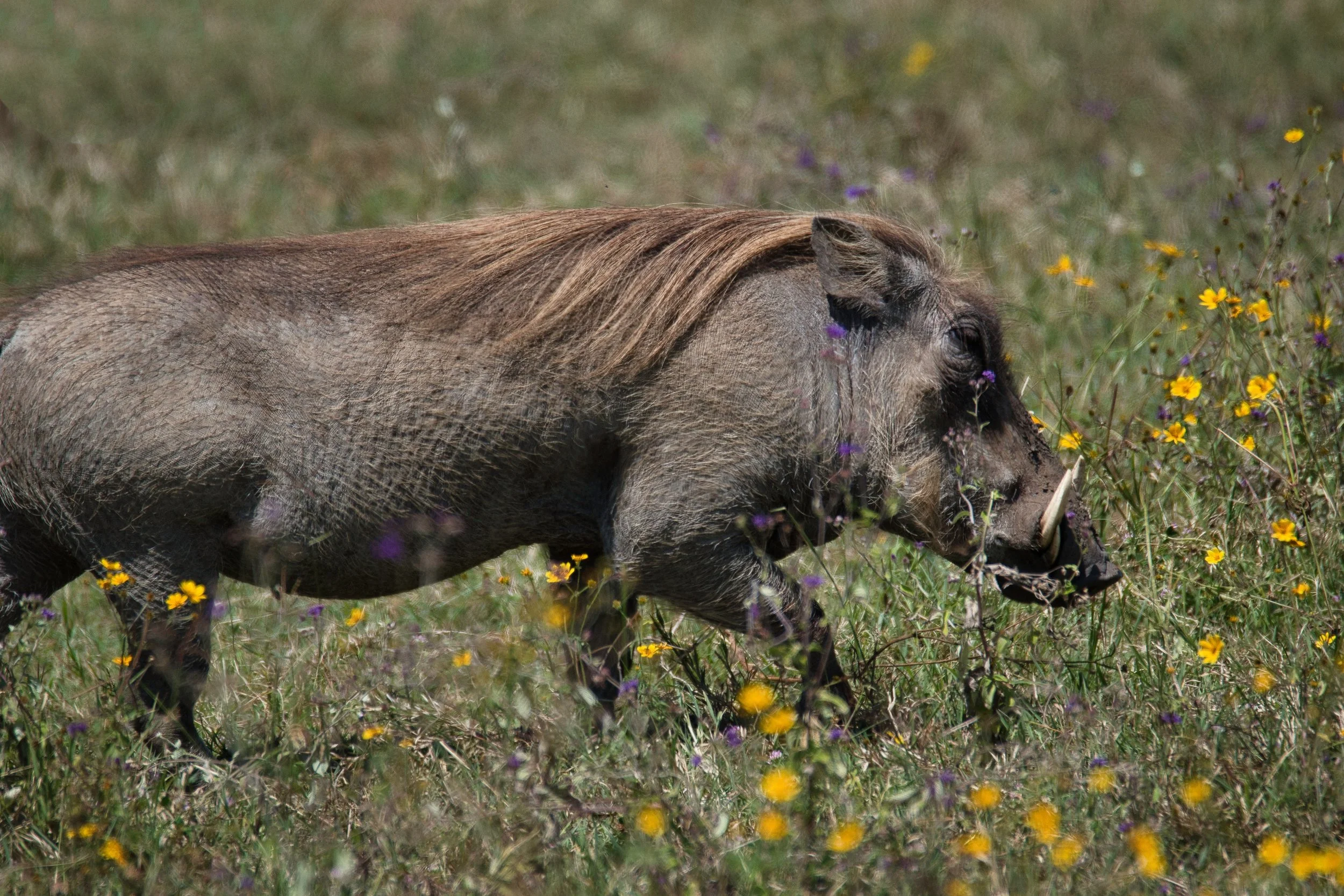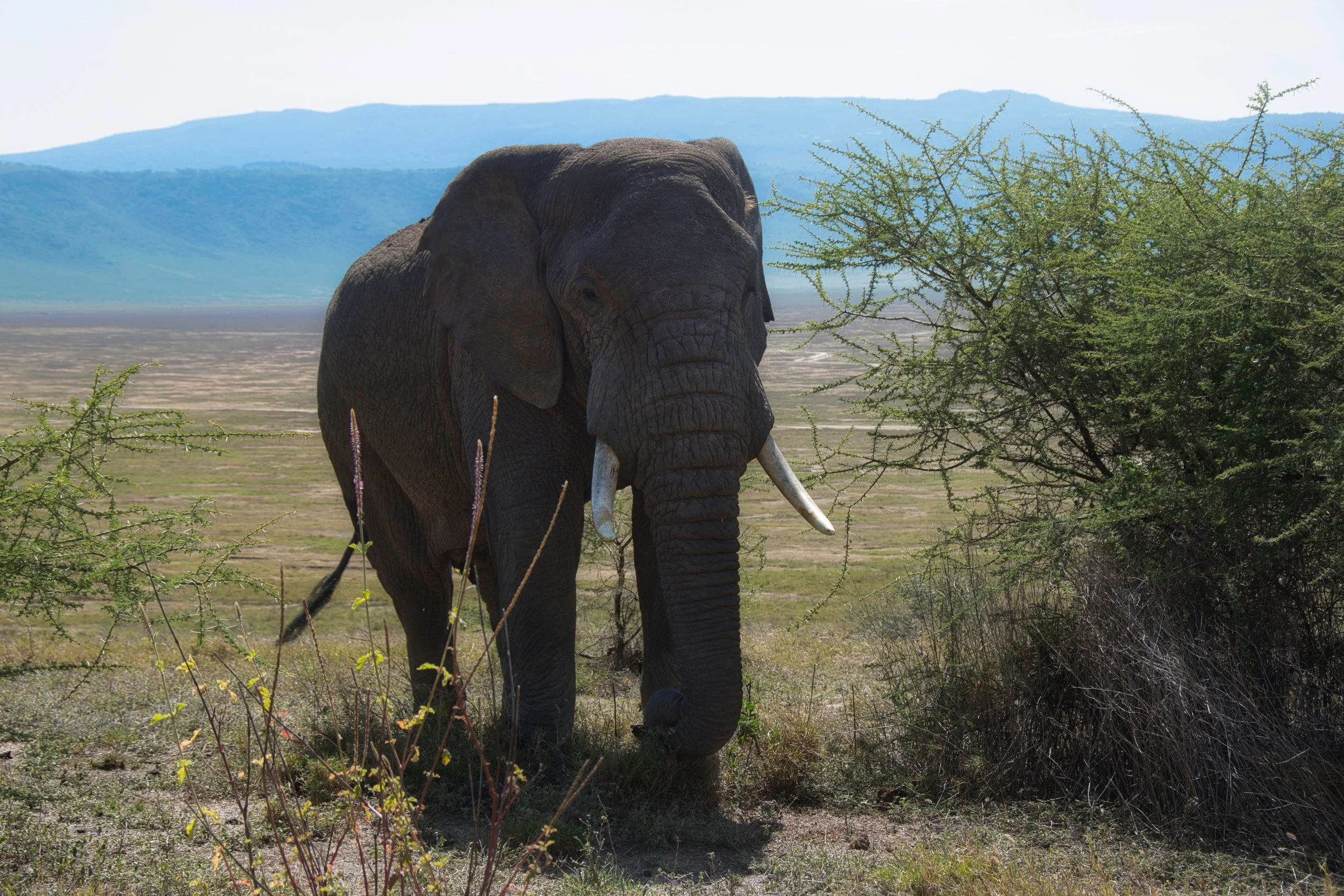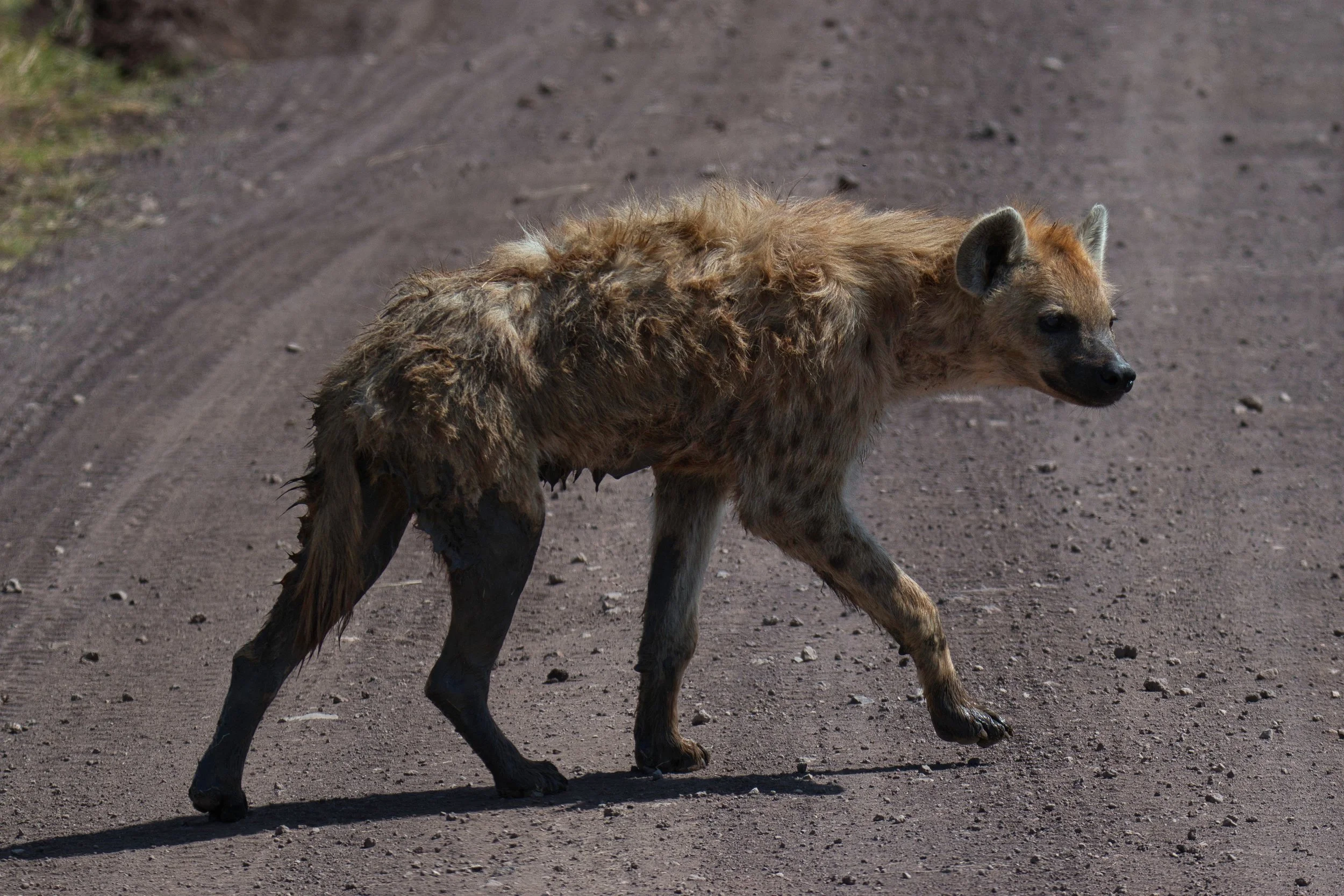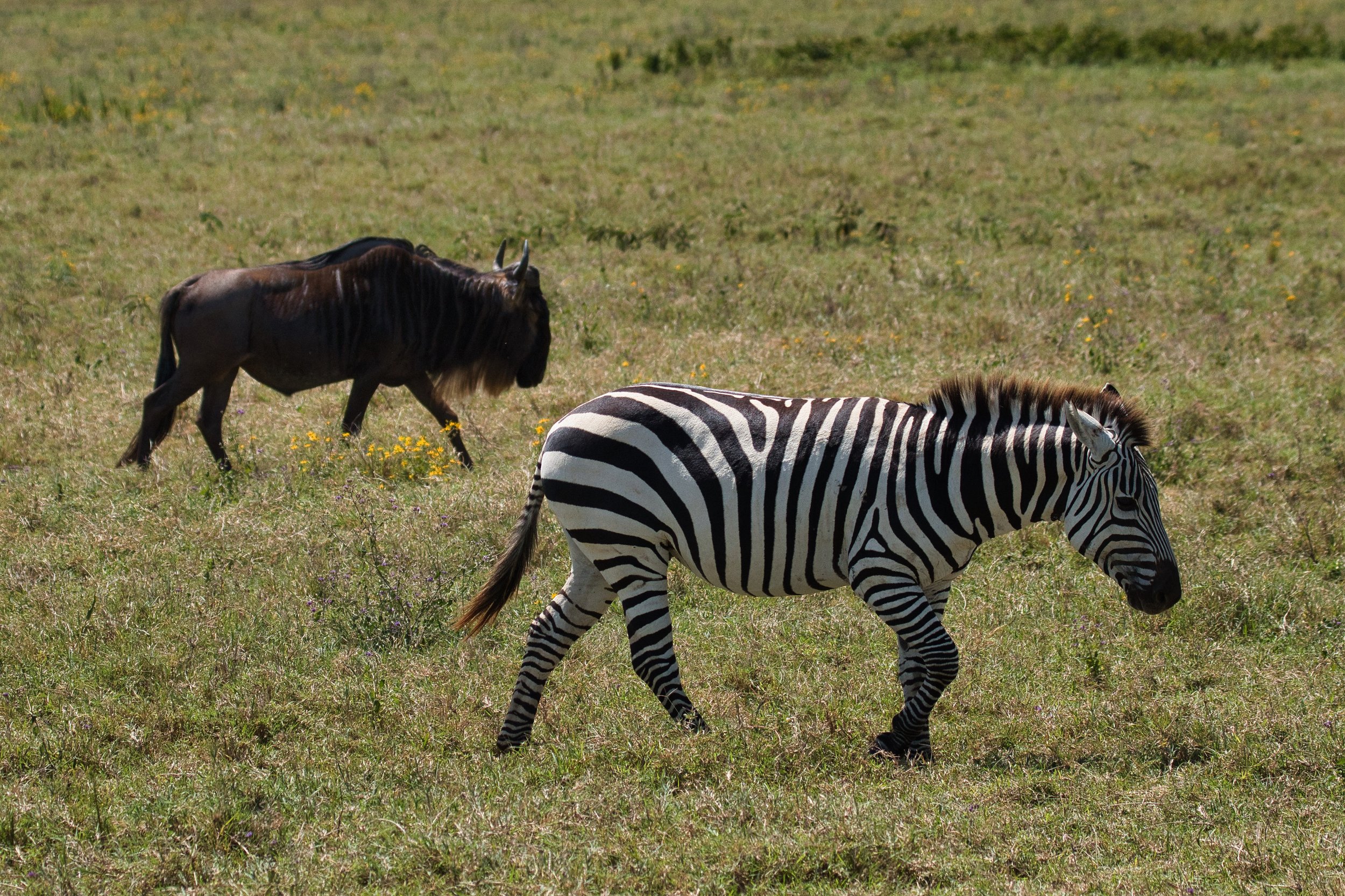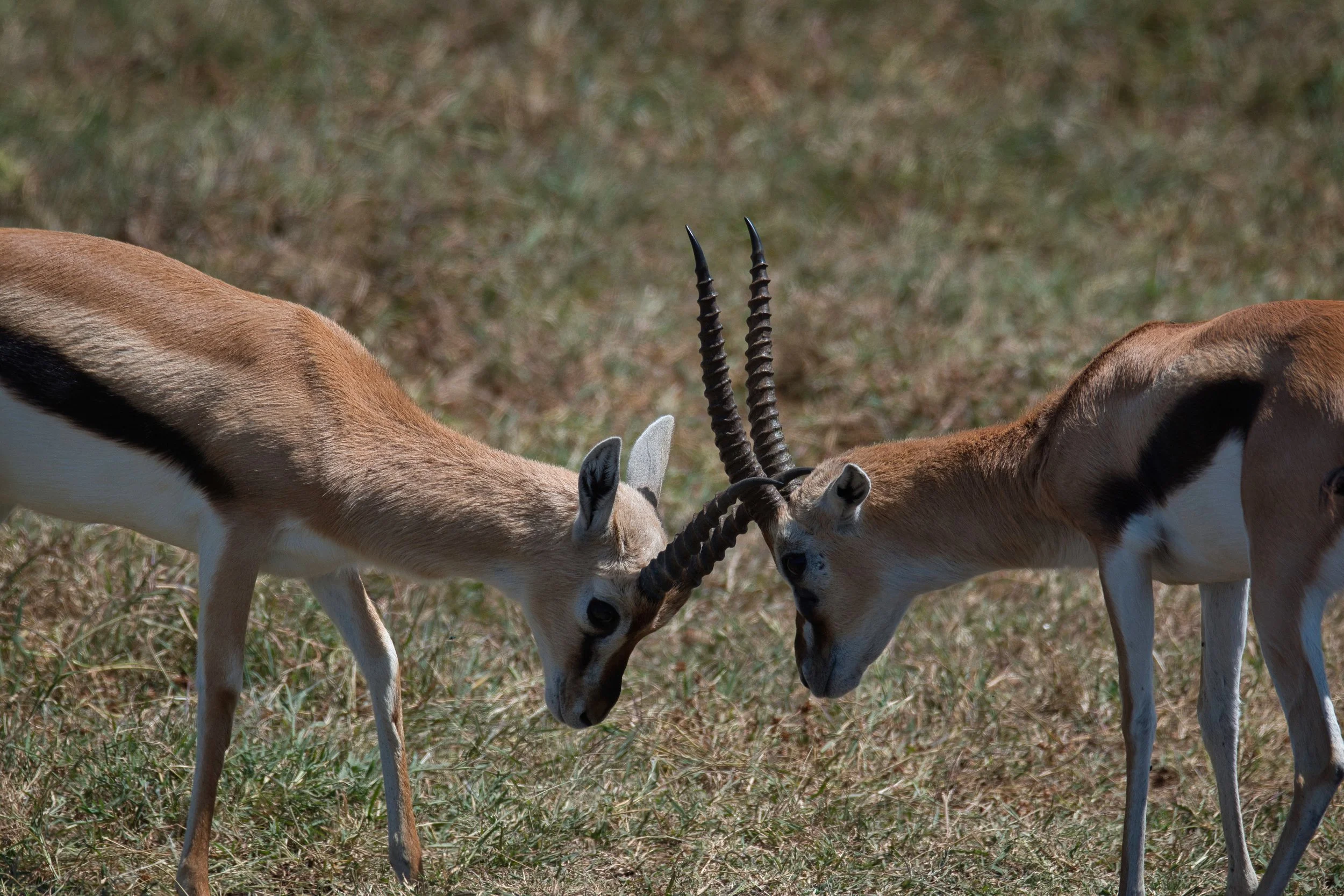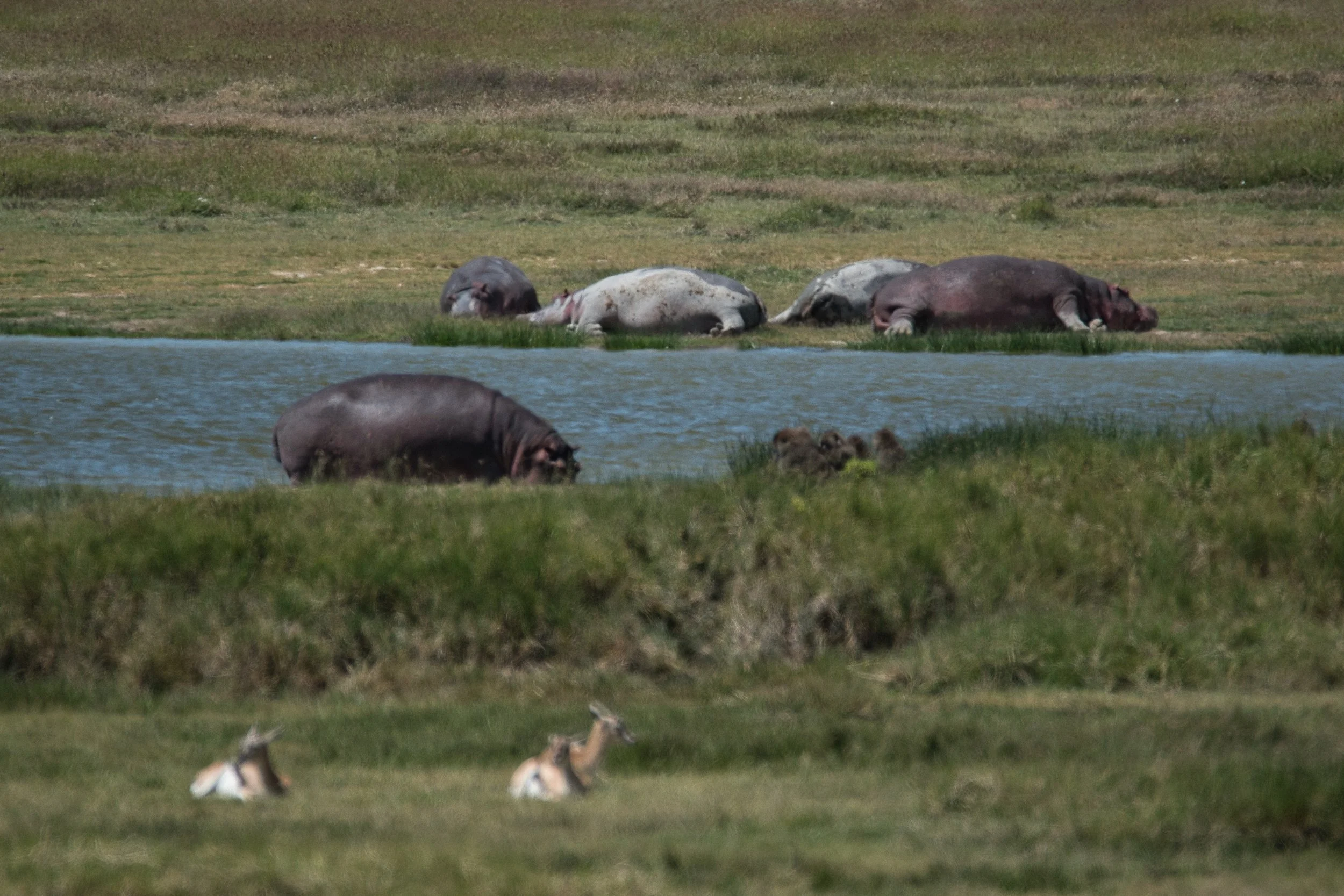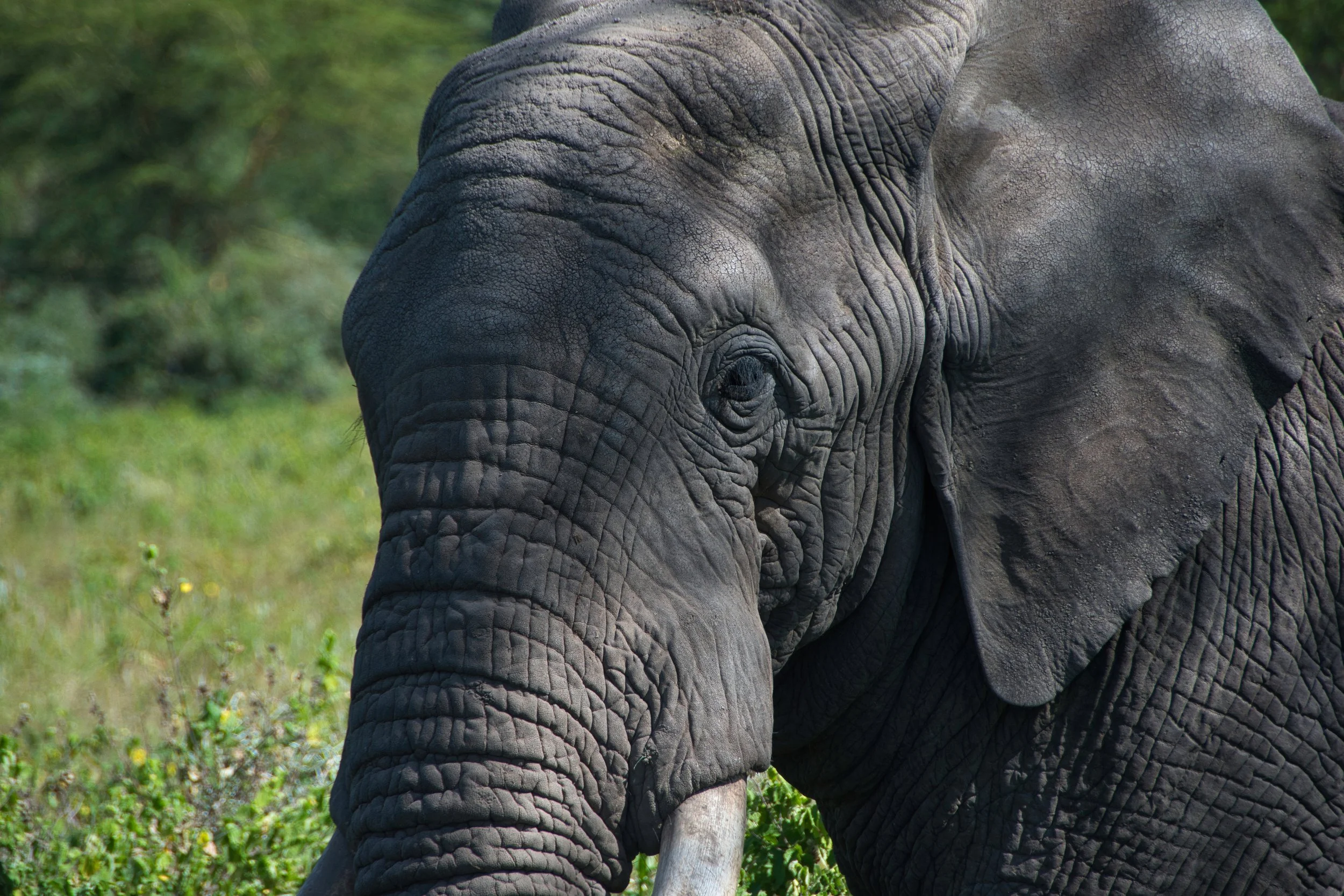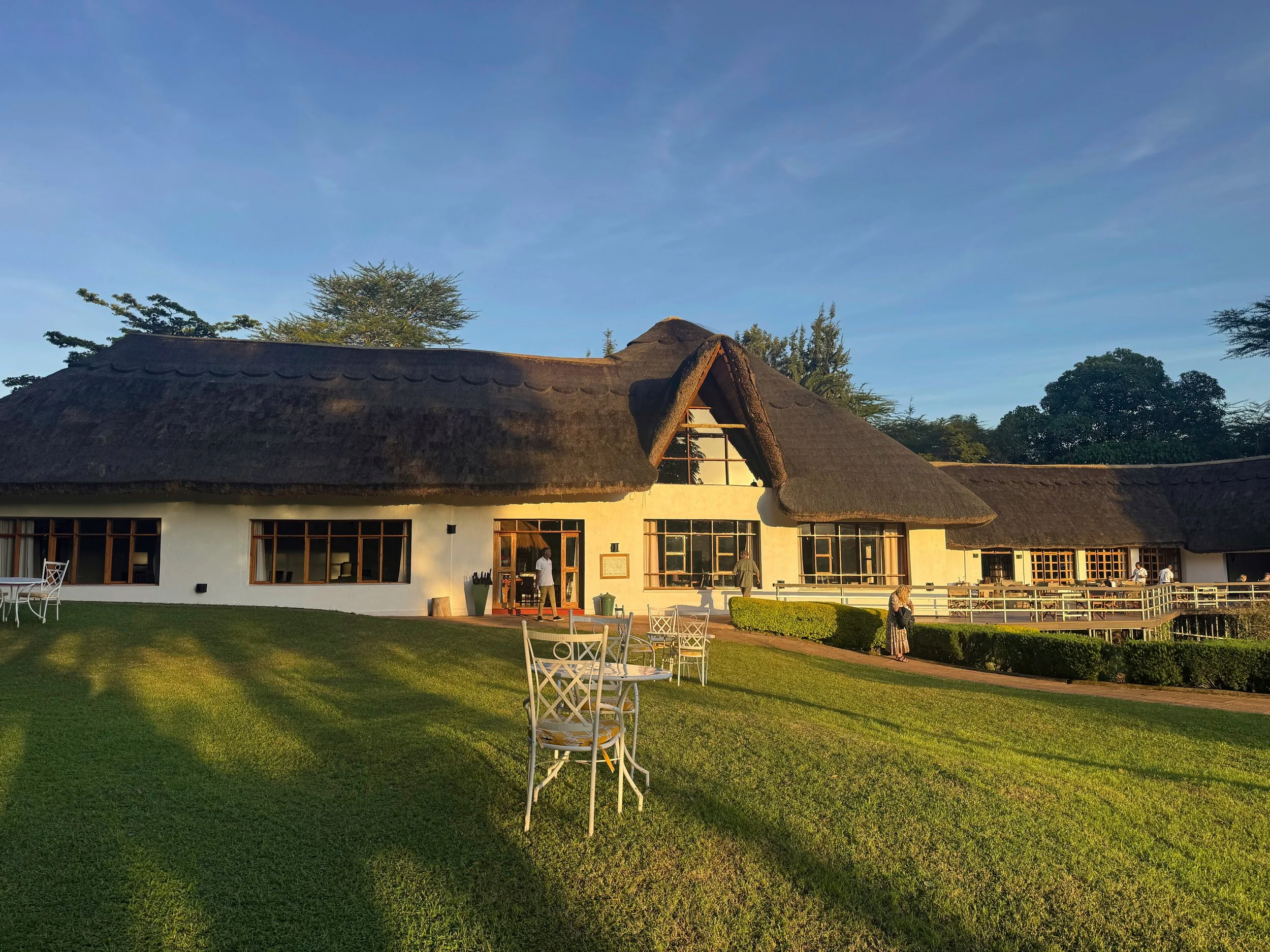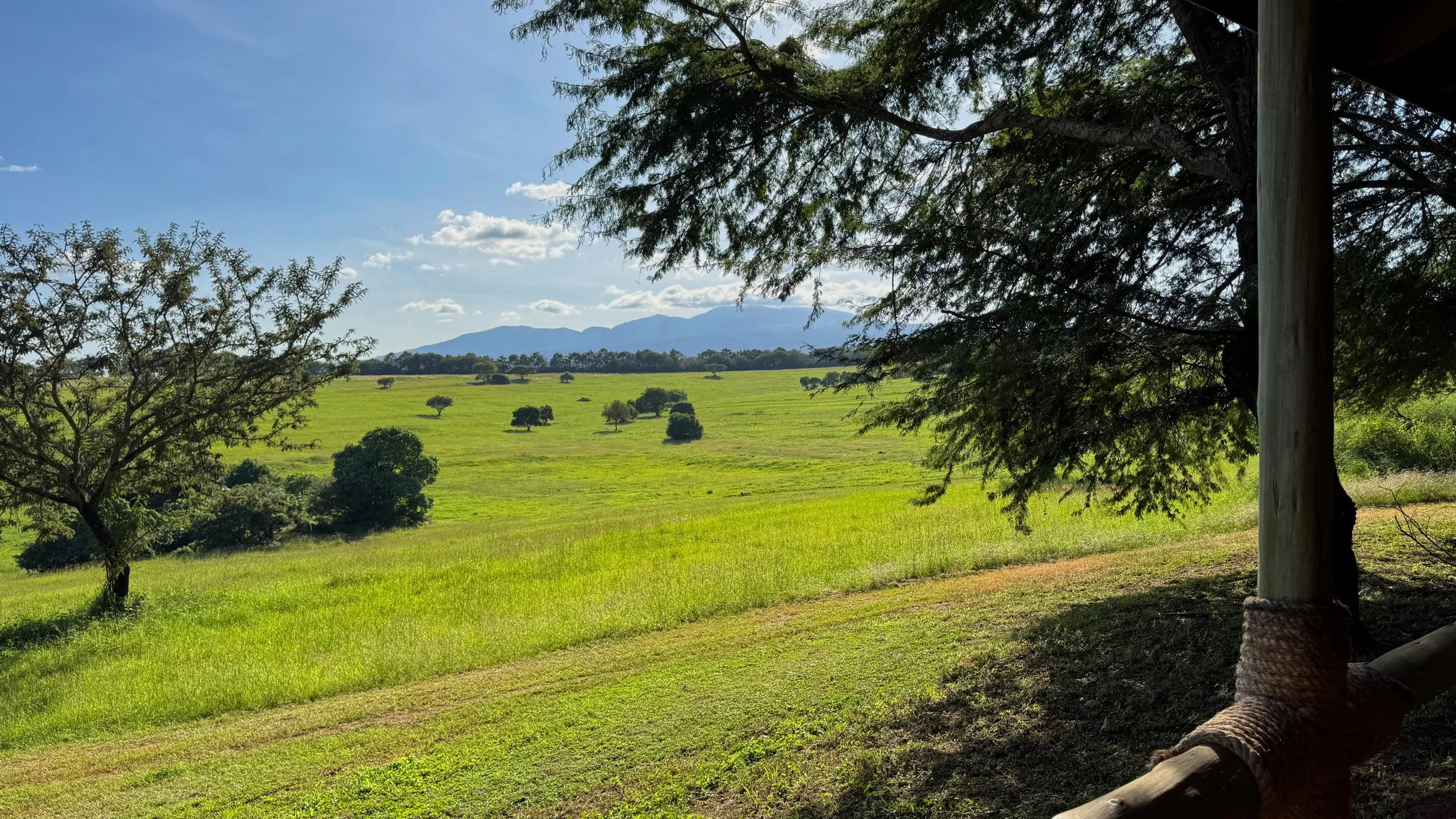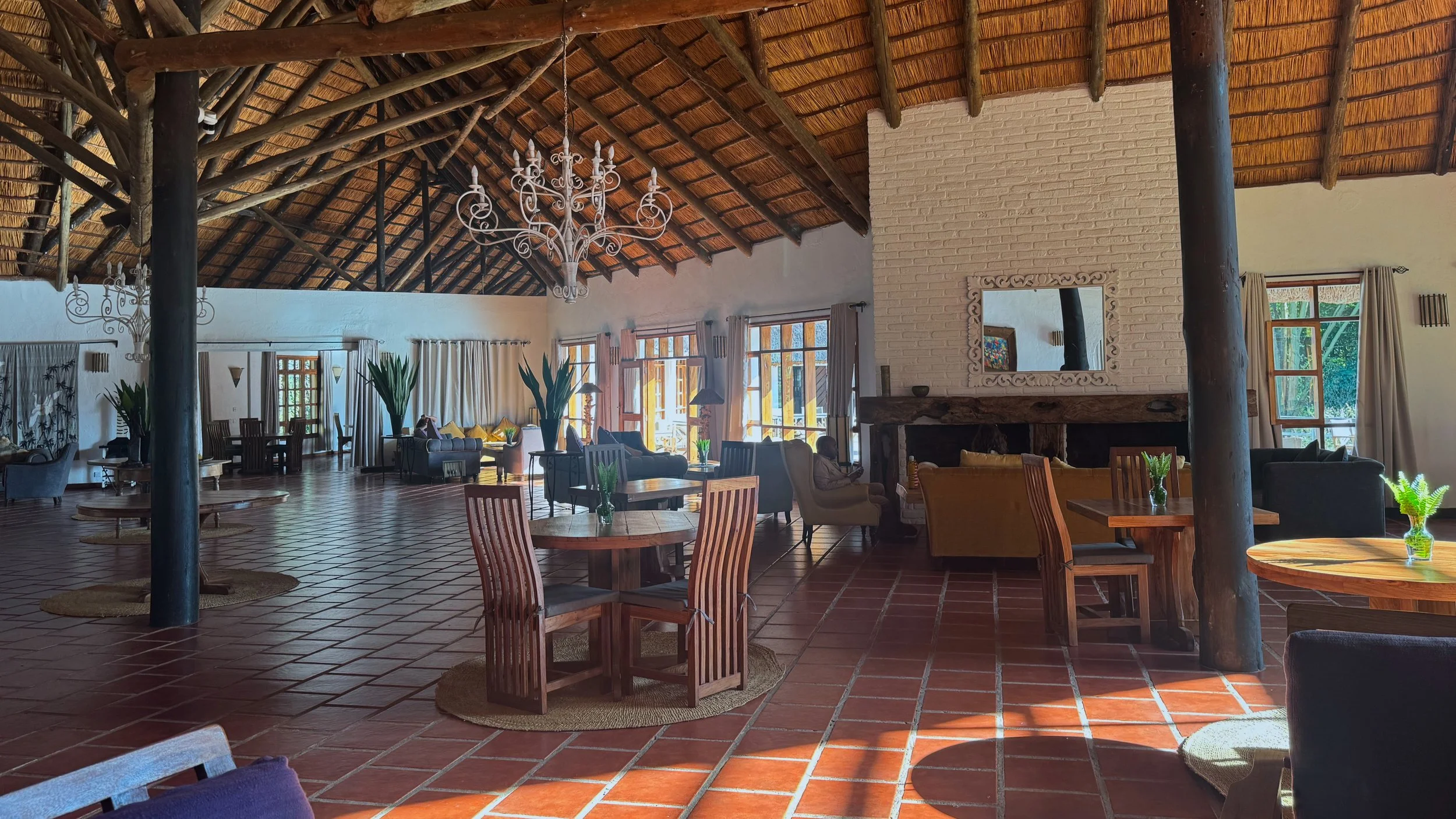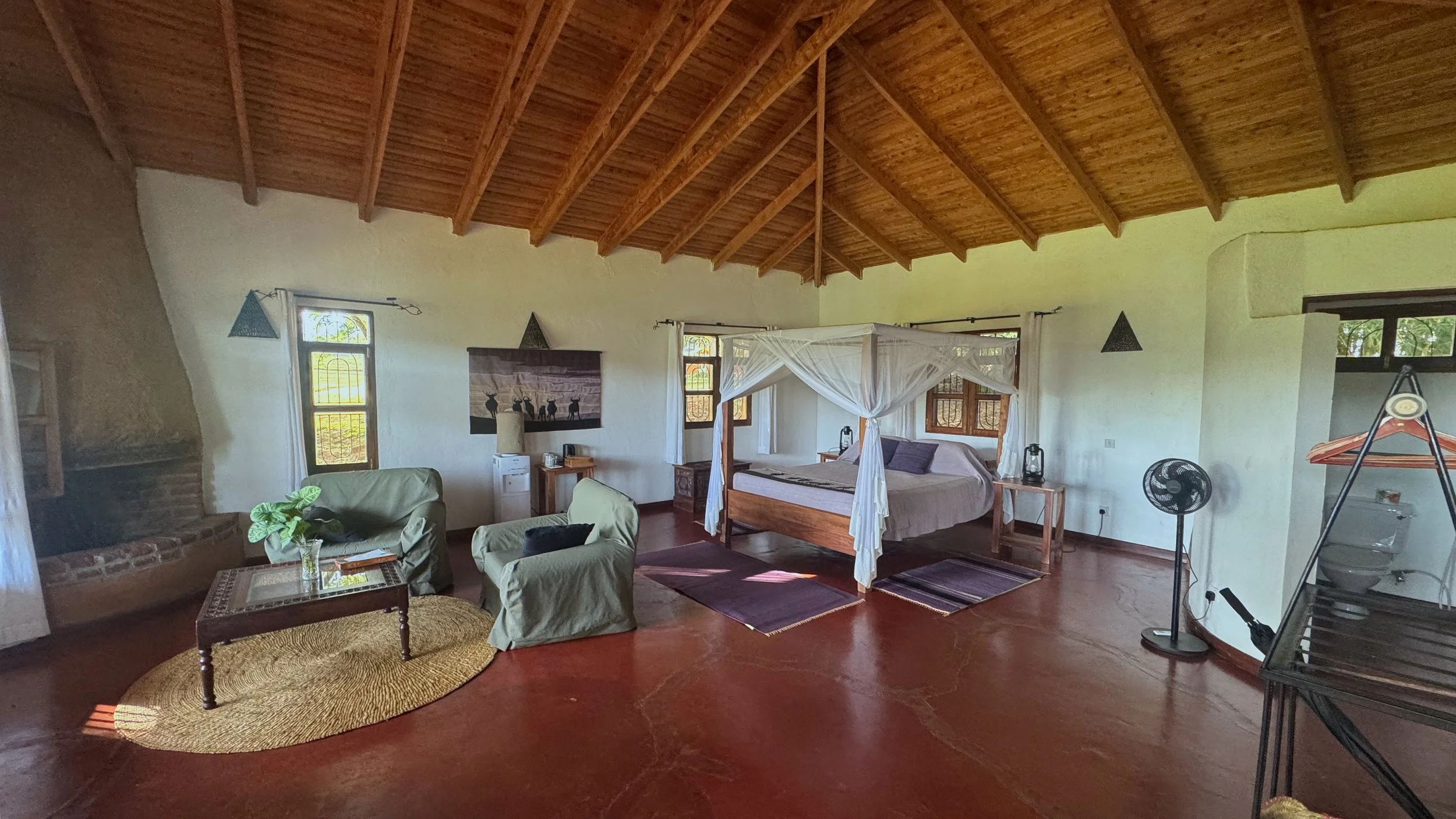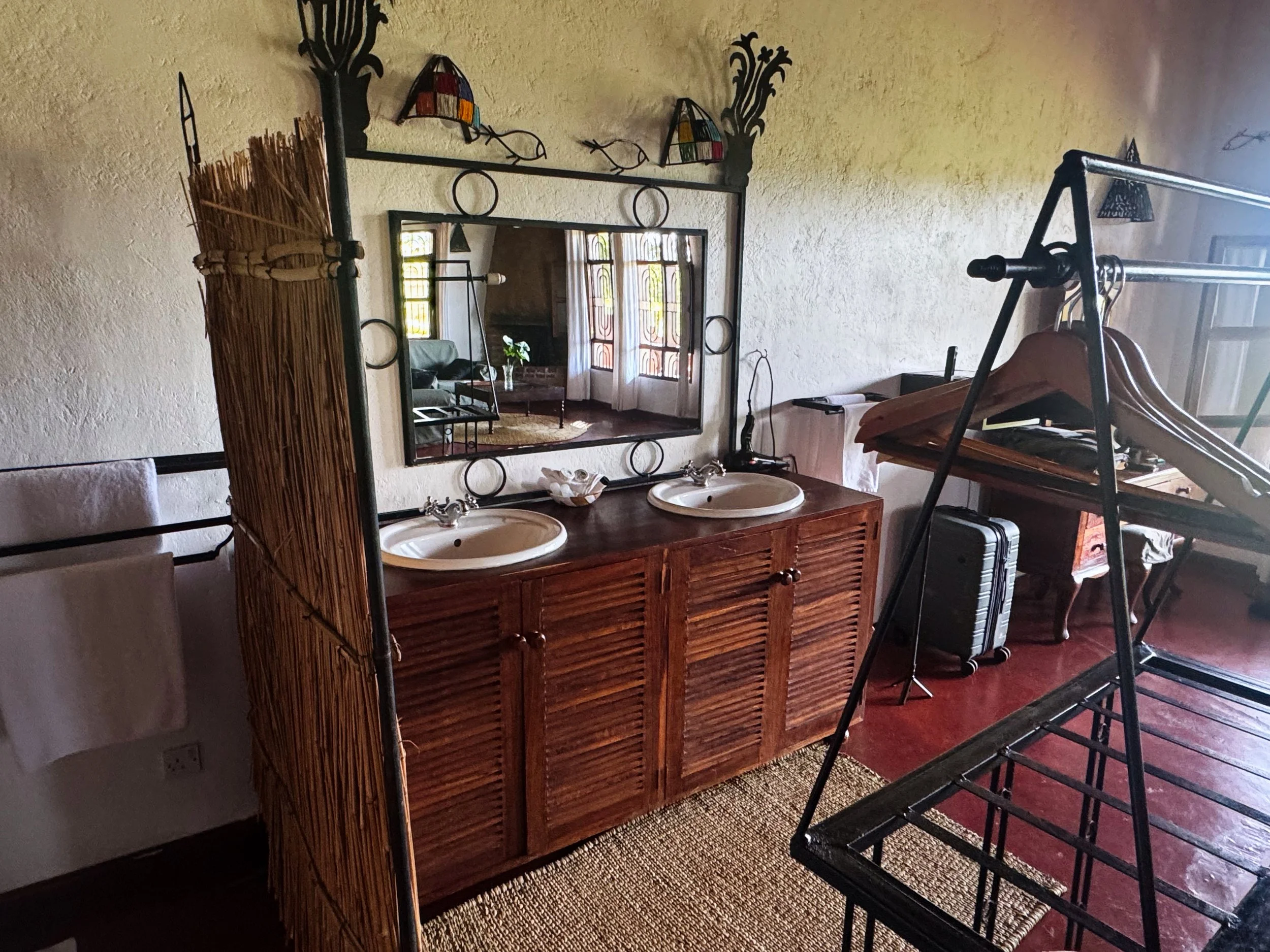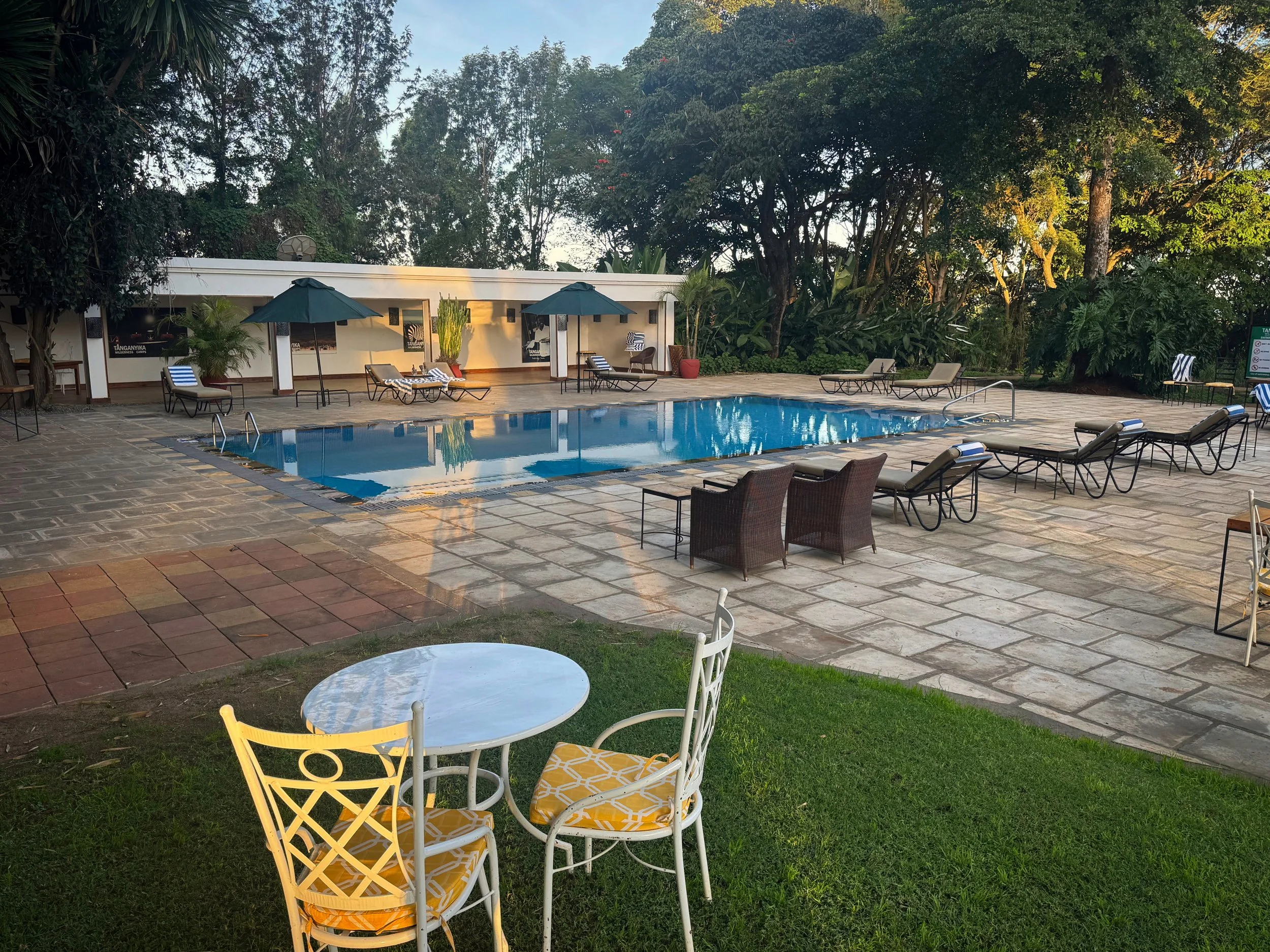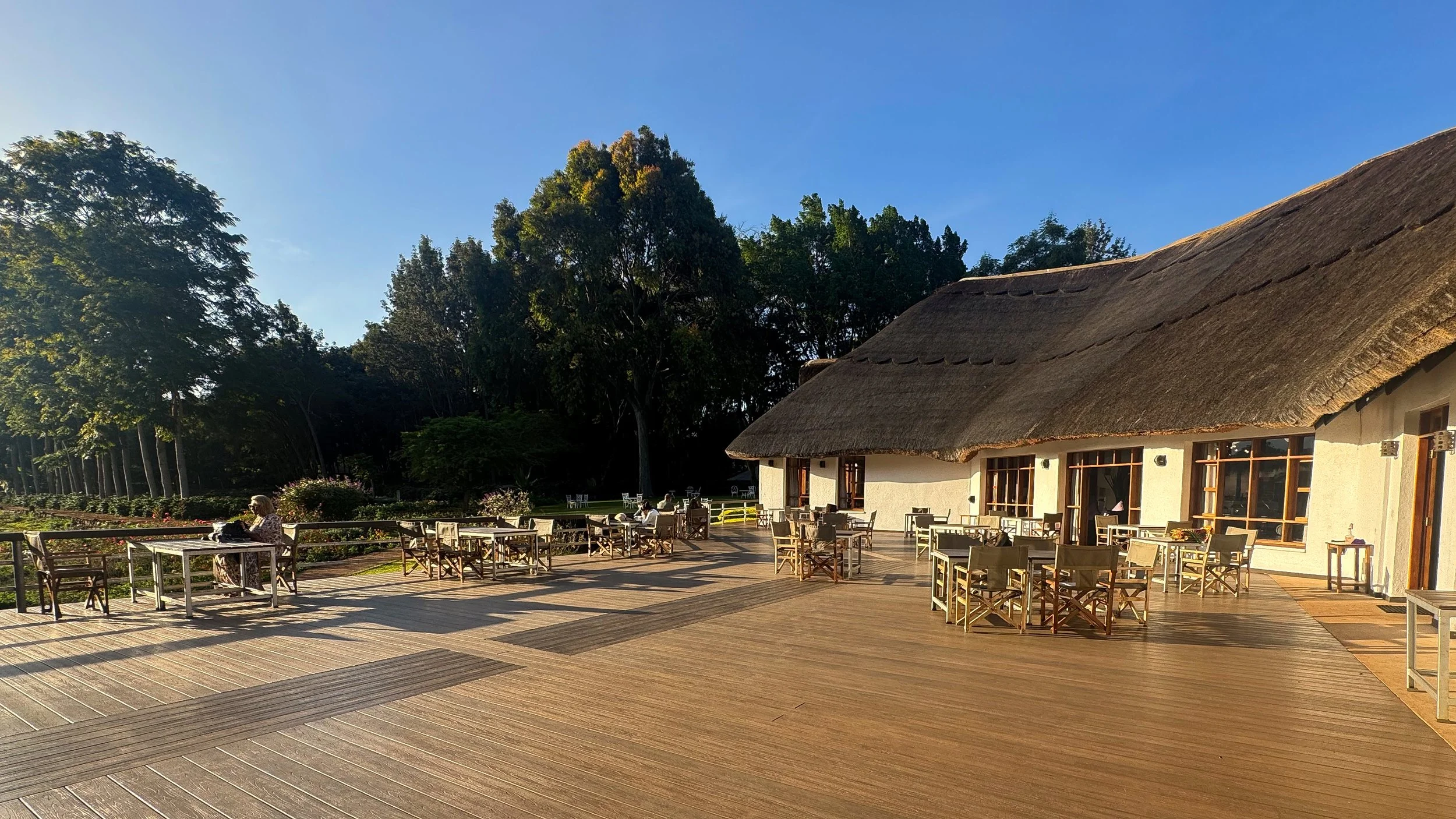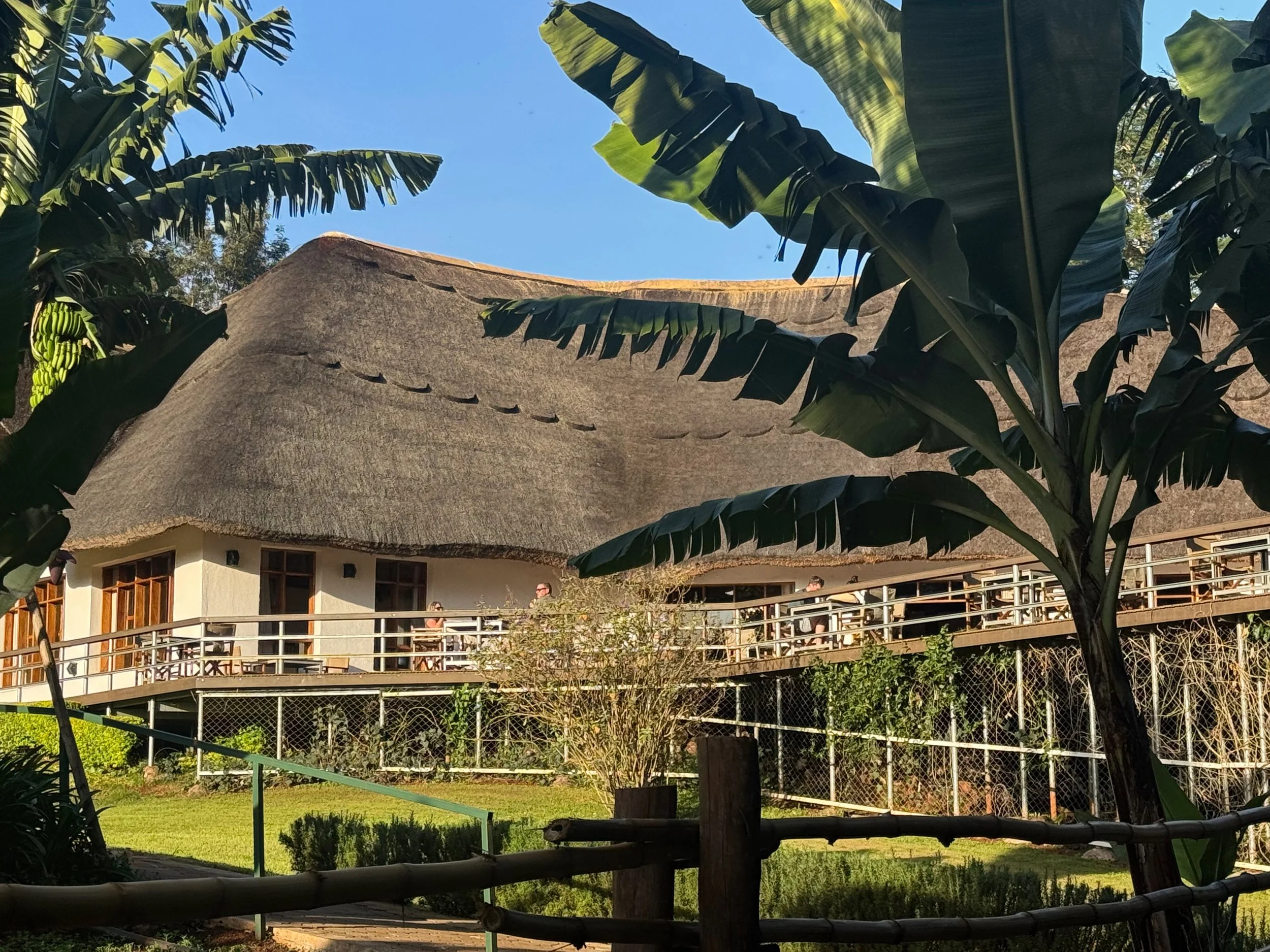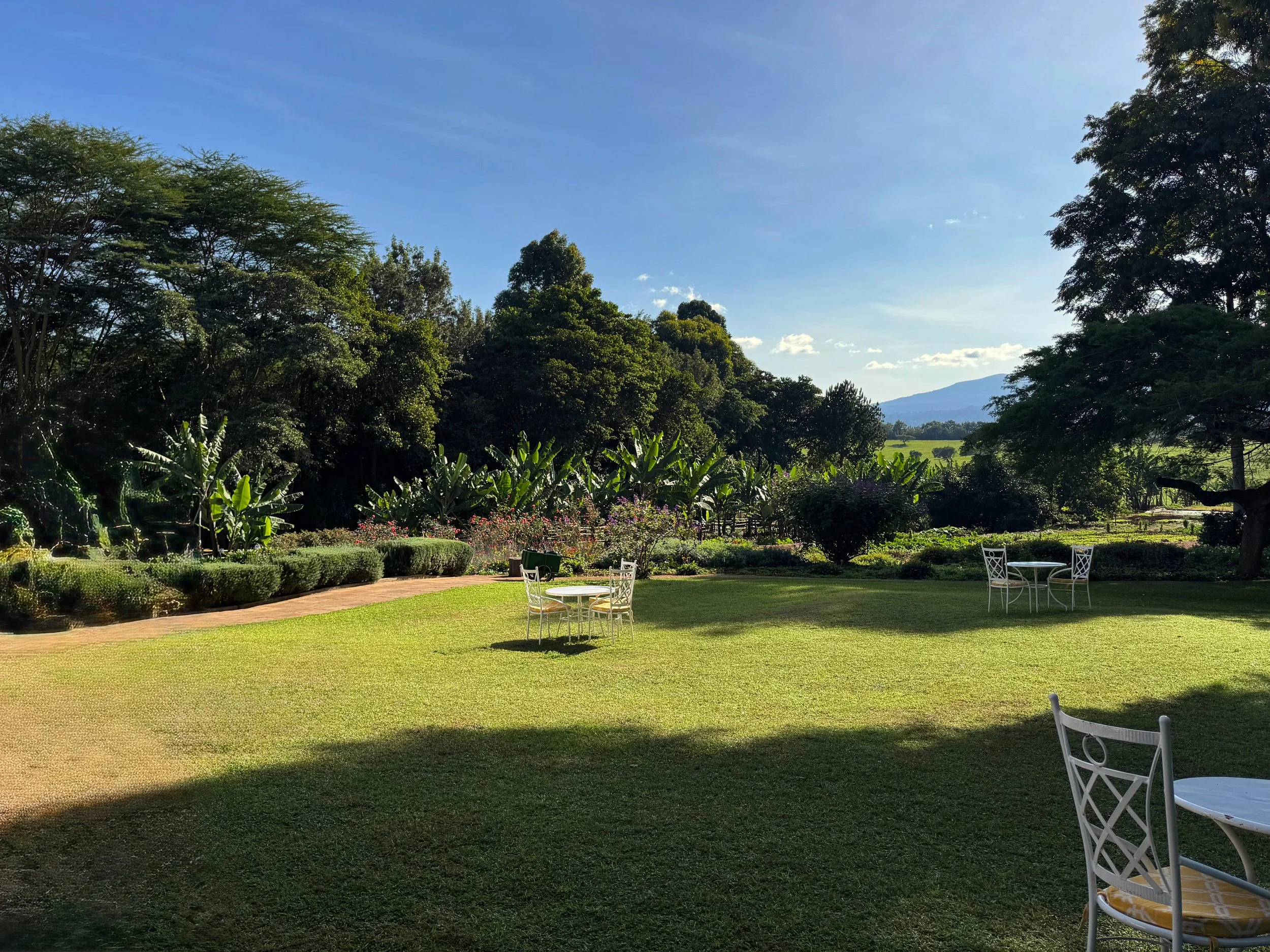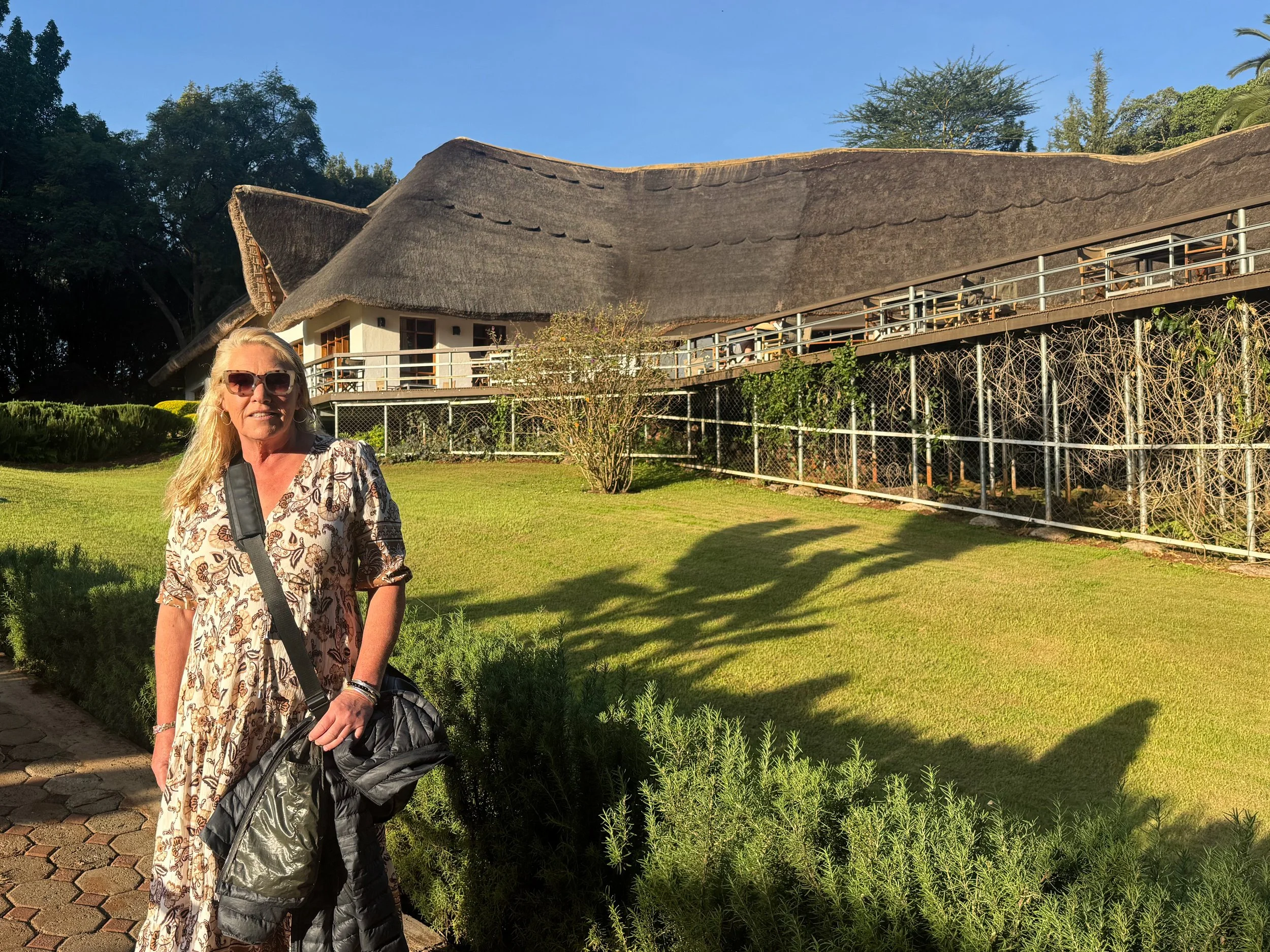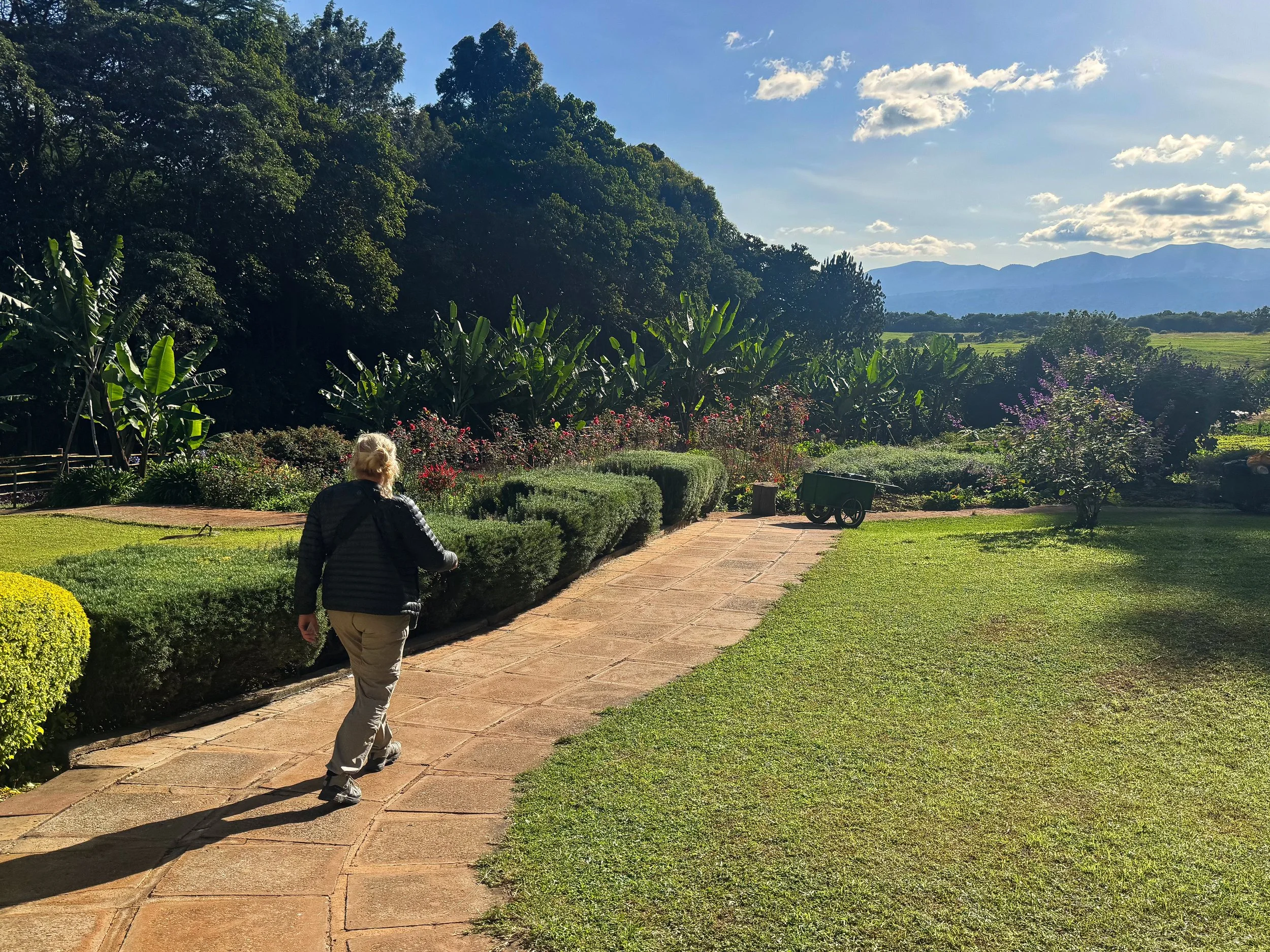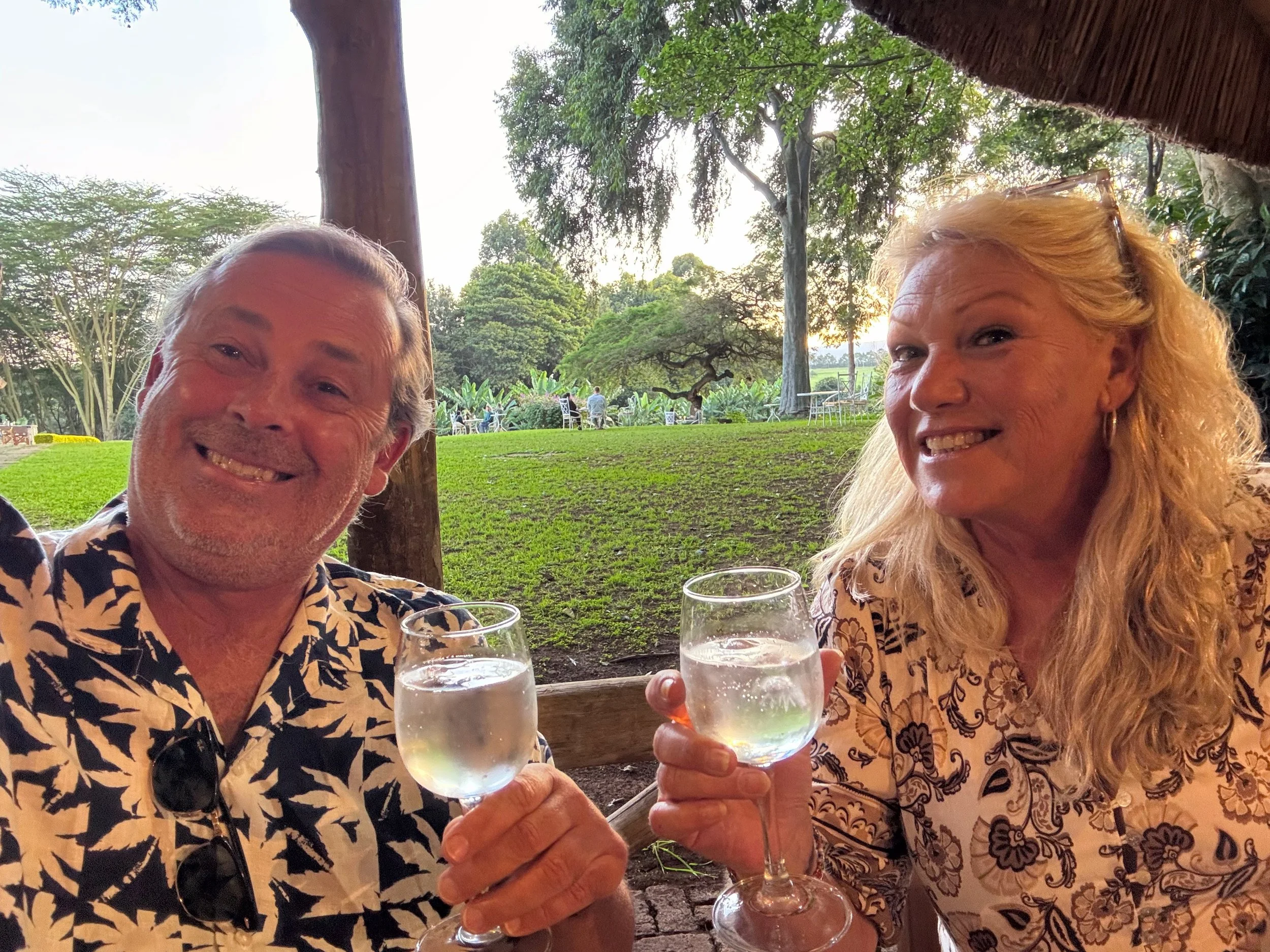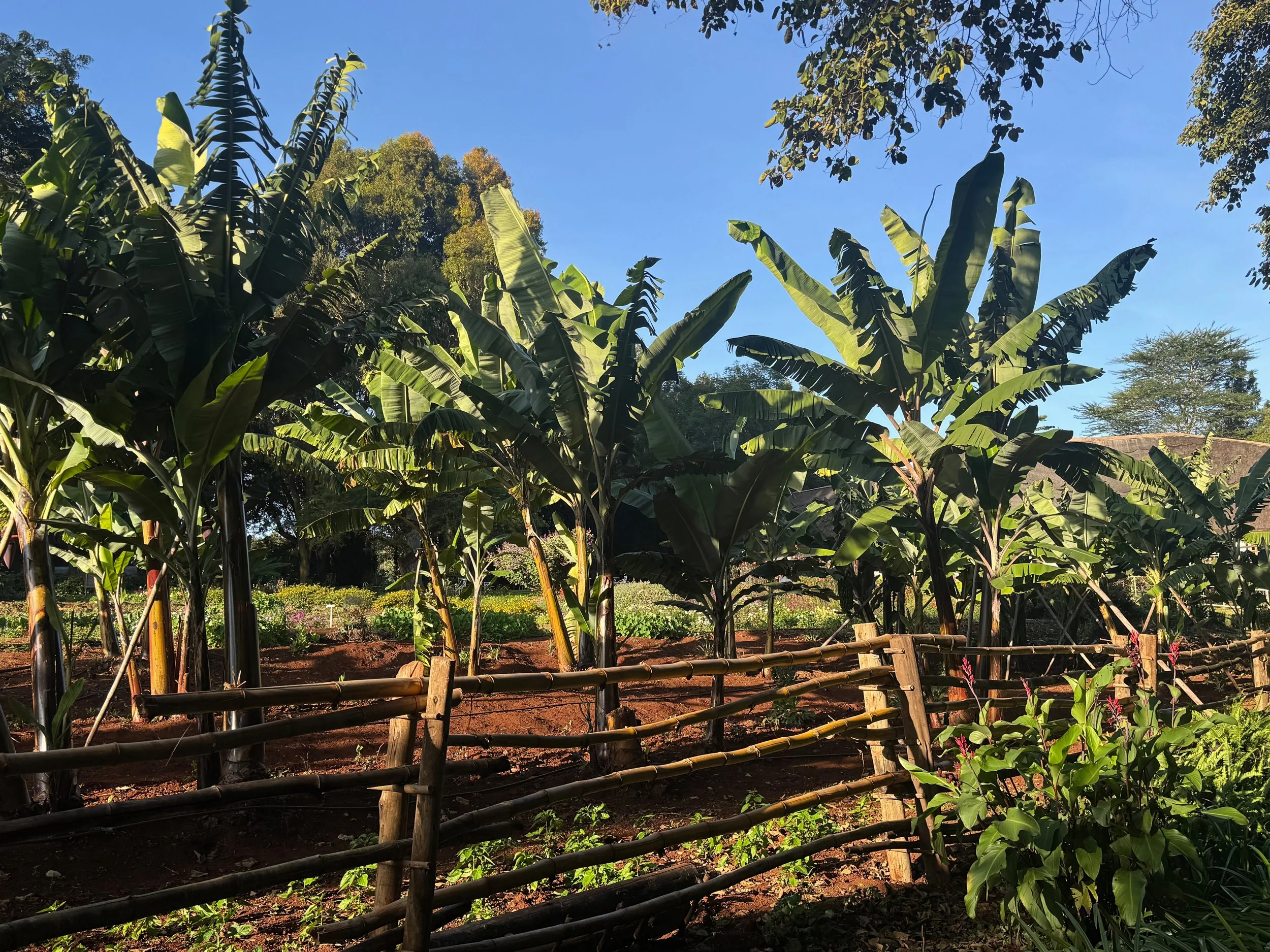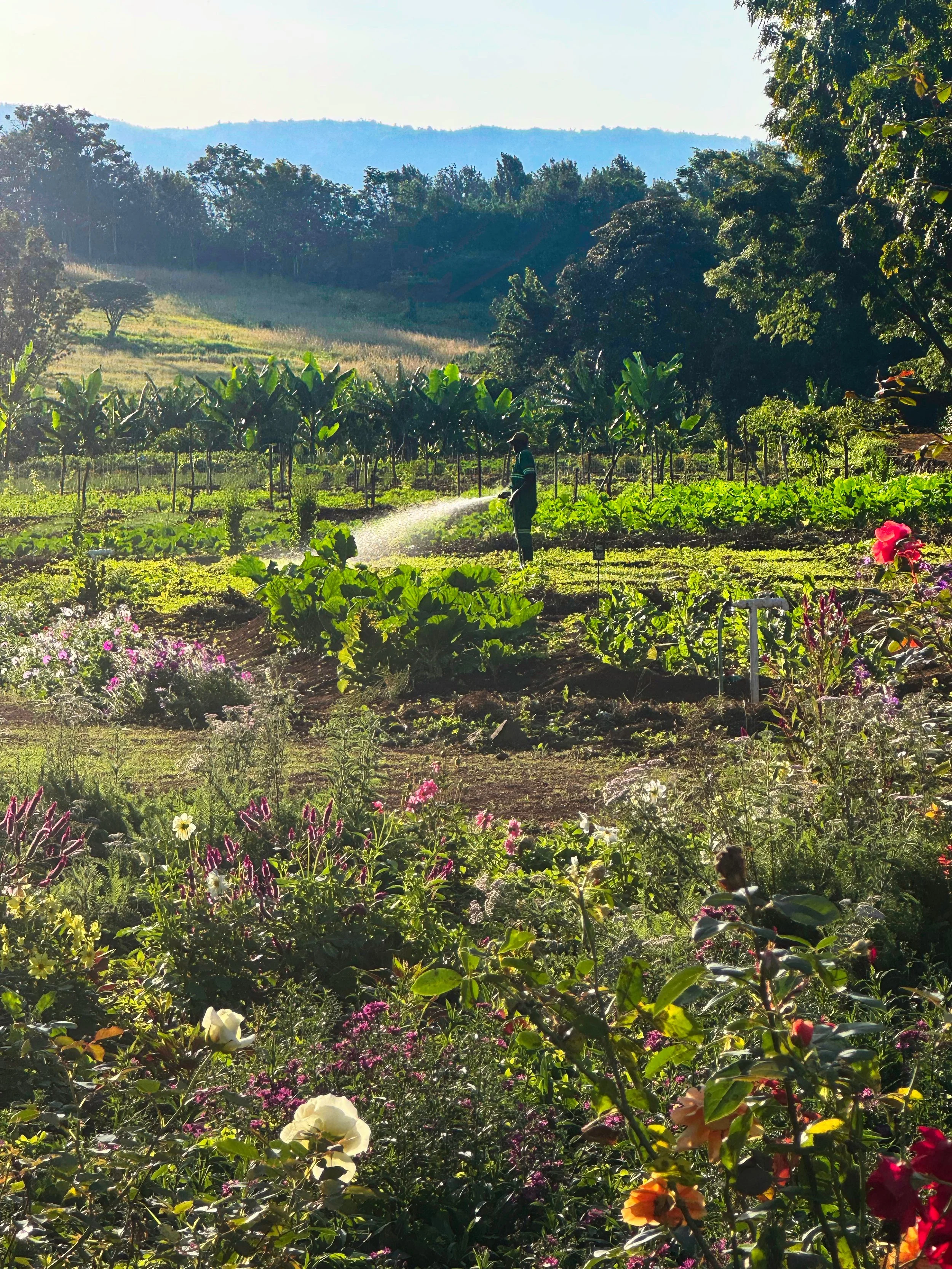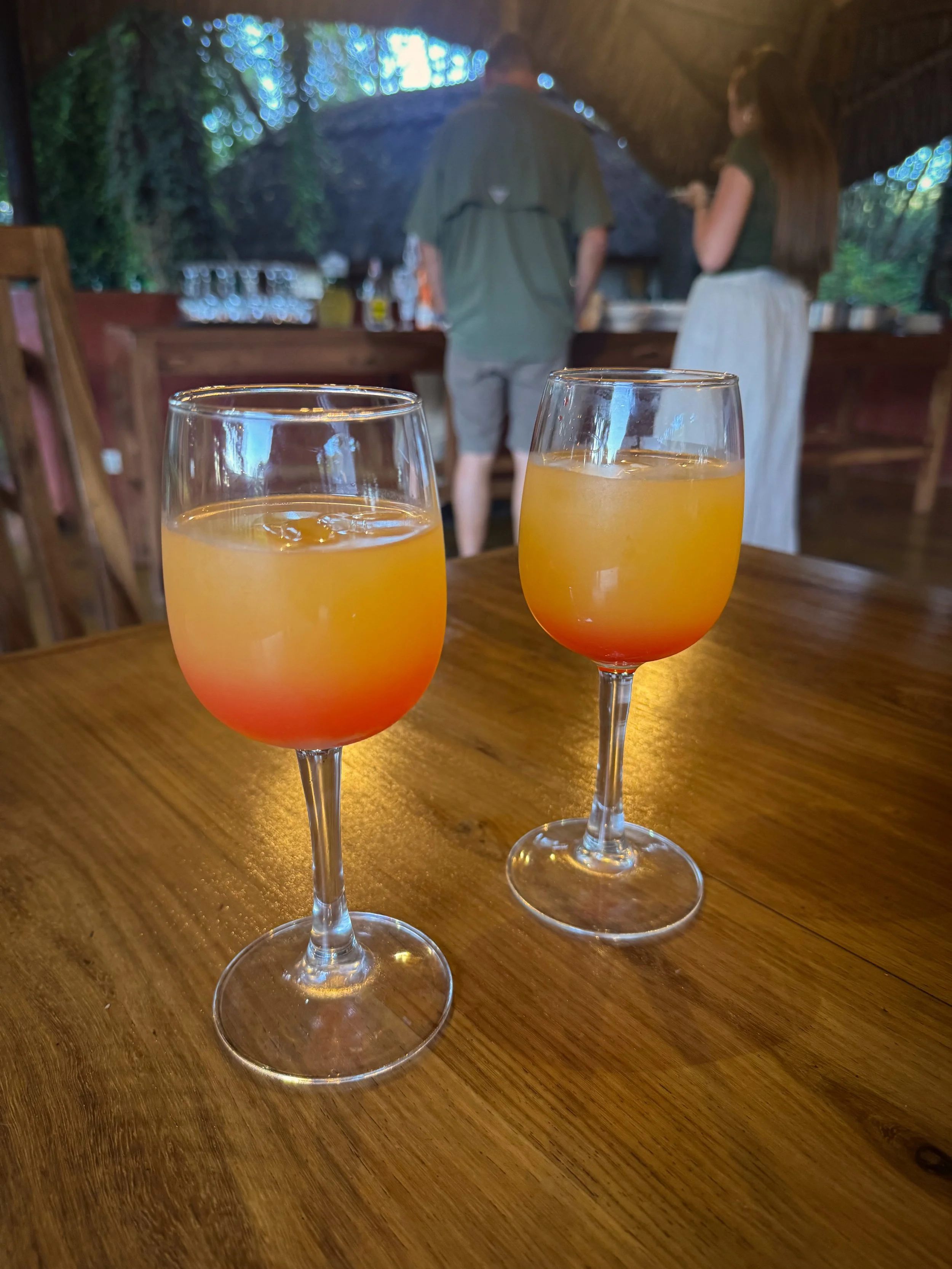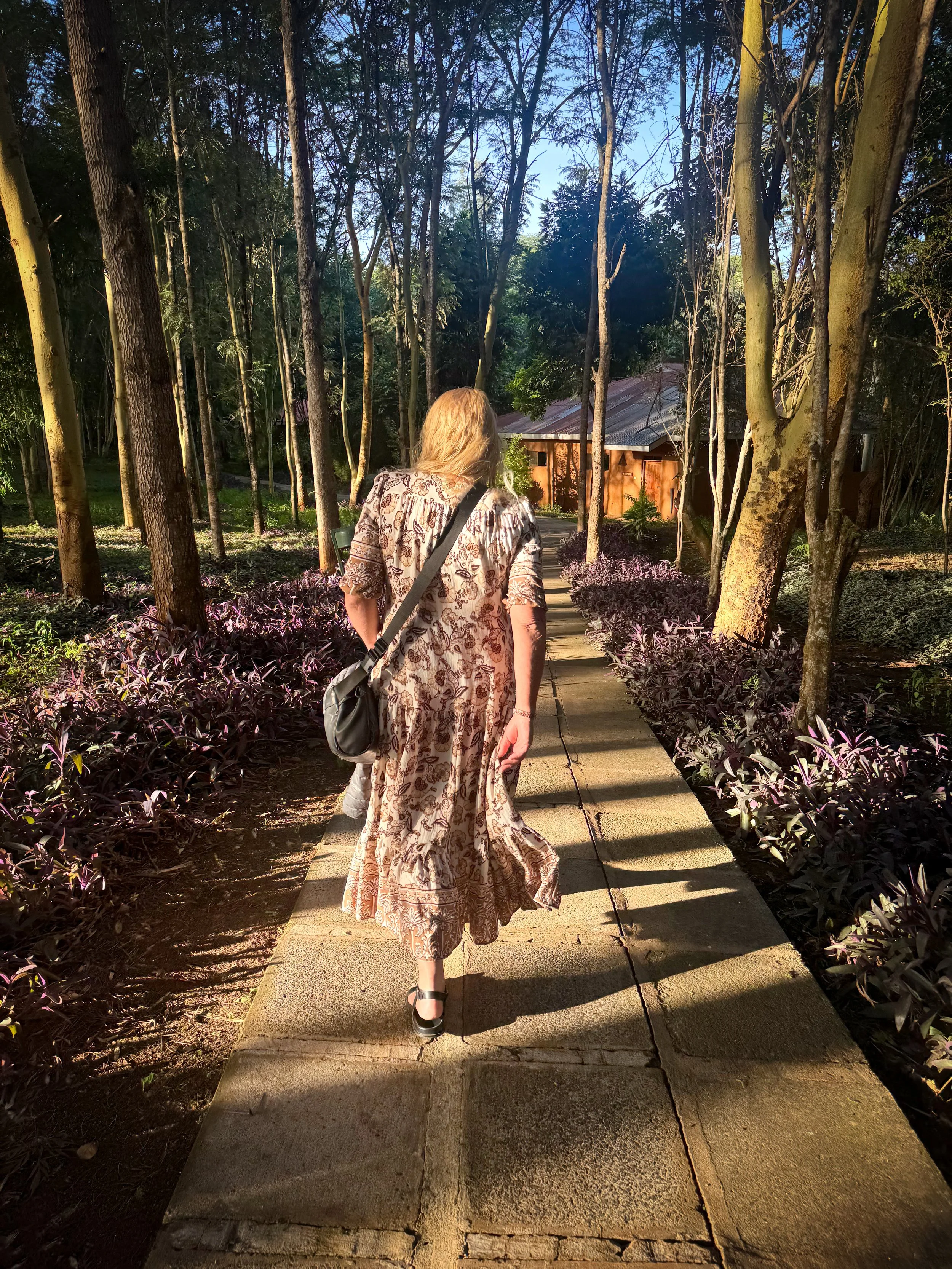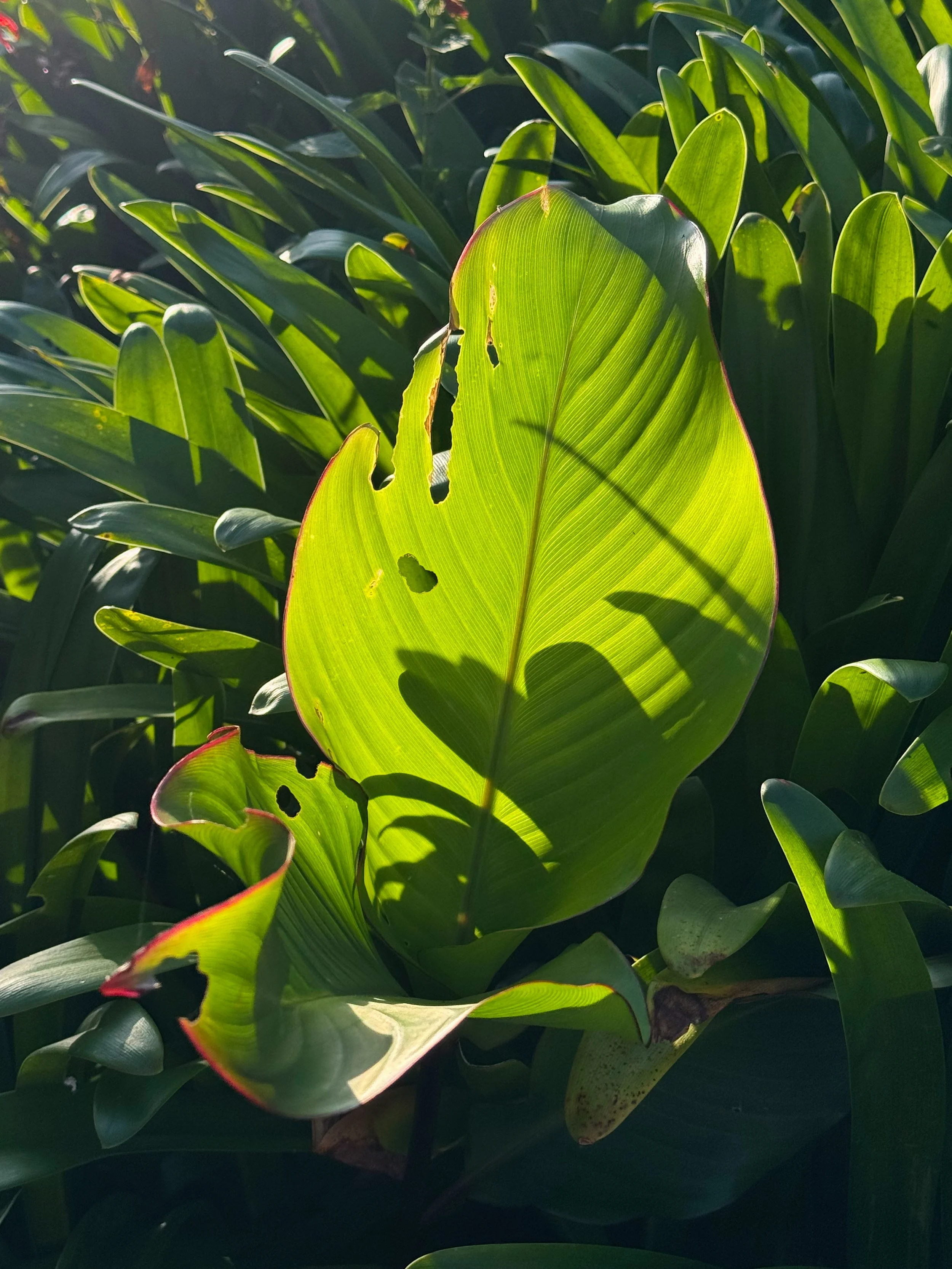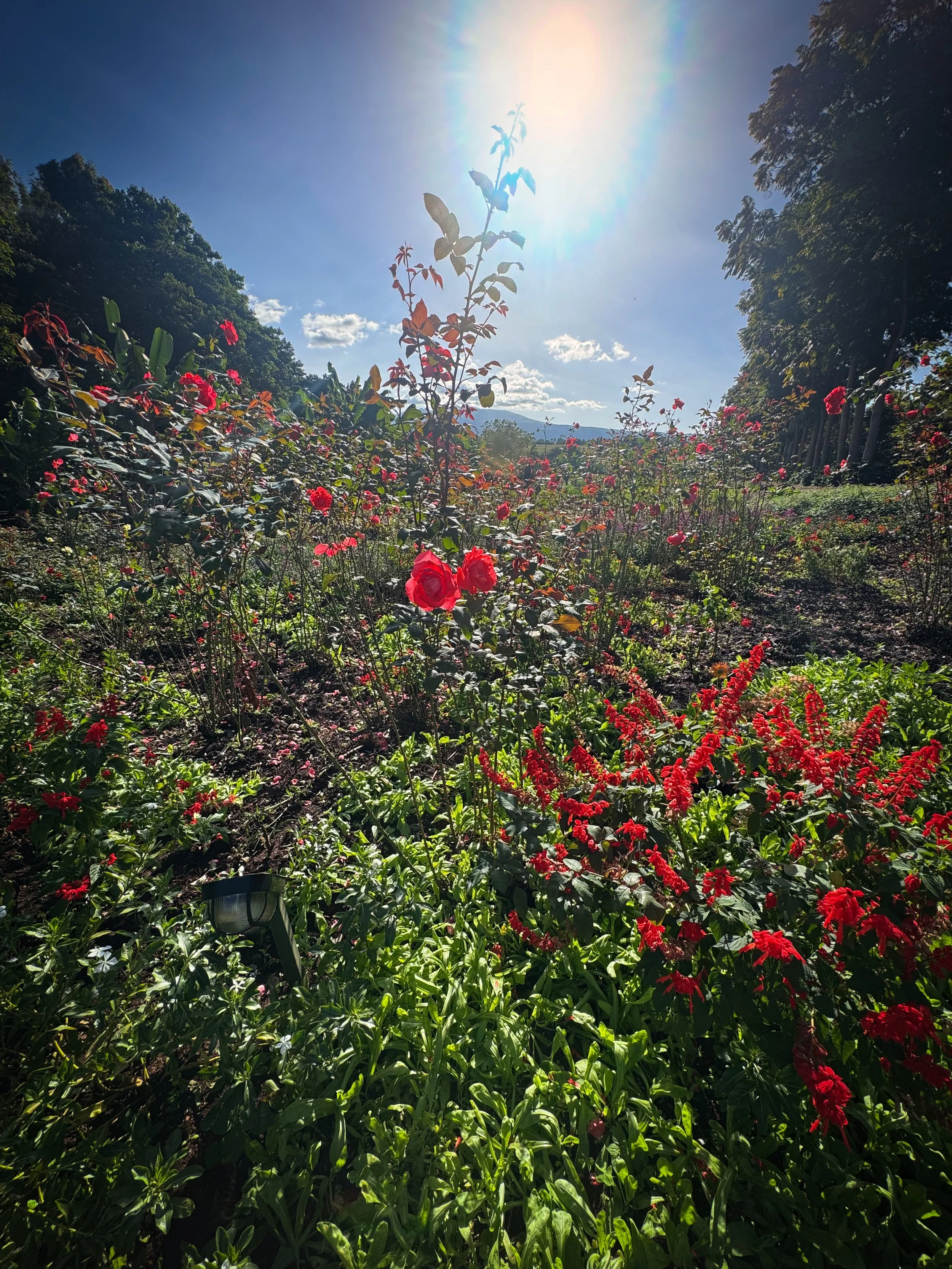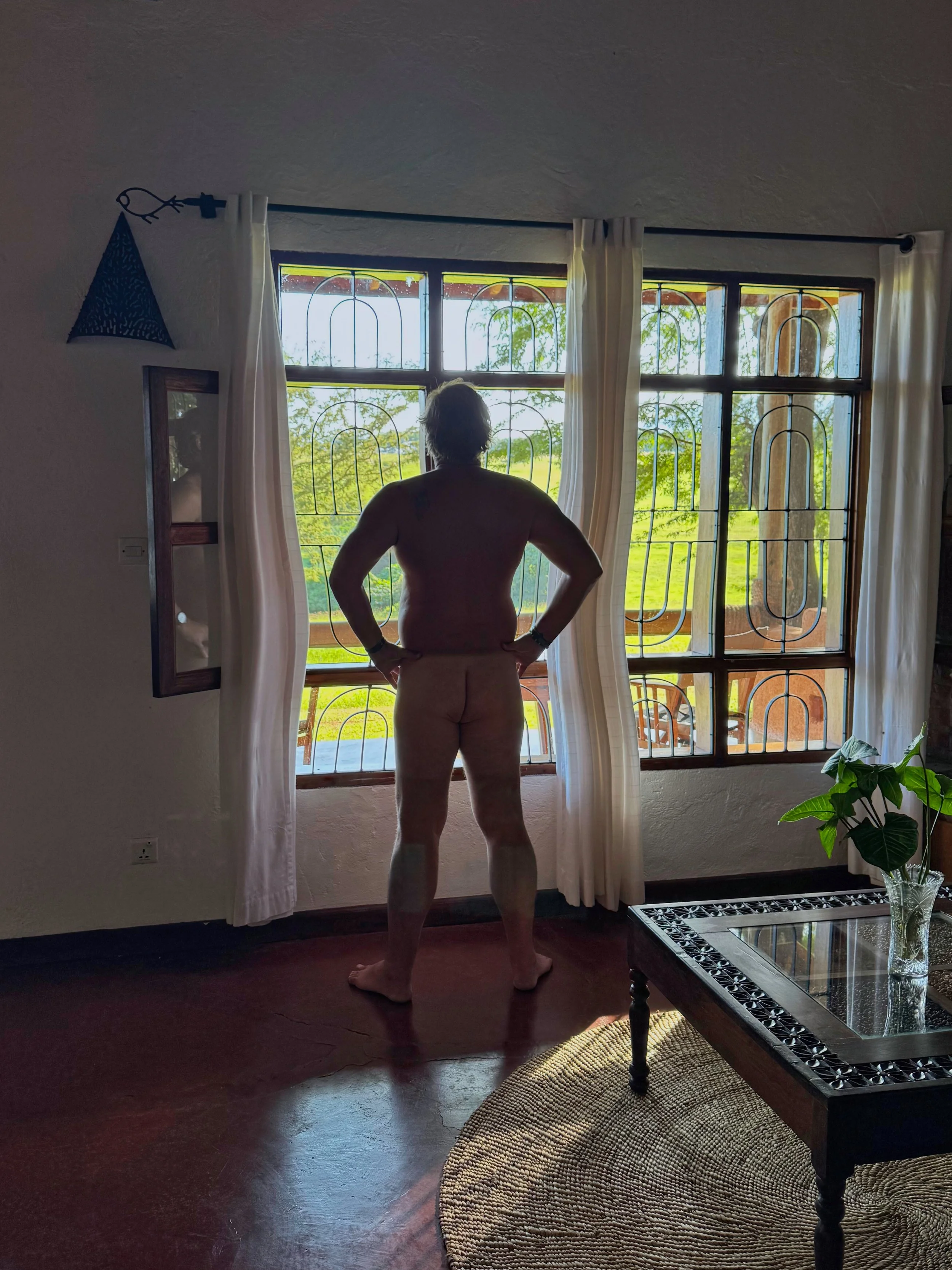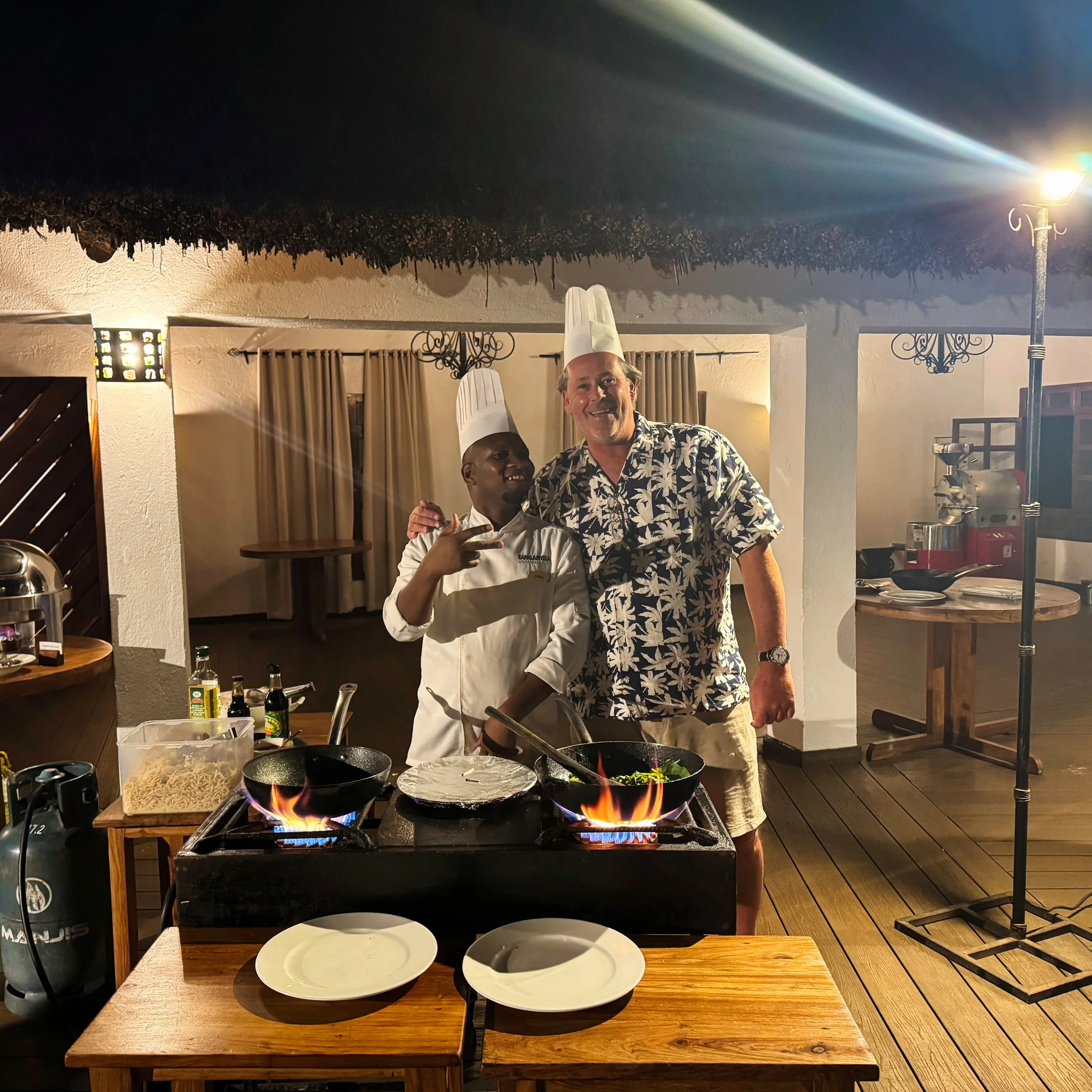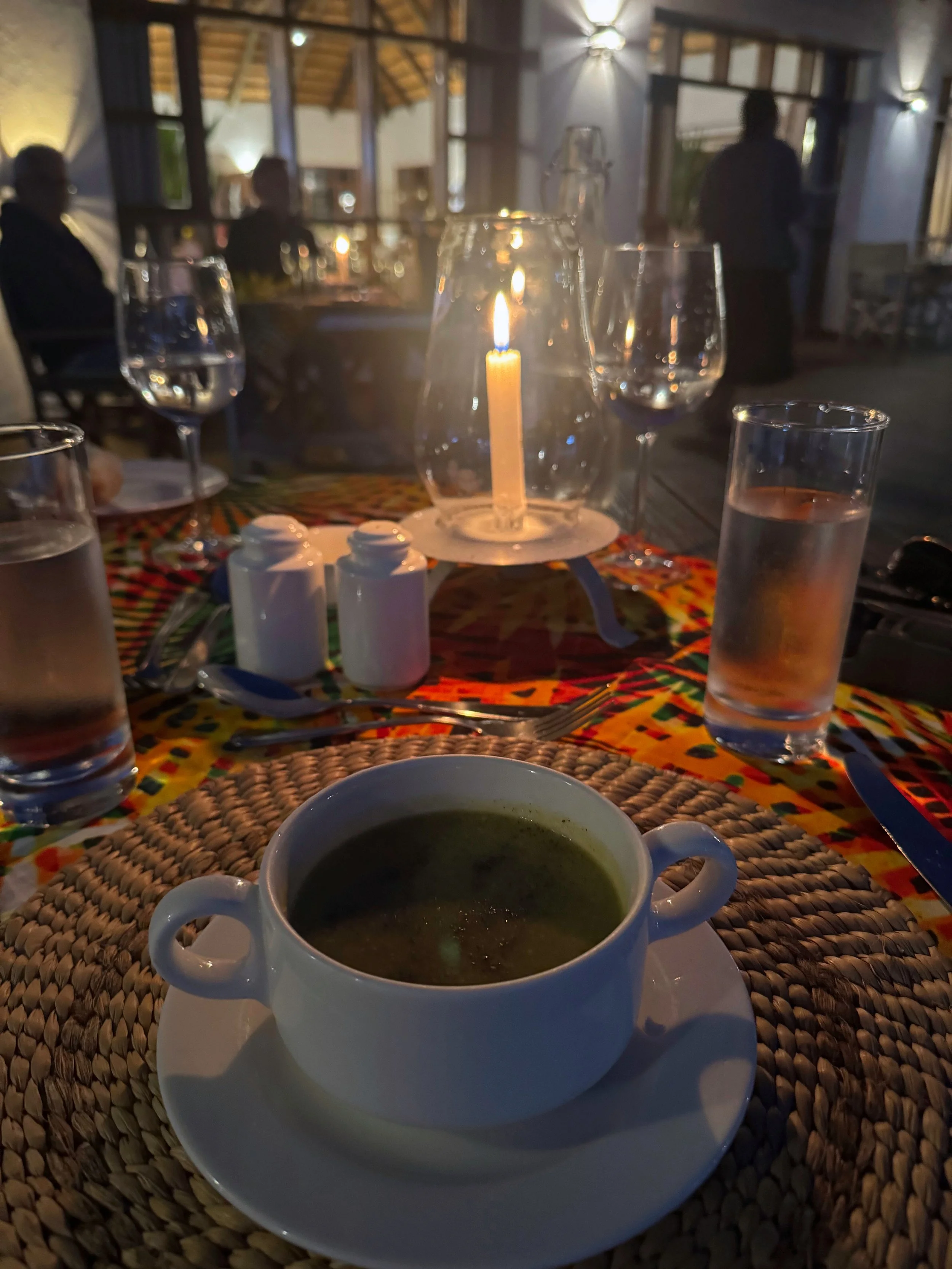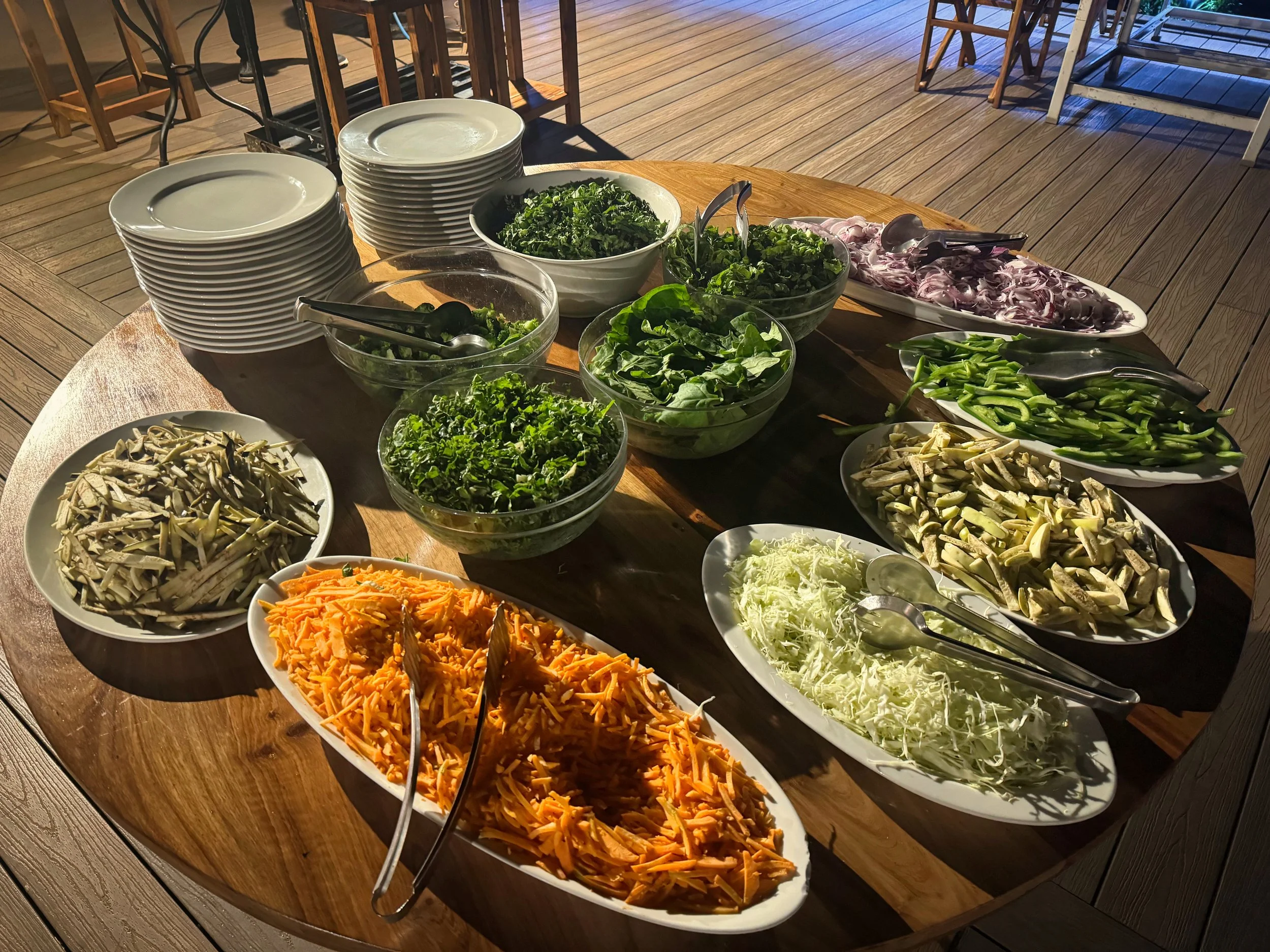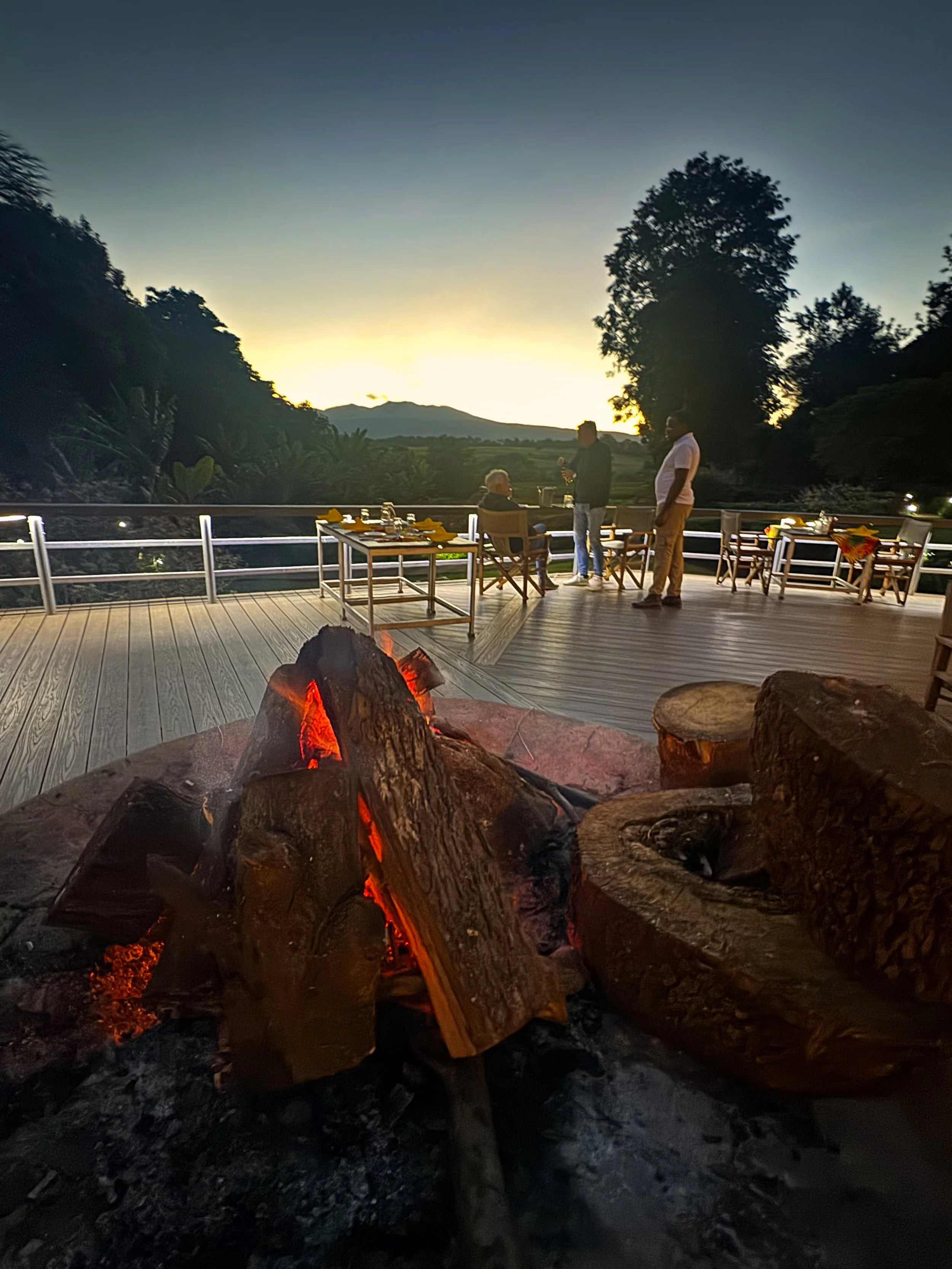Sunset XVII - Ngorongoro Crater
Today was sadly our last day in the Serengeti and while disappointing, we knew what lay ahead beyond the National Park threshold, the Ngorongoro Crater. The drive out was via the same road we entered through but showed no familiarity such are the many changing aspects of the plains dependant on light, cloud and direction. We saw a flotilla of balloons adrift on the gentle breeze bringing with them memories of our own flight two days before. Wildlife began popping up as they do this time of morning, among them our last lions for the Serengeti hidden deep within the grasses and refusing to raise their heads for an appropriate photo op.
The Serengeti Plains,Tanzania, Africa
The Serengeti was a truly immersive travel experience that in reality is nothing more than a chunk of land. However, dropping ones guard it delivers wildlife and natural beauty with a romantic magnetism seldom offered by other places. It’s like stepping into a nature book with the soundtrack the rustle of grass in the wind, the clap of distant thunder across the plains, and the low rumbling calls of lions you can actually feel in your chest.
The Serengeti isn’t just big, its endless. From the back of the cruiser a sea of golden savannah stretched across the horizon in every direction dotted only by acacia trees and the occasional kopje rock formation standing sentinel since the dawn of time. Be it a David Attenborough documentary or a Disney animated movie, most will identify immediately with this place, but only after spending days here does one come to understand the enchantment of the Serengeti and why it’s often referred to as the heart of Africa. The herds of wildebeest and zebra create a hypnotic rhythm as they move in unison and night comes alive with the howls of hyenas, the calls of nightjars and the odd, spine-tingling roar of a lion. The air carries scent of wild sage, sun-warmed grass and the faint earthy musk of animals you can’t see. Sunrise and sunsets are unfair in their beauty. The sky ignites in pinks, oranges and golds silhouetting giraffes and elephants against the horizon, and the Milky Way spills across a sky so clear you feel insignificant - but in a positive way.
There’s a strange combination of calm and raw intensity when visiting the Serengeti. You’re hyper-aware but so deeply relaxed, as if time slowed down. The Serengeti has a magical way of making one realise just how ancient and interconnected life really is.
On reaching the Ngorongoro Conservation Area entry gate Albert attended to the necessary paperwork while we enjoyed one last view from high above the plains while saying our silent goodbyes with sombre hearts. Our next checkpoint would be the crater floor following a descent into what had been promised to be a petri dish of nature and virtual highlight in any African safari travel brochure.
Ngorongoro Crater, Tanzania
Ngorongoro Conservation Area is a UNESCO World Heritage Site abutting the eastern end of the Serengeti NP and named after Ngorongoro Crater, the world's largest inactive, intact and unfilled volcanic caldera. Formed approximately 2.5 million years ago when a massive volcano erupted then collapsed on itself leaving a depression measuring roughly 20 kilometres in diameter and 610 meters deep. The name of the crater has an onomatopoeic origin given by the Maasai pastoralists from the sound produced by the cowbell (ngoro ngoro) and has now become one of the most popular attractions in Tanzania.
Europeans didn’t step foot in Ngorongoro Crater until 1892 but it was quickly farmed thereafter by the Germans and used by shooting parties for entertainment. The first game reserves were then established allowing hunting, but under British rule following World War I, various game preservation ordinances were enacted throughout Tanzania abolishing hunting which in 1930 umbrellaed the Ngorongoro Crater. There have since been many land and national park ordinances placed on the area, together with wildlife conservation measures relocating all indigenous peoples to other parts of the conservation area.
Approximately 25,000 large animals live in the crater including the black rhinoceros whose population plummeted to only 13 in 1993, the cape buffalo, hippopotamus, elephant, wildebeest, eland, zebra and lions. Notably absent are the Giraffe, impala and crocodile who all cannot descend the steep passage into the crater.
The Seneto Descent Road leading down the crater walls was of course man made and constructed using cobbled bricks to cater for the ever increasing number of vehicles. We joined the slow procession and immediately spotted elephants feasting on the greenery high on the rim - they take full advantage of the paved road too. On the floor it was just like Jurassic Park. Animals moved in herds or alone and across the flat basin most could be seen in 360 degree view with the steep crater walls creating a barrier of containment. It was spectacular and so very different to what we experienced in Botswana and over the past few days. It was a caldron and we were pretty much free to roam as we pleased.
Our first encounter was a large troop of baboons making their way down to the lake edge for watering. Grizzly looking creatures with their almost demonic eyes and shrill calls, they flowed in waves across the road stopping without logic to stare, forage, pick stuff from their neighbours back or in the case of the infants, just muck around ignoring their parents. There is something about monkeys making them seem playful, but when observed in their natural environs there is a structure to the group with the alpha males insistent in letting us all know who’s in charge.
We followed dozens of other vehicles along a single-laned track leading to a south-western pocket of vegetation known to house many of the rhinos within the crater. From a distance at least 400metres away we did see the horned giants peacefully feeding despite the other vehicles and road being a dead end. Perhaps the rhinos know these inhibitors and exactly why they graze where they did, either way it was heartening to see at least 4 of the estimated 55 animals now left in the area.
Moving on we followed zebra to the shores of Lake Magadi which is a shallow, alkaline lake located within the crater and the main source of water. Known for its distinctive pink hue caused by the high concentration of flamingos and other wildlife that frequent the area, we didn’t quite see the hue but did see the flamingoes. They were everywhere. Feeding, preening, flying or just standing bent knee in inches deep water striking THE pose. They were simply beautiful and gave us both every opportunity to view them in every aspect. In flight their elongated necks mirrored their legs to form Concorde-like profiles while the wings when spanned revealed normally hidden hot pink and black tipped feathers. Contouring their necks into figure-8 displays they knew they were being photographed and gave Lyndall perhaps the best photo she’s ever taken and one she wouldn’t shut the hell up about for days to come. And justifiably it should be said.
Joining the flamingoes were great white pelicans, yellow-billed storks, the Egyptian goose and grey crowned crane. All were equally impressive offering something different to the mix and fascinating to watch in the wild. Only feet away a lazy hippo would occasionally surface for air and an inspection, before again submerging seemingly not bothered while across the wind blown waves his compatriots provided a yet unseen spectacle of the enormous beasts sunning themselves in the middle of the day splayed across the green grasses of the fresh water lake.
Zebra grazed by the waters edge along with Thompson’s gazelle and the occasional brave wildebeest. They mostly stayed on the grassy plains with the elephants and ostriches but no matter the direction there was action a plenty with all harmoniously co-exisiting with each other in this African fishbowl. The zebra and wildebeest are residential and do not participate in the annual migration while the hippos, buffalos and warthogs are also non-migratory. Predators like lions, cheetahs and leopards are all found in the crater but as out on the plains, very hard to spot, perhaps even a little more reclusive.
The Ngorongoro Crater’s lush environment and diverse ecosystem is fuelled by multiple water sources such as the Munge River that cuts through the crater wall and wanders across the floor of the crater before emptying into Lake Magadi. Similarly, a natural spring called Ngoitokitok bubbles forth in such abundance a small lake has formed before spreading into the nearby Gorigor Swamp. The grassy strip around this lake is a popular resting area and lovely spot for a bush picnic and exactly where we lunched with the scores of others on safari. With a very swish toilet block and even a mobile coffee vendor in camouflage so not to look out of place, we snacked on a meal packed earlier by Moyo Lodge, which like all the lunches, was perhaps not the greatest but filling and nutritional. Amidst the 4WD trucks and a hundred people stood a lone marabou stork in the grassy clearing only metres way. With his long neck concertinaed and grey cloaking wings rounded over his shoulders like the very undertaker he is named after, he remained silent and unmoving prompting many to believe he was a wooden carving or cement statue. Probably standing guard for residual scraps, we left him in peace thankful just for the quirky photograph.
Now on the opposite side of the crater having crossed its breadth, we headed back slowly in search of any and all animals we could find. Ostriches darted across fields of savannah like grass and a solitary wildebeest posed peacefully among a bed of yellow wild flowers forcing the Serengeti Wizard to slam on the brakes per Fatpap’s request. Being restricted to the vehicle with absolutely no possibility of getting out, when taking a photograph one can’t simply move around to frame a shot better. That’s where Albert was needed to reverse, then nudge forward, just go back a little more and angle the nose of the cruiser left a bit, thats it. Stop. Hold it there. Until Lyndall’s frame was messed up and we performed the routine again. En route we were lucky enough to again see another pair of rhinoceros way out on the horizon. Although pretty far away, their silhouettes against the biting sunlight were unmissable.
Now we acknowledge there are probably too many photos posted in these blogs, and probably too many of obscure animals no one really gives a shite about. We didn’t capture lions devouring a giraffe or leopards chasing down an injured gazelle. We weren’t that lucky. But we did take literally thousands of images, of as many animals we could, and after meticulous editing found the virtually less than thousands we absolutely love. This page contains some of those, and while not part of a series, or companion to a story, and undoubtedly like the many more proceeding them, they mean a lot to us and we thank you for not only that indulgence, but your patience in either looking at them or swiping left like Safari Tinder.
The Wildebeest, Ngorongoro Crater, Tanzania
We left the crater via the Lemala Ascent Road which like its brother was paved and one directional. With the roof top once again secured and the dust brushed from our clothes, cameras and other open orifices, we reluctantly said goodbye to Ngorongoro Crater from a second lookout on the southern rim. In the brochures the crater looked spectacular. In review the crater was painted a must see in Tanzania. Standing at that lookout with tears in our eyes having just experienced one of the greatest natural wonders in the world, we will both spruik those same virtues and implore everyone if given the chance, to see this magnificent living biosphere for yourself.
Only a short drive further on we arrived to our housing for the evening at Ngorongoro Farmhouse. Nestled amidst the untamed grandeur of the rolling hills of the Ngorongoro highlands and built on a 500 acre coffee plantation, this was anything but a farmhouse with hand plaited thatched roof tops, massive verandas and colonial room interiors. A team of porters ferried our caravan of luggage to our ridiculously large and indulgently appointed room while we of course sipped on fresh juices and cooled ourselves with damp facial cloths. The Wizard gave a quick run down about tomorrow before departing for his own chambers away from the guests and probably for his own sanity, Fatpap.
There was a pool on site we would have liked to have tried but happy hour was soon to begin, and African happy hour means an open bar. We quickly unpacked, showered, dollied ourselves up for a night of glamour and hot tailed it to the terrace for a drink or two. On wrought iron lawn furniture, we nonchalantly chatted in the English inspired gardens about our day, sipping gin and tonics and watching a spectacular sunset with the Oldeani volcano as a backdrop. This whole trip had been fabulous with everyday seeming to out do its predecessor. Today was one of them that in years to come will be very hard to forget.
On nightfall we adjourned to the spacious deck for some dinner and what would become jovial entertainment. The Farmhouse strives to remain as self sufficient as possible with most foodstuffs either farmed or grown on the property. Tonight was a selection of stir-fried vegetables, chicken and noodles created before our very eyes by a team of theatrical chefs. Now of course most guests selected their desired greens from the myriad available for a chef to cook per their instructions. Not good enough for Fatpap. Demanding his own chefs hat, he bullied his way on stage to make not only his dinner but a spectacle of himself. To thunderous applause from both staff and guest, he joined the other chefs in a flaming crescendo of one handed frying pan flipping melodrama. Lyndall of course never flinched, she’s used to it, but a complimentary glass of wine made it all worth it in the end.
By an open fire we enjoyed another bottle of wine unpacking the past week on safari while preparing for our journey ahead tomorrow.

